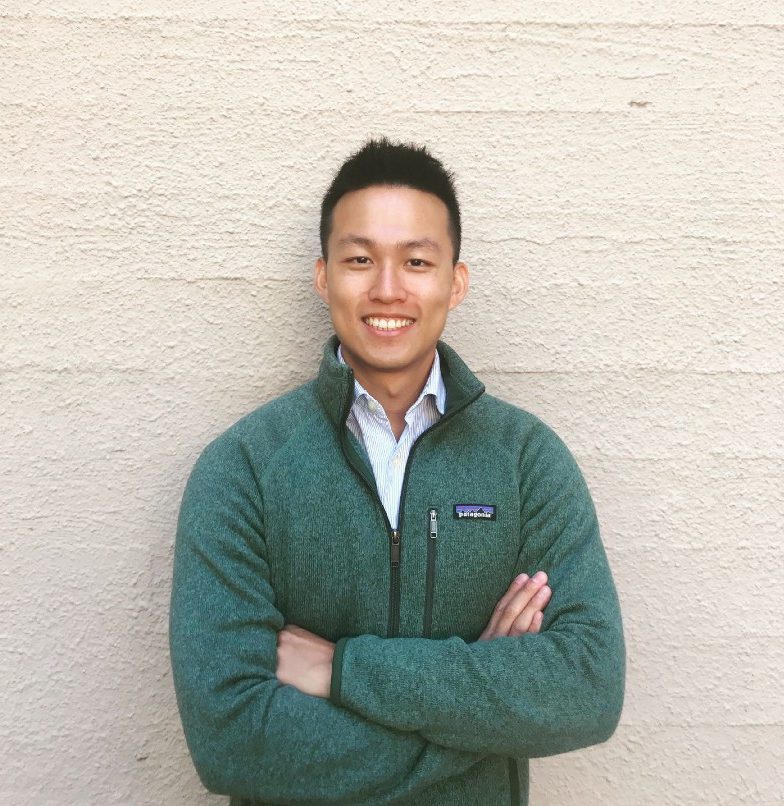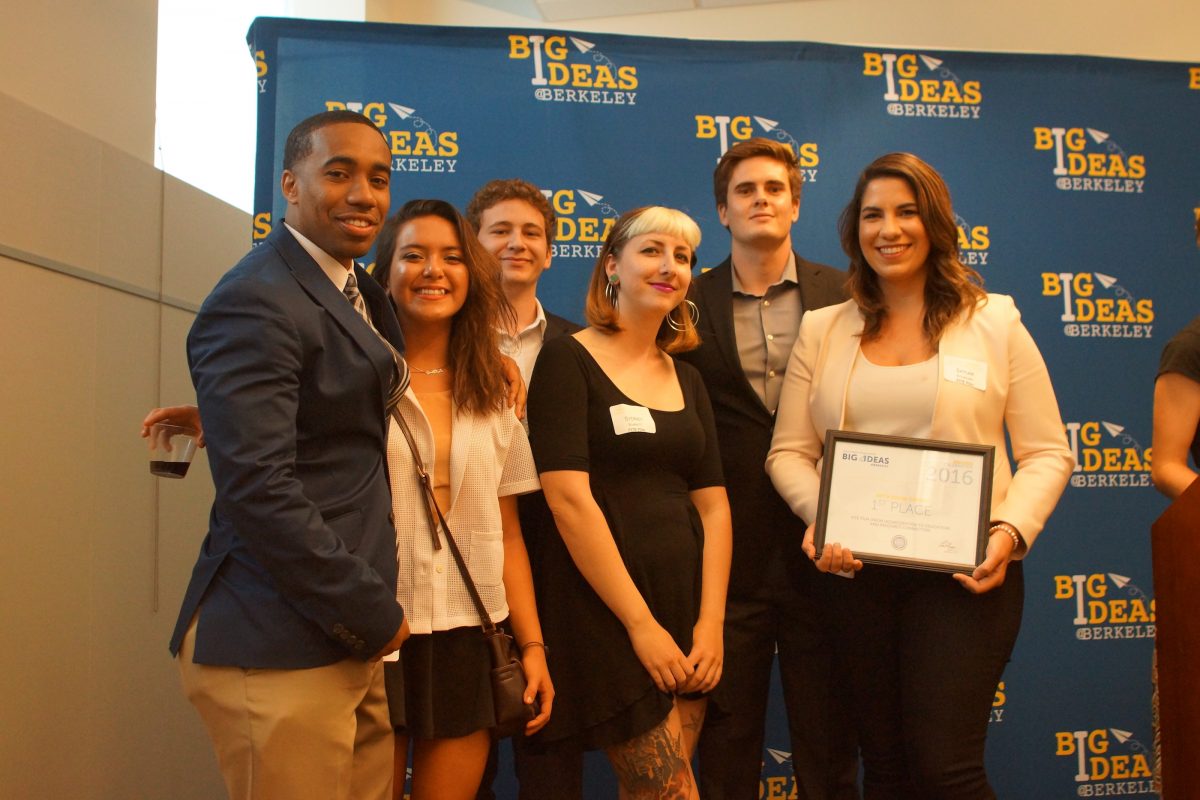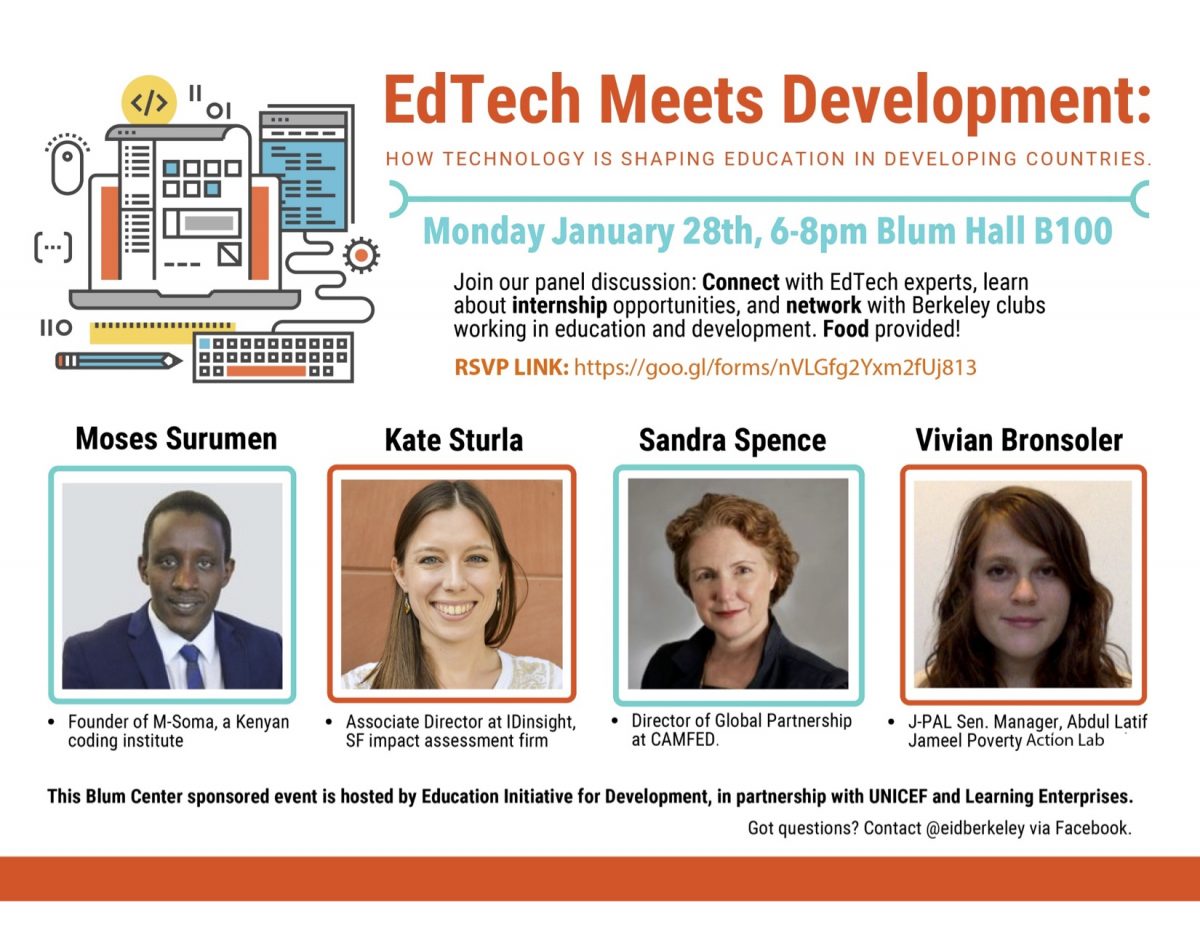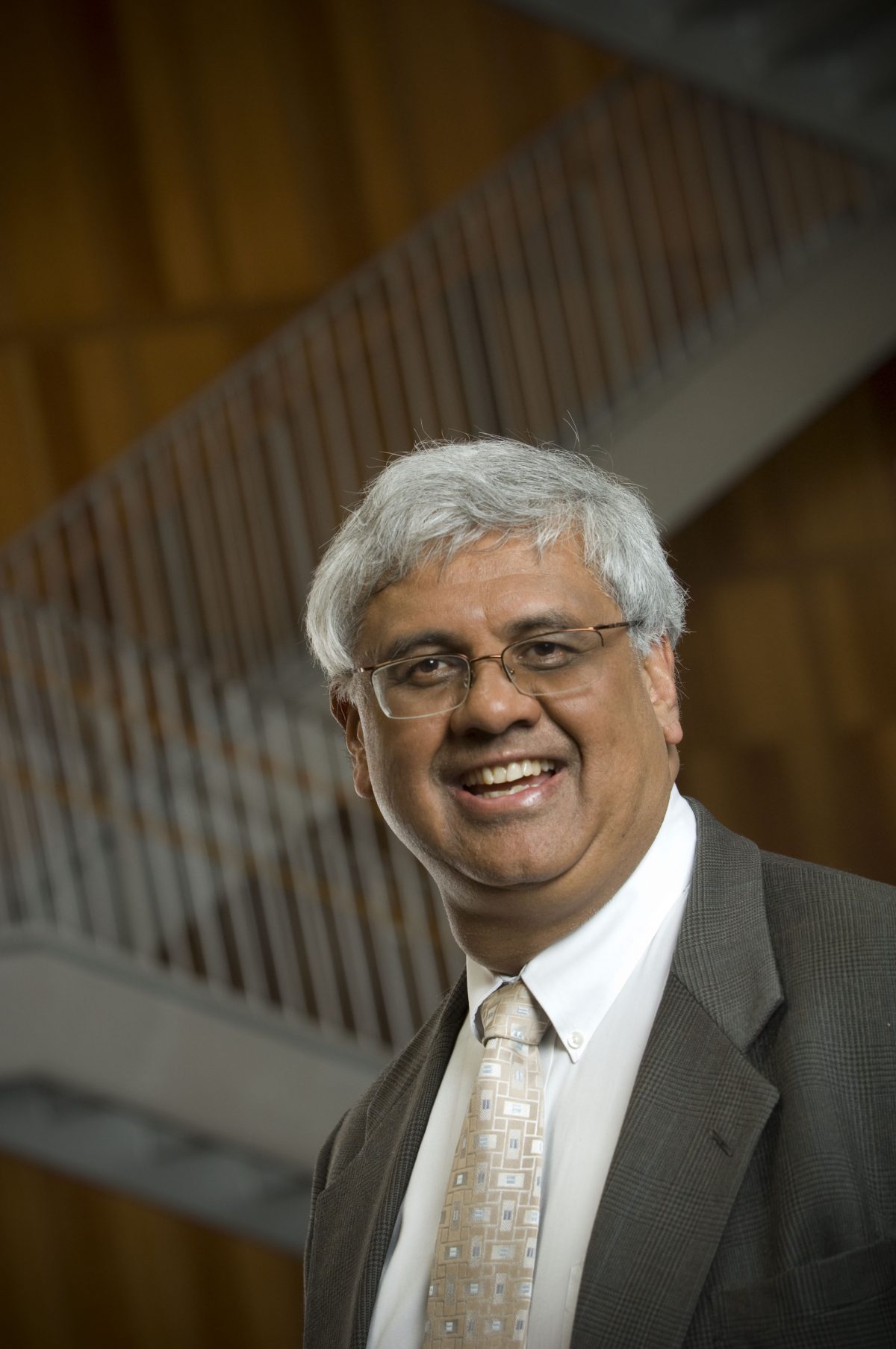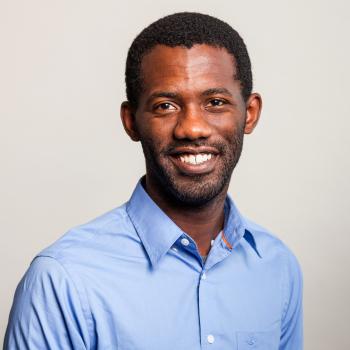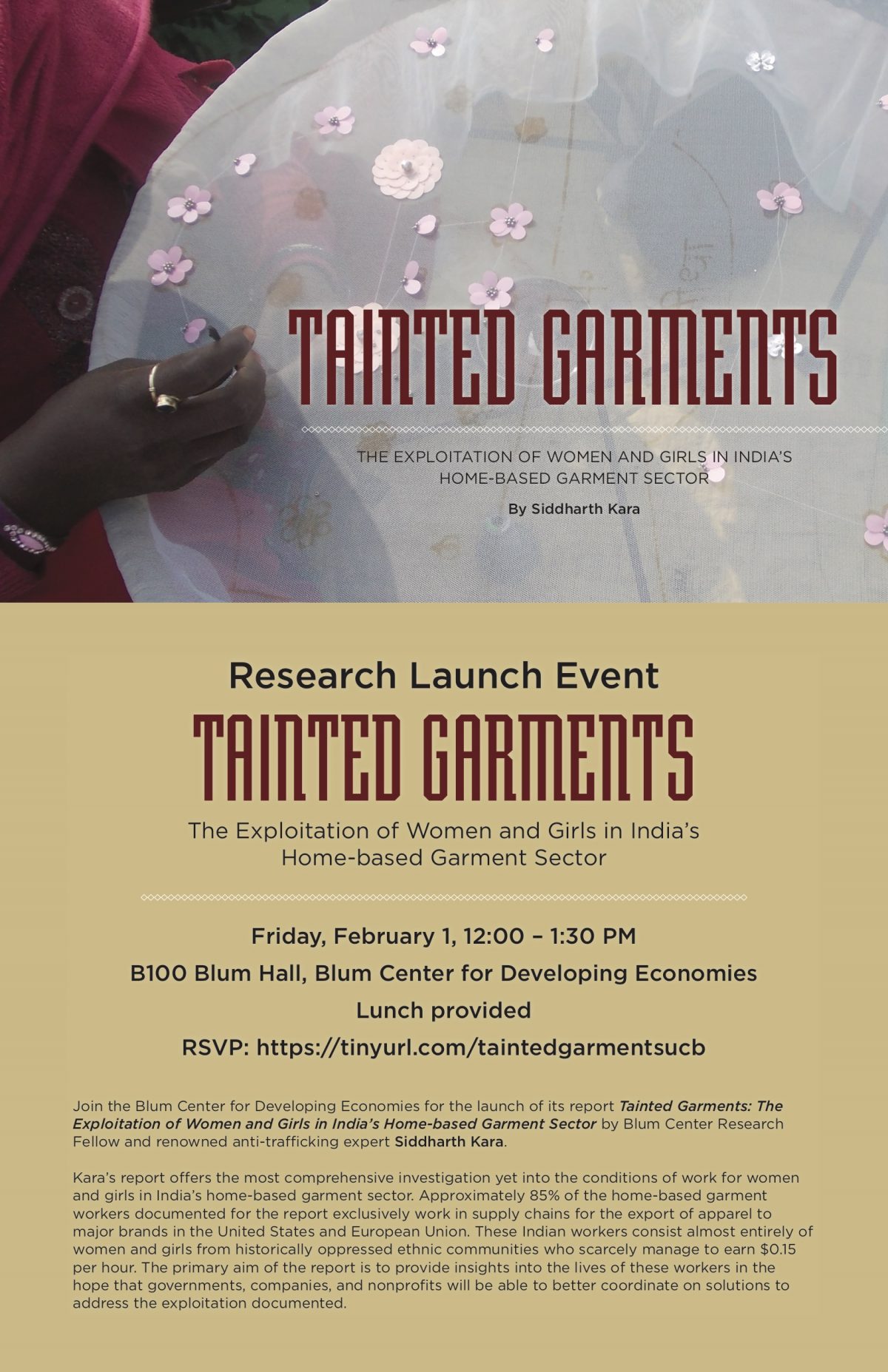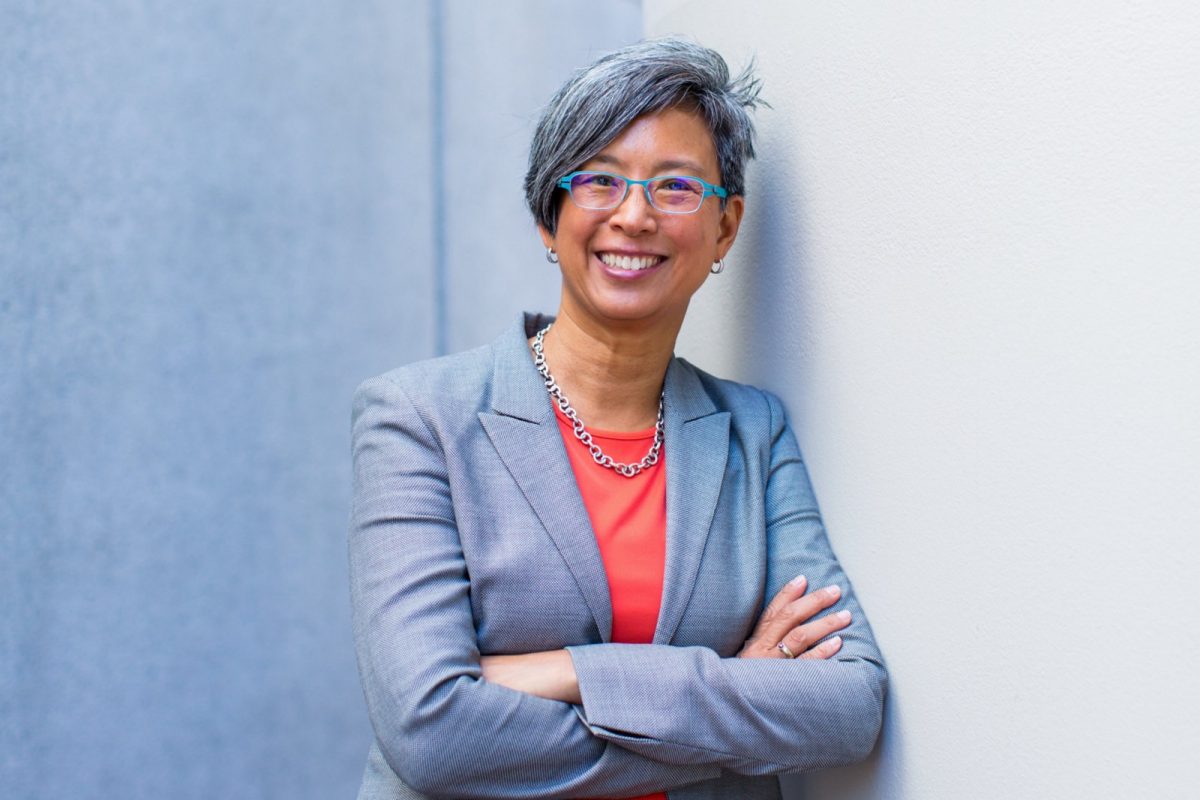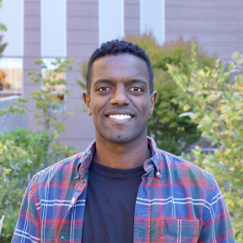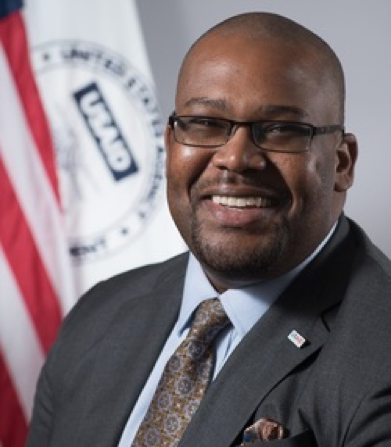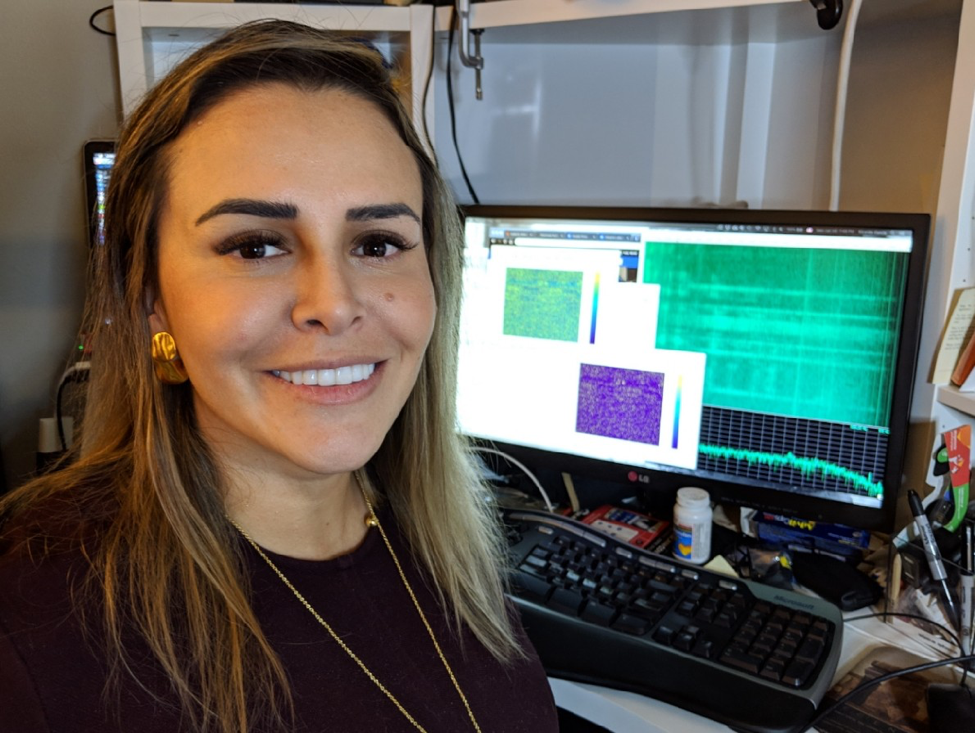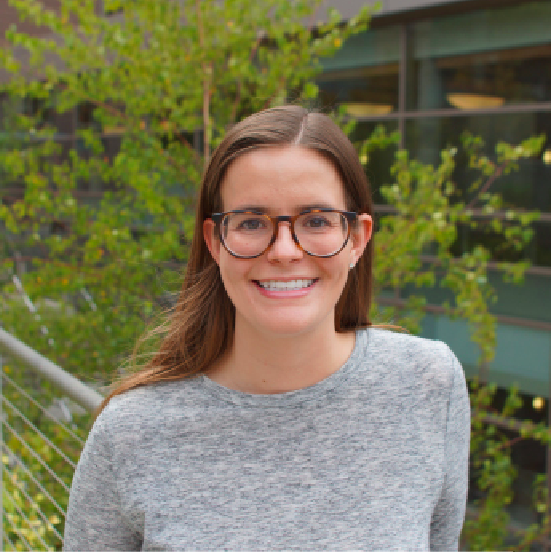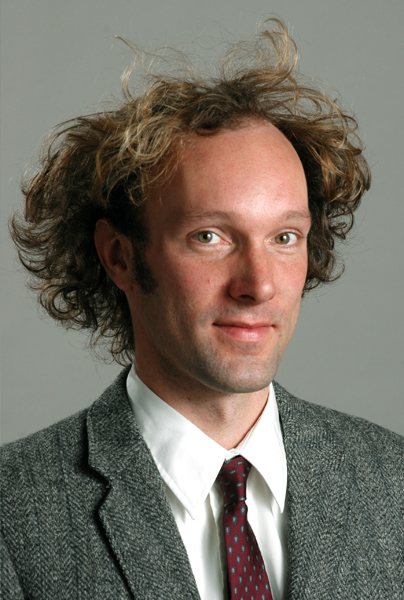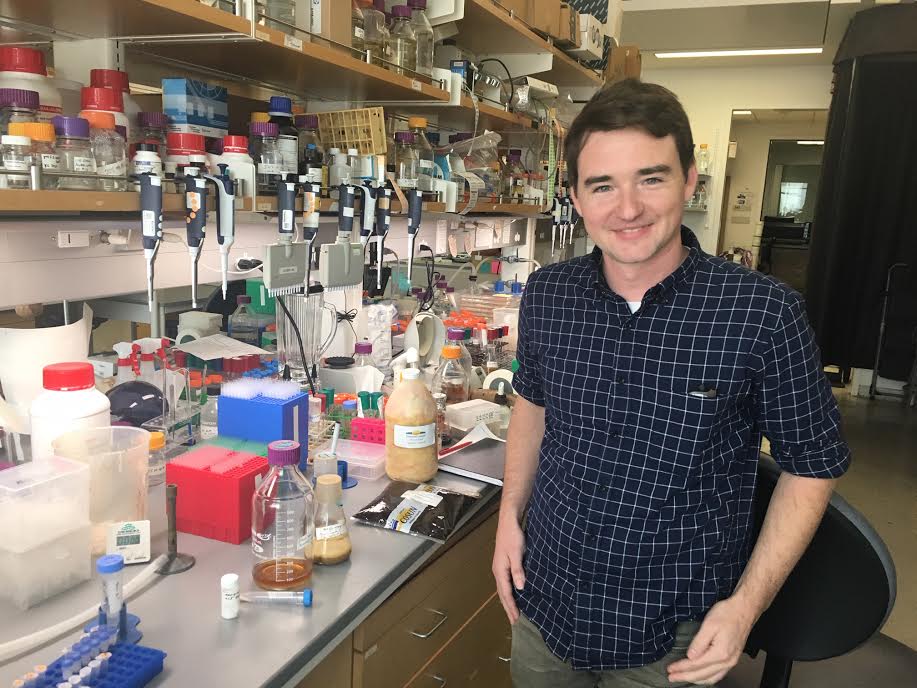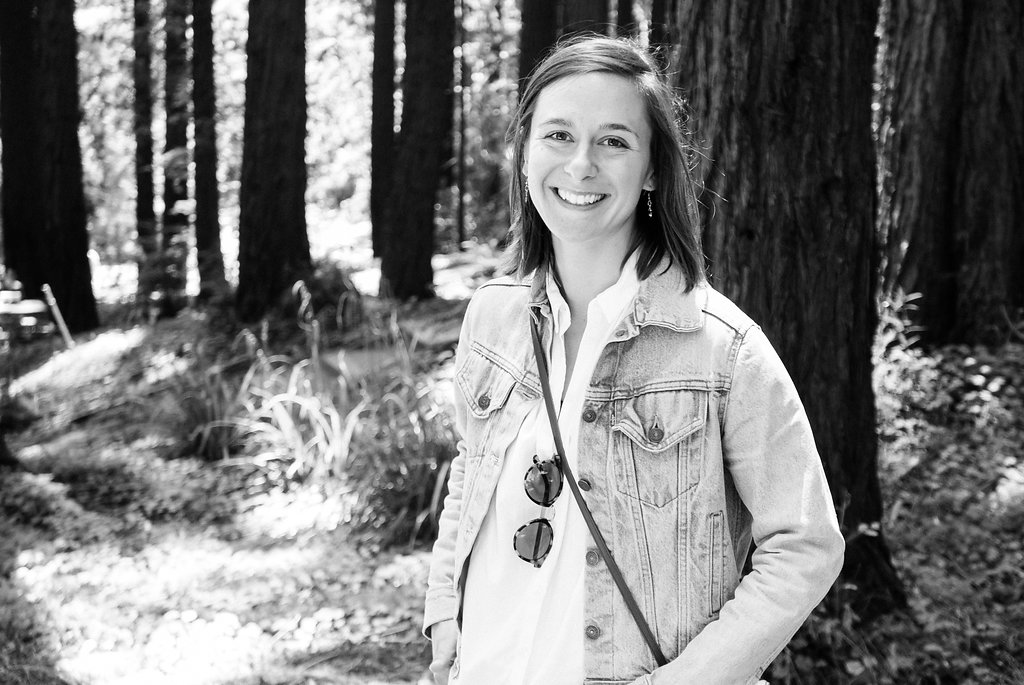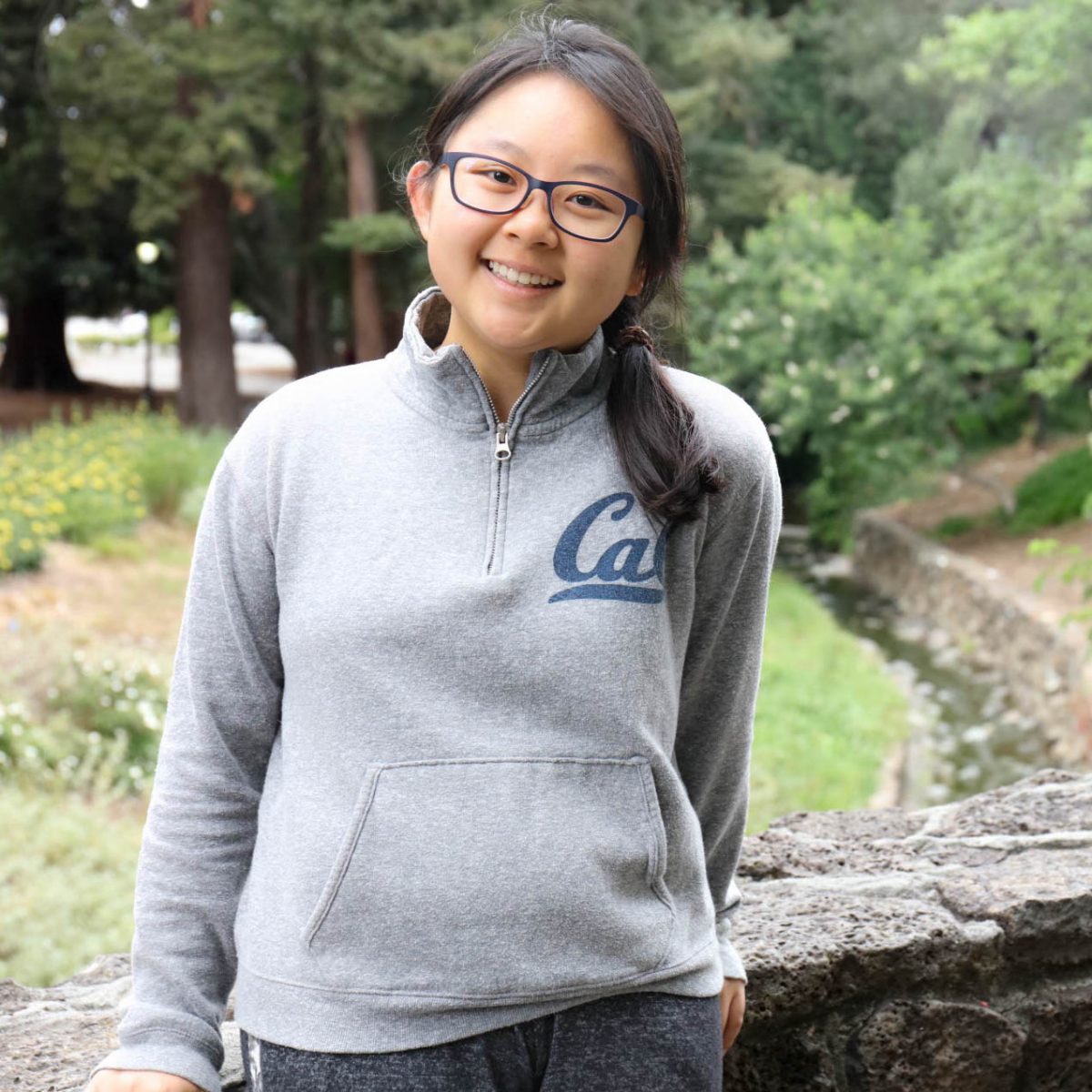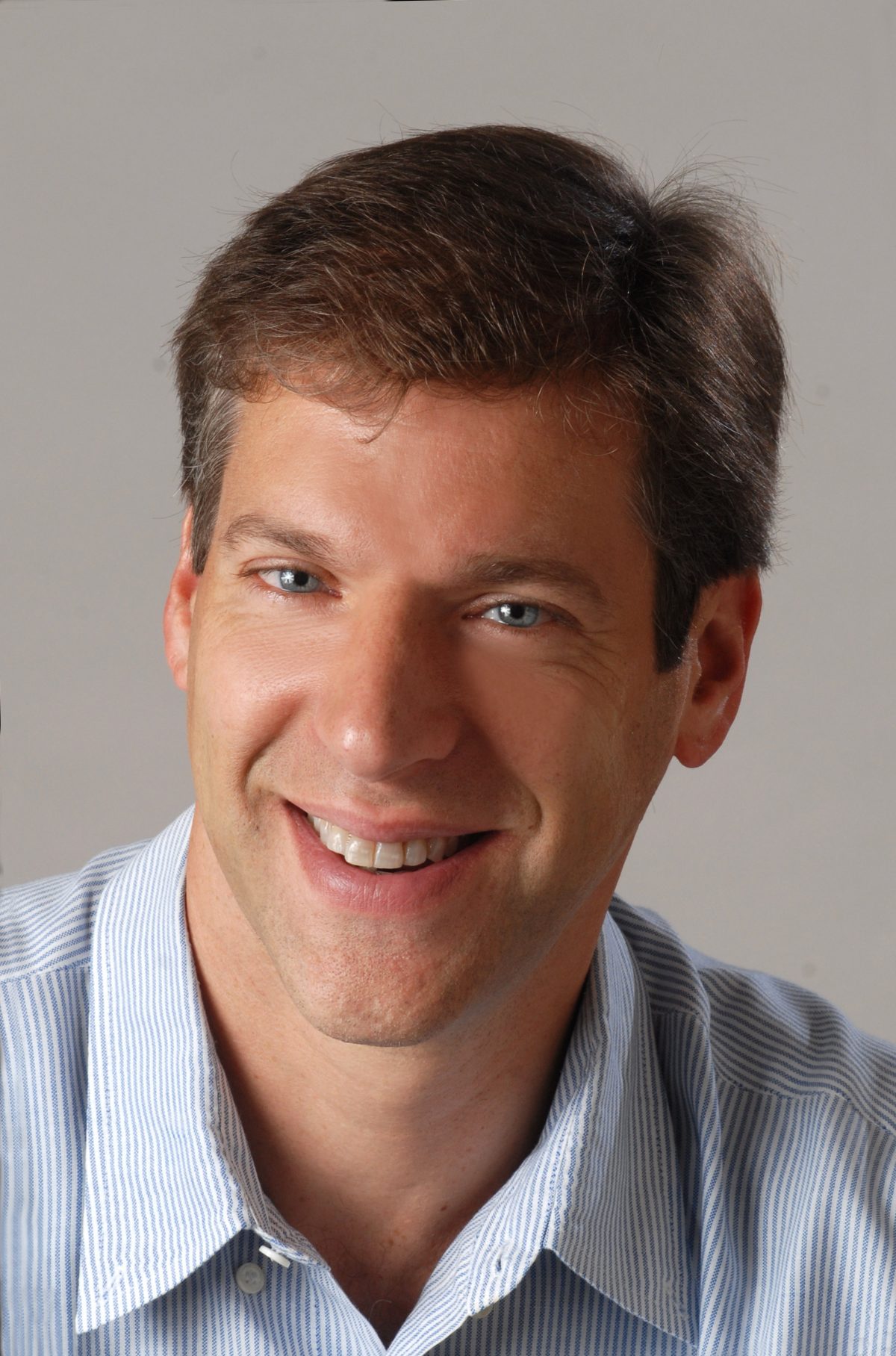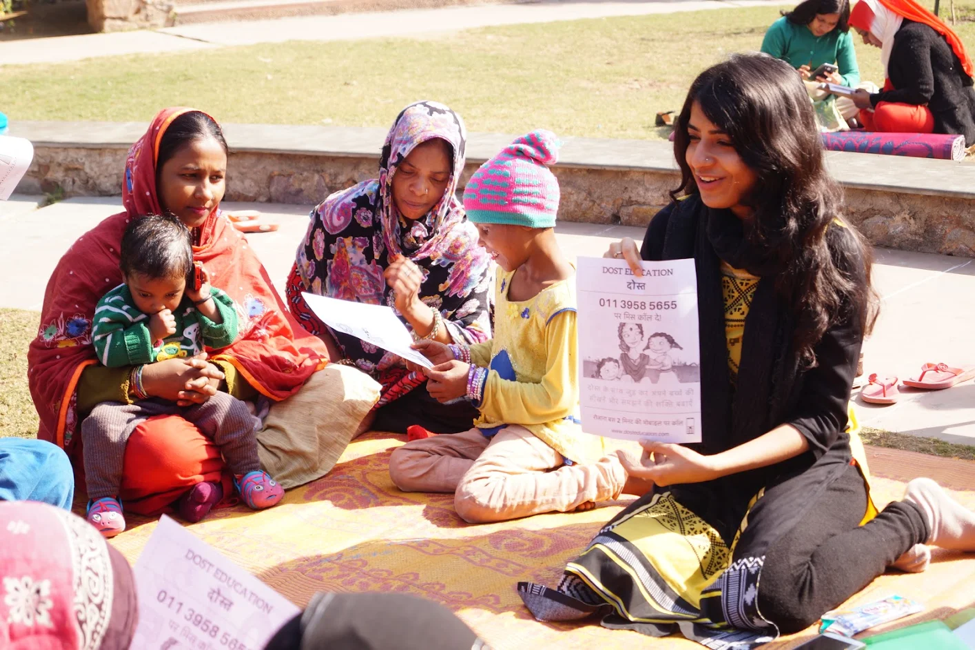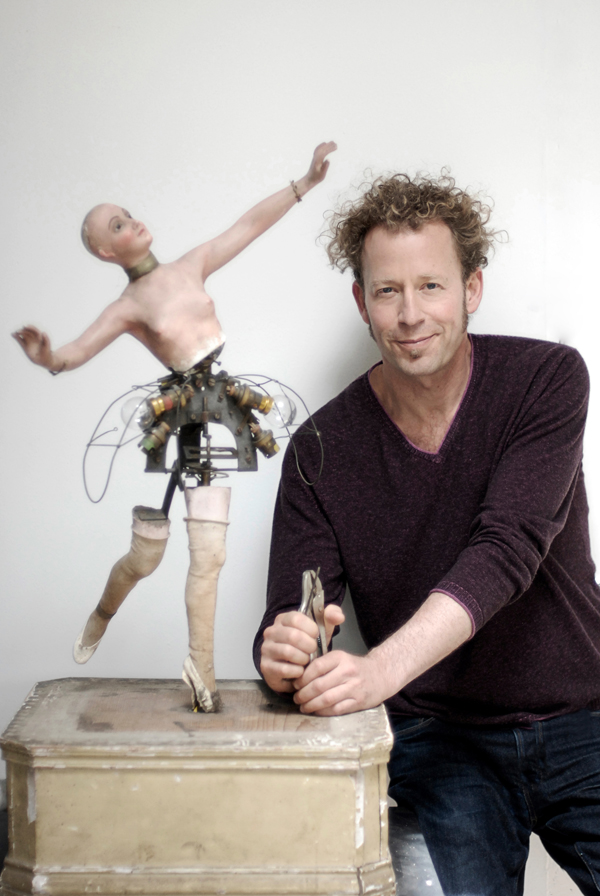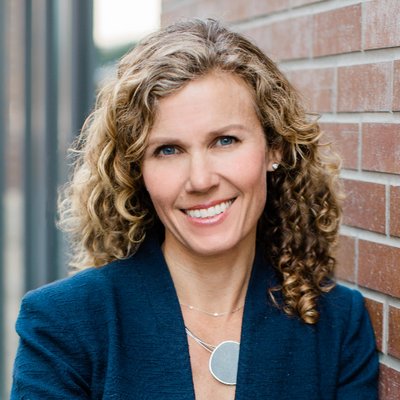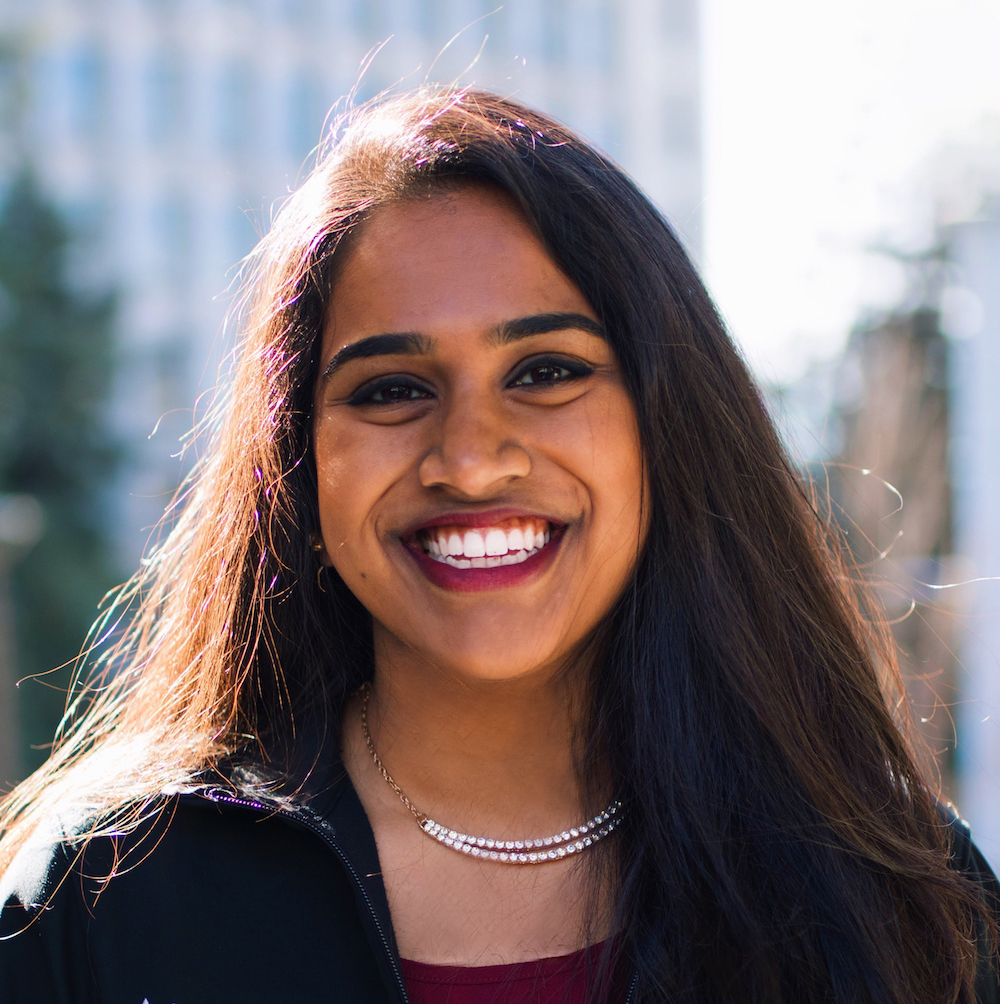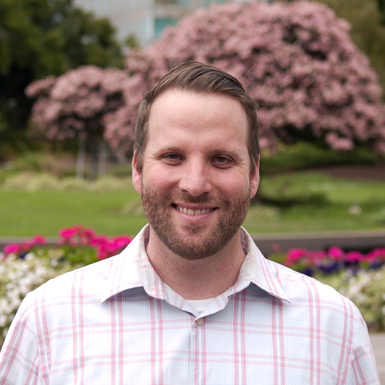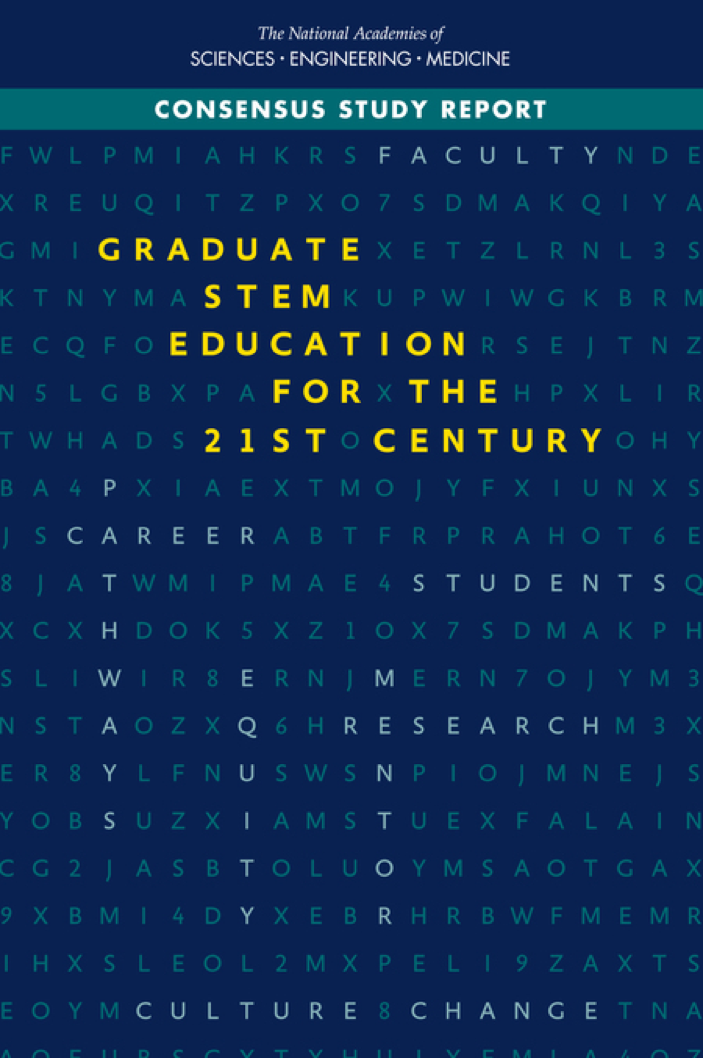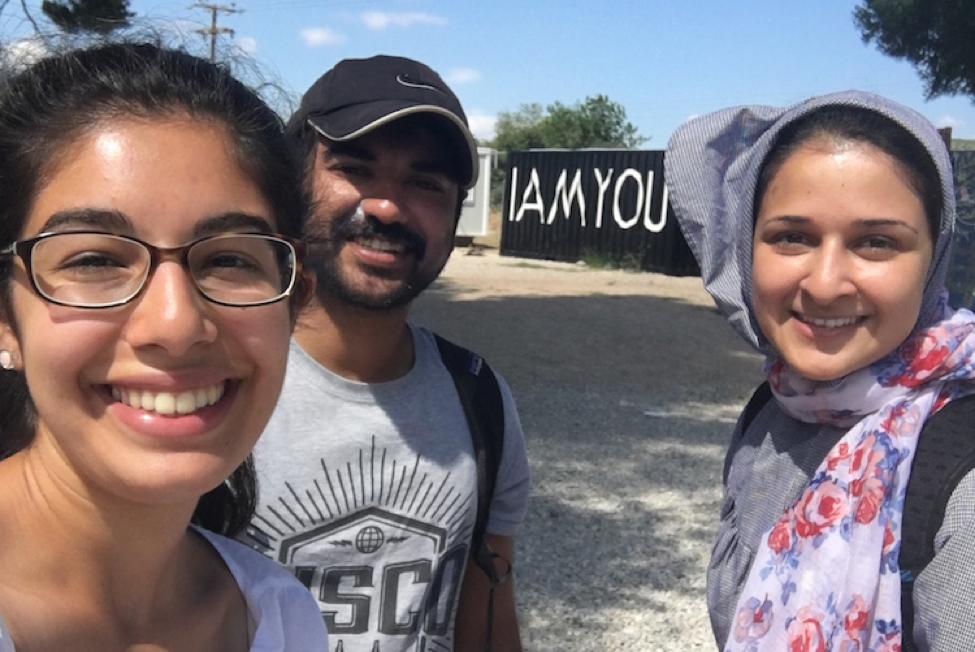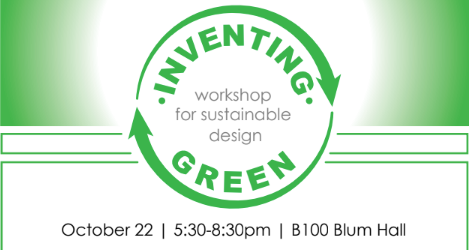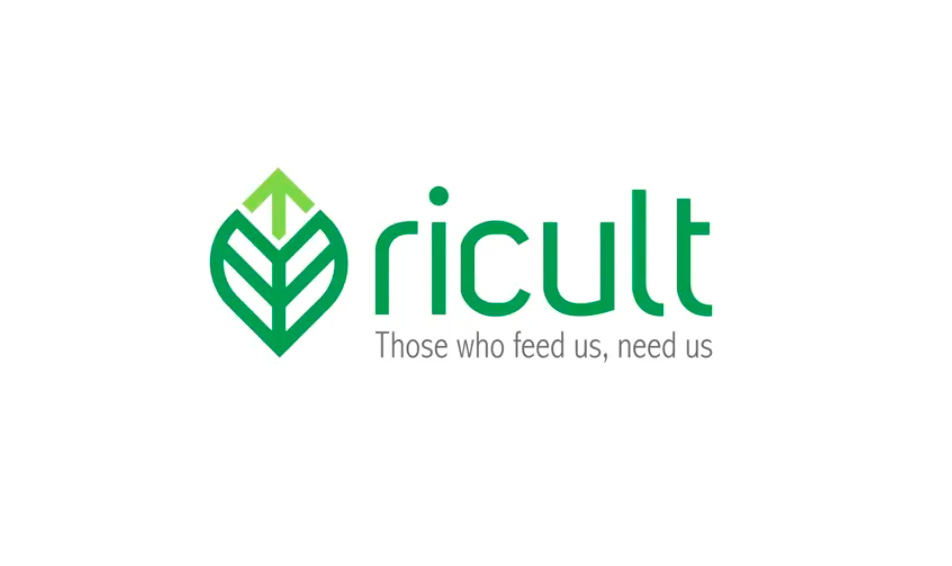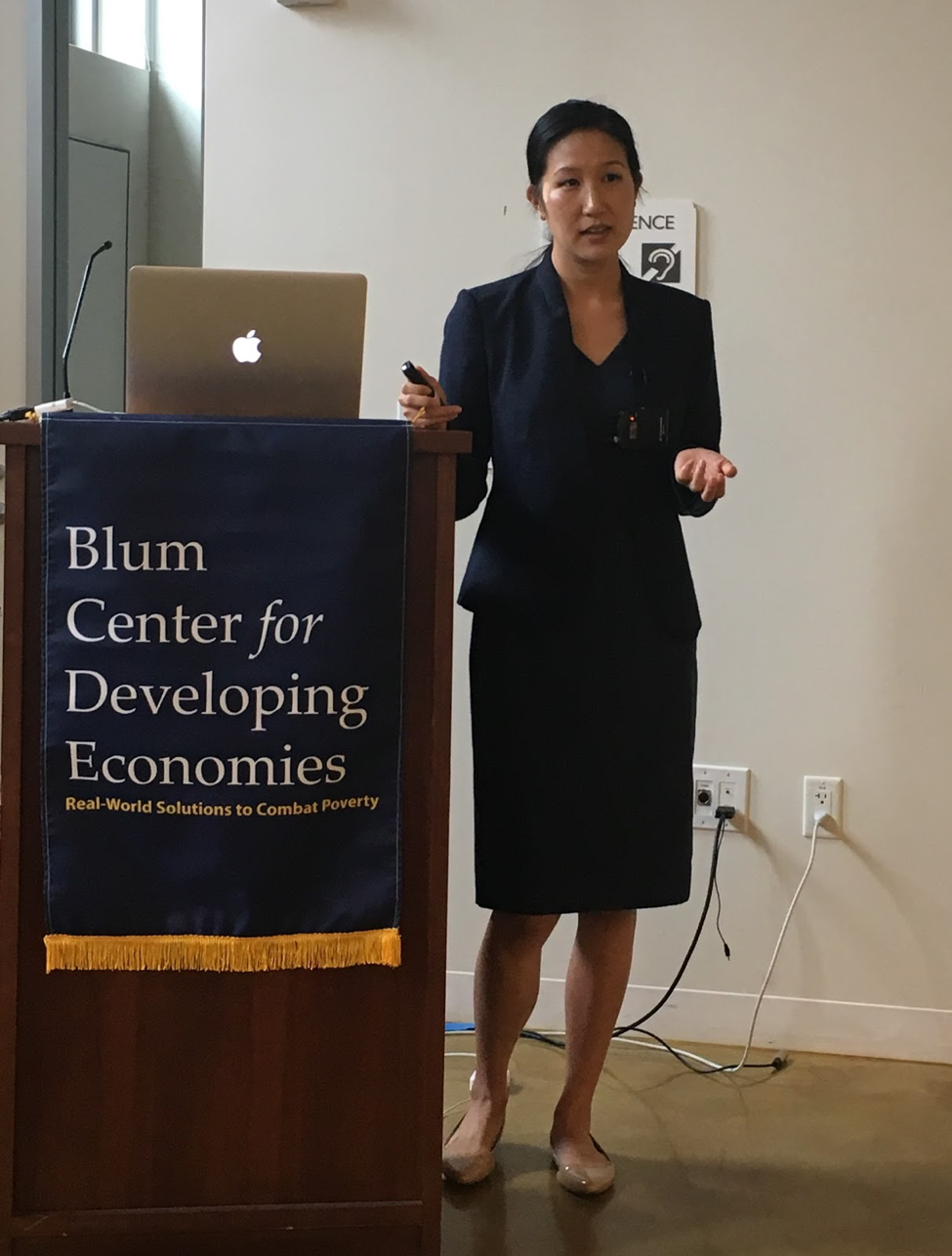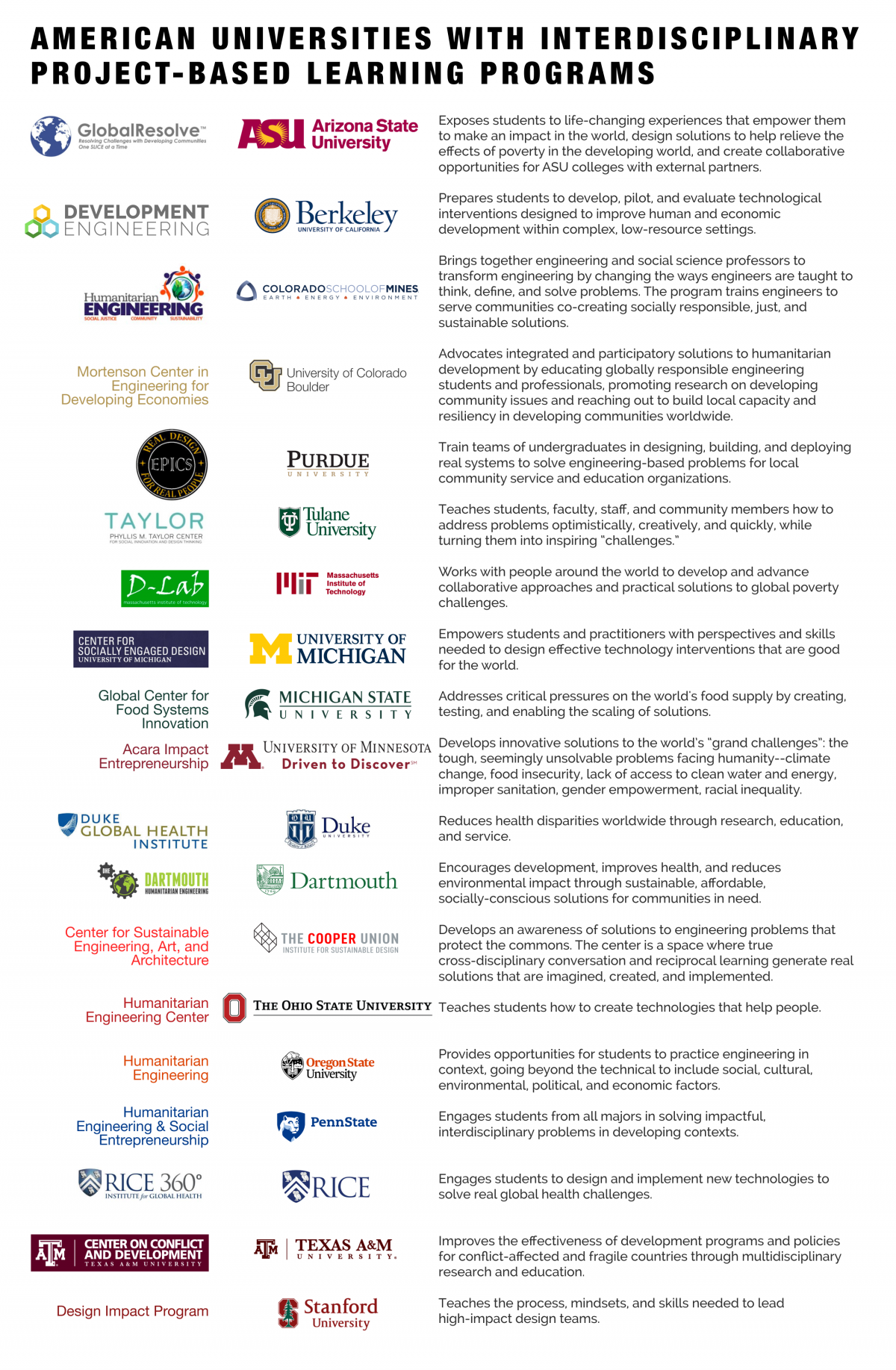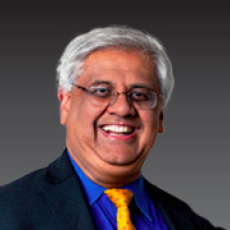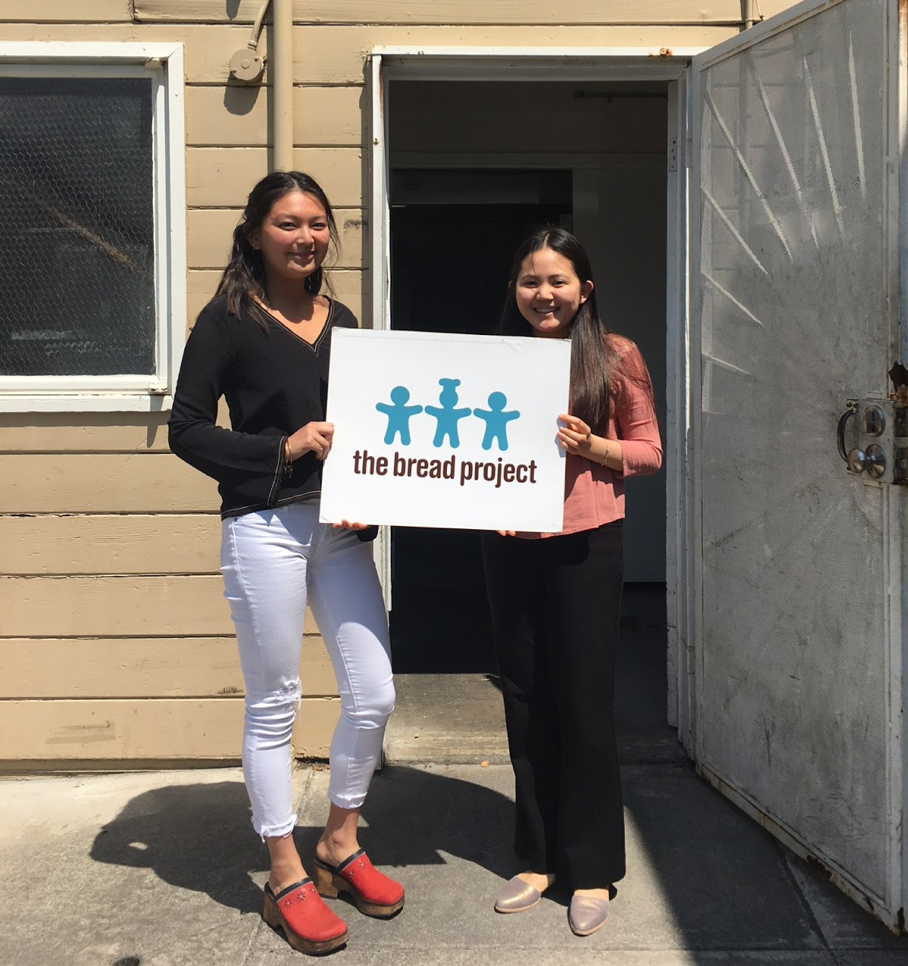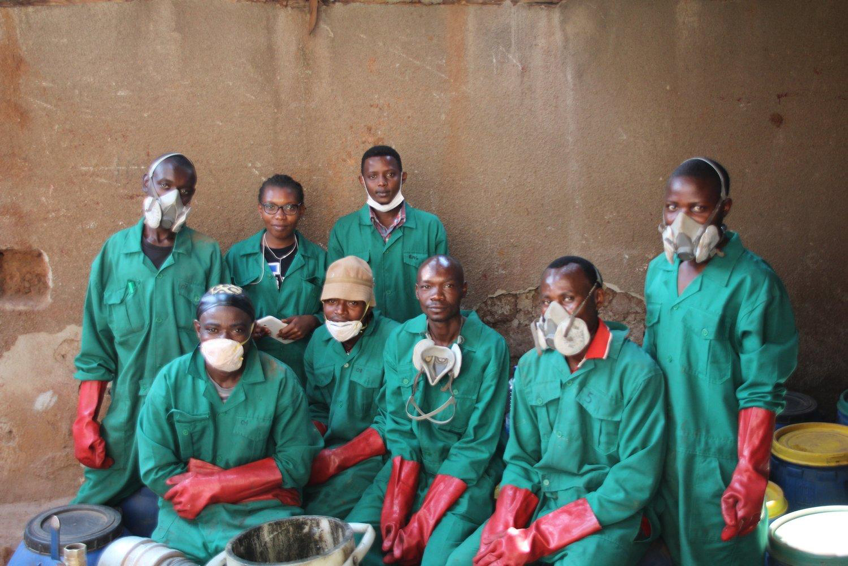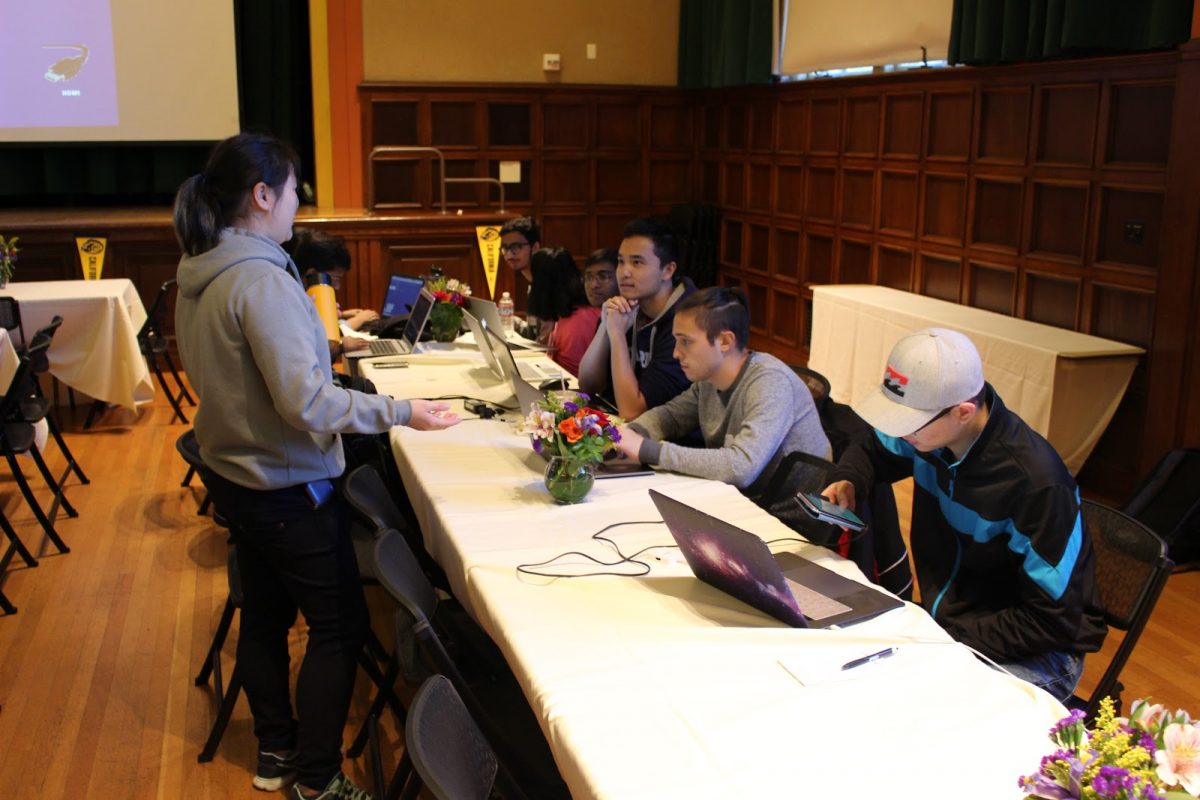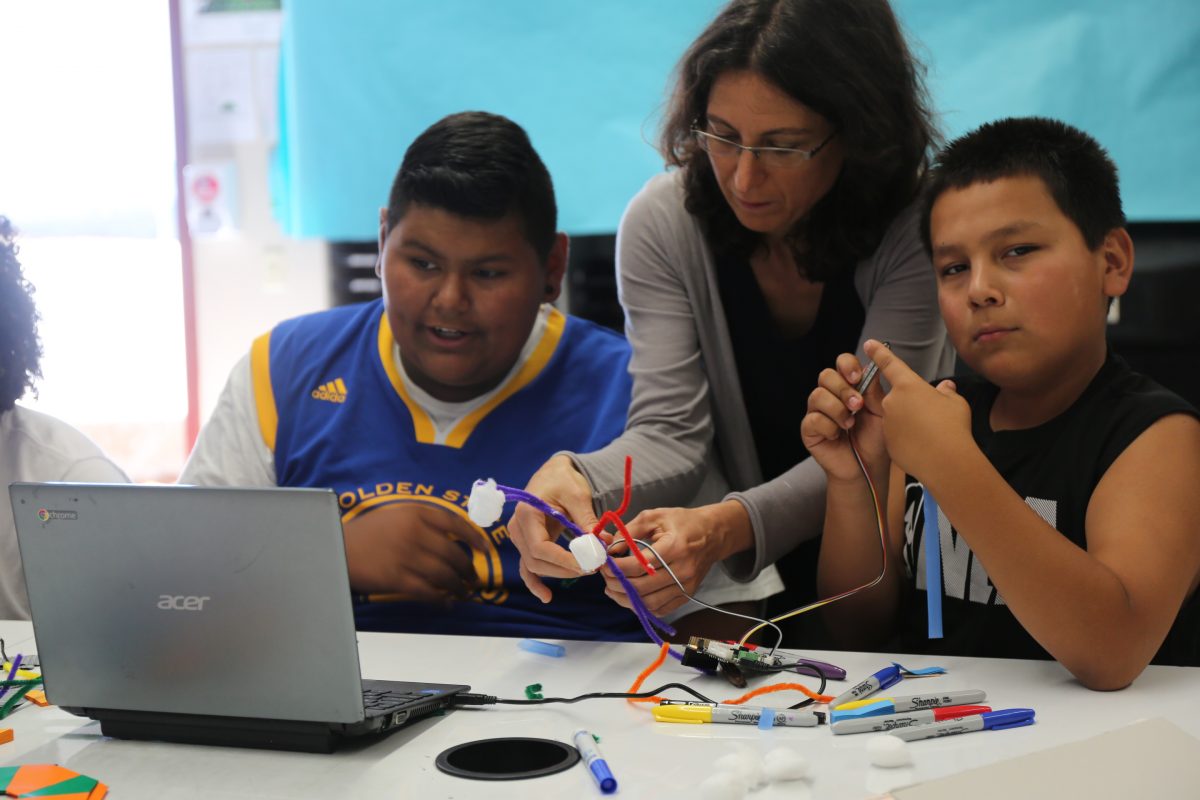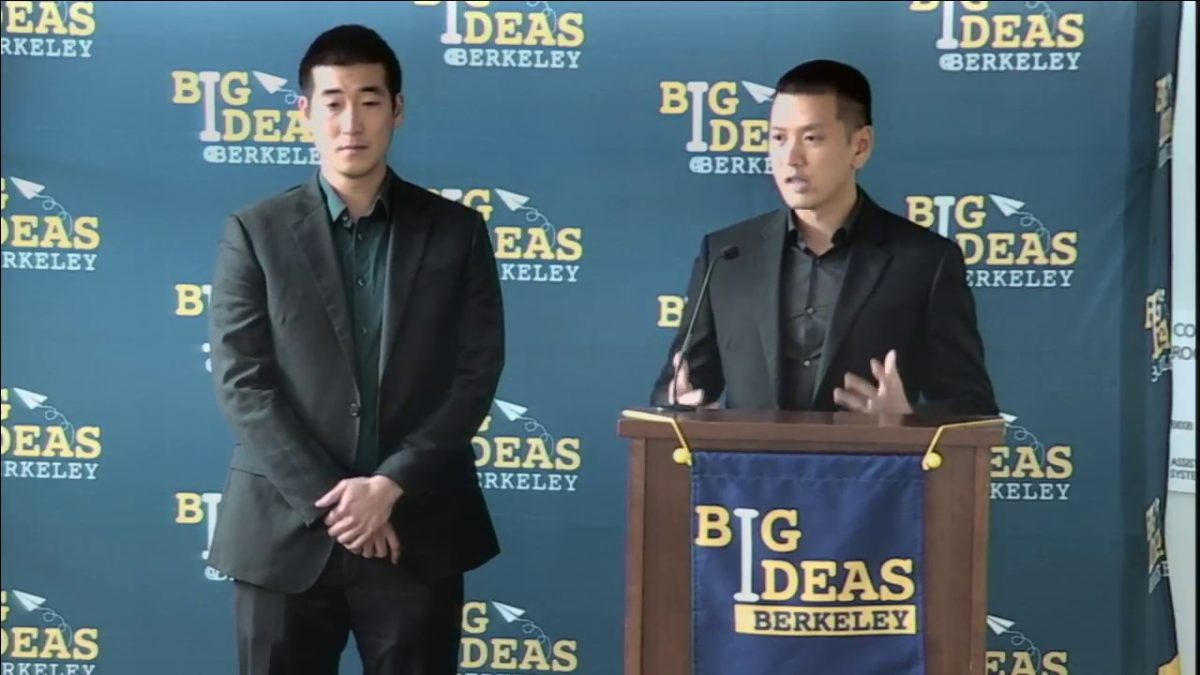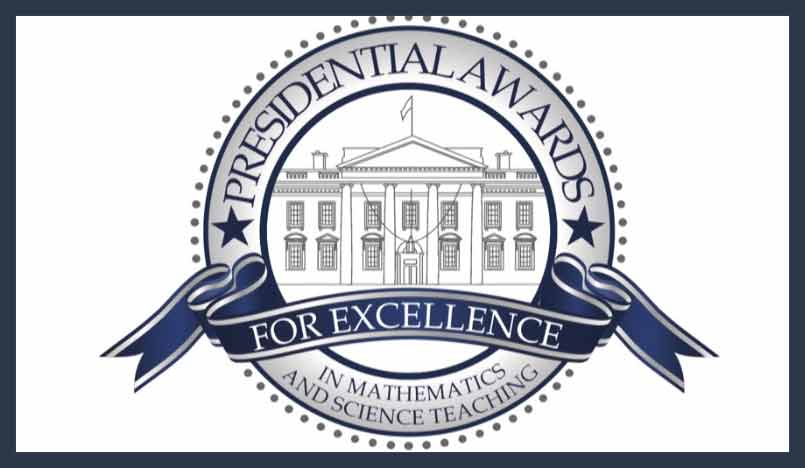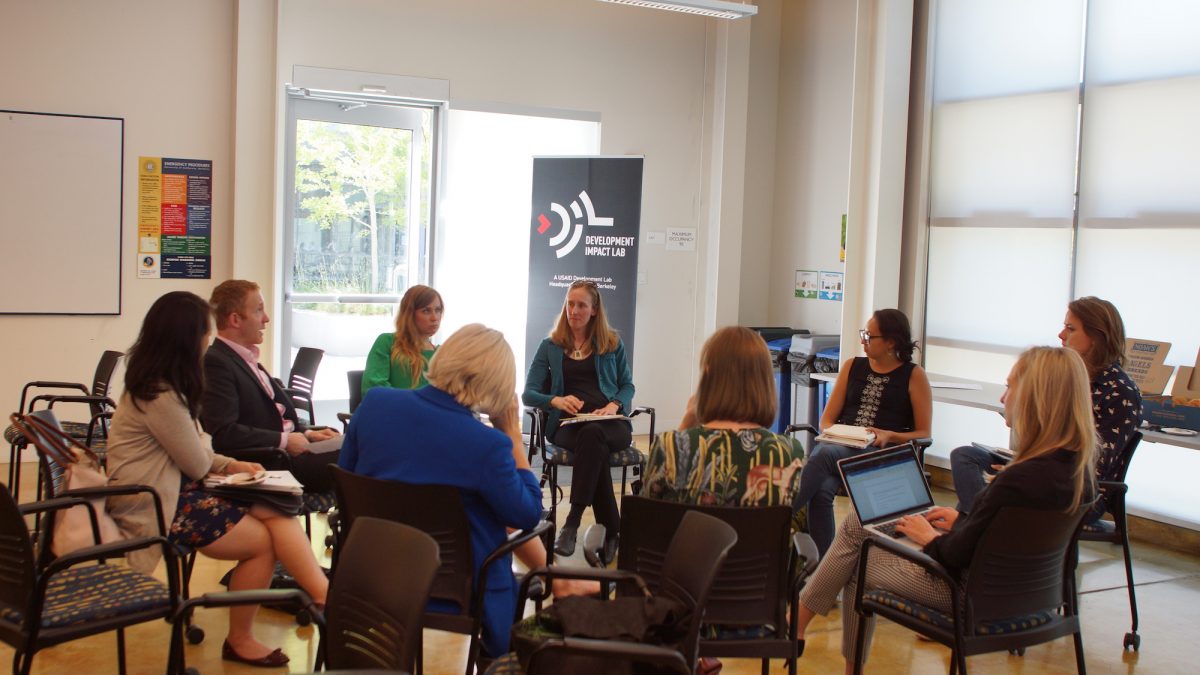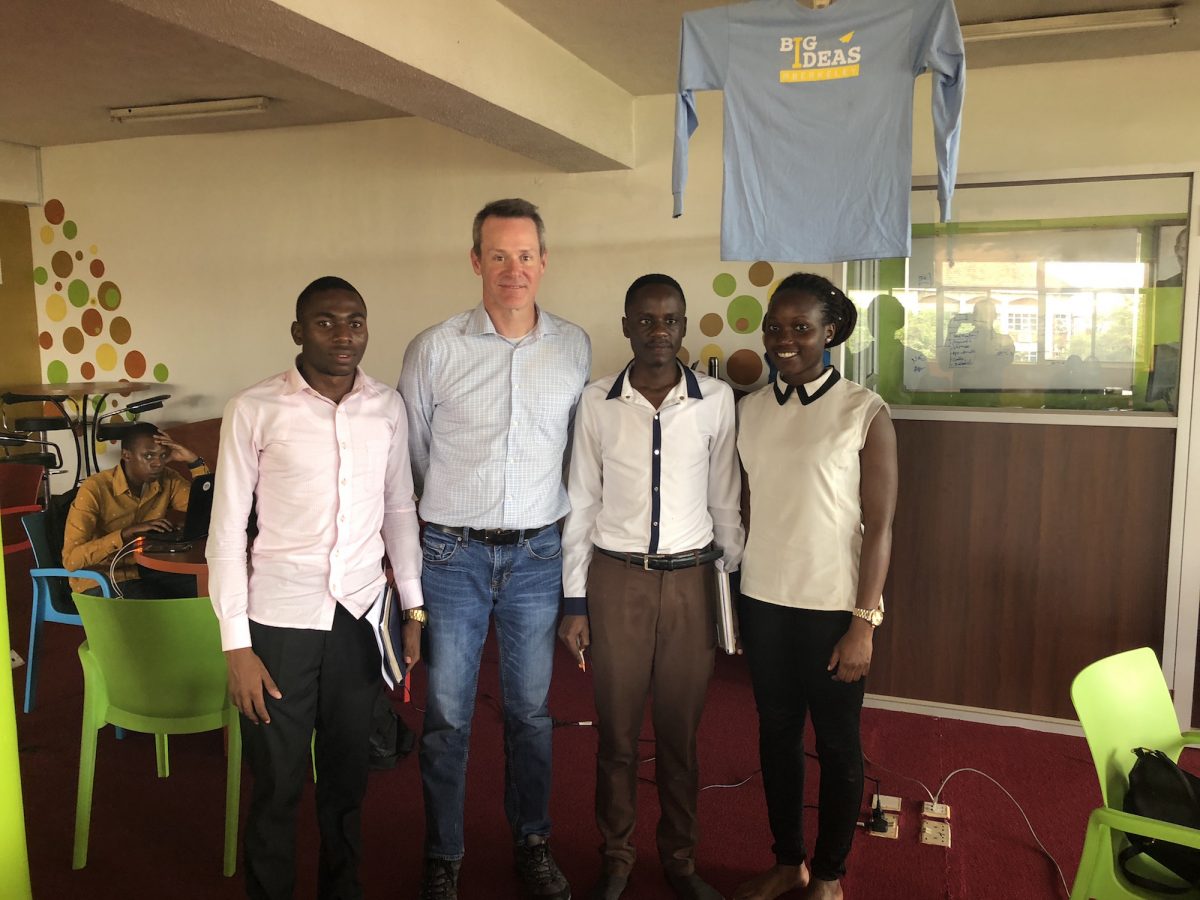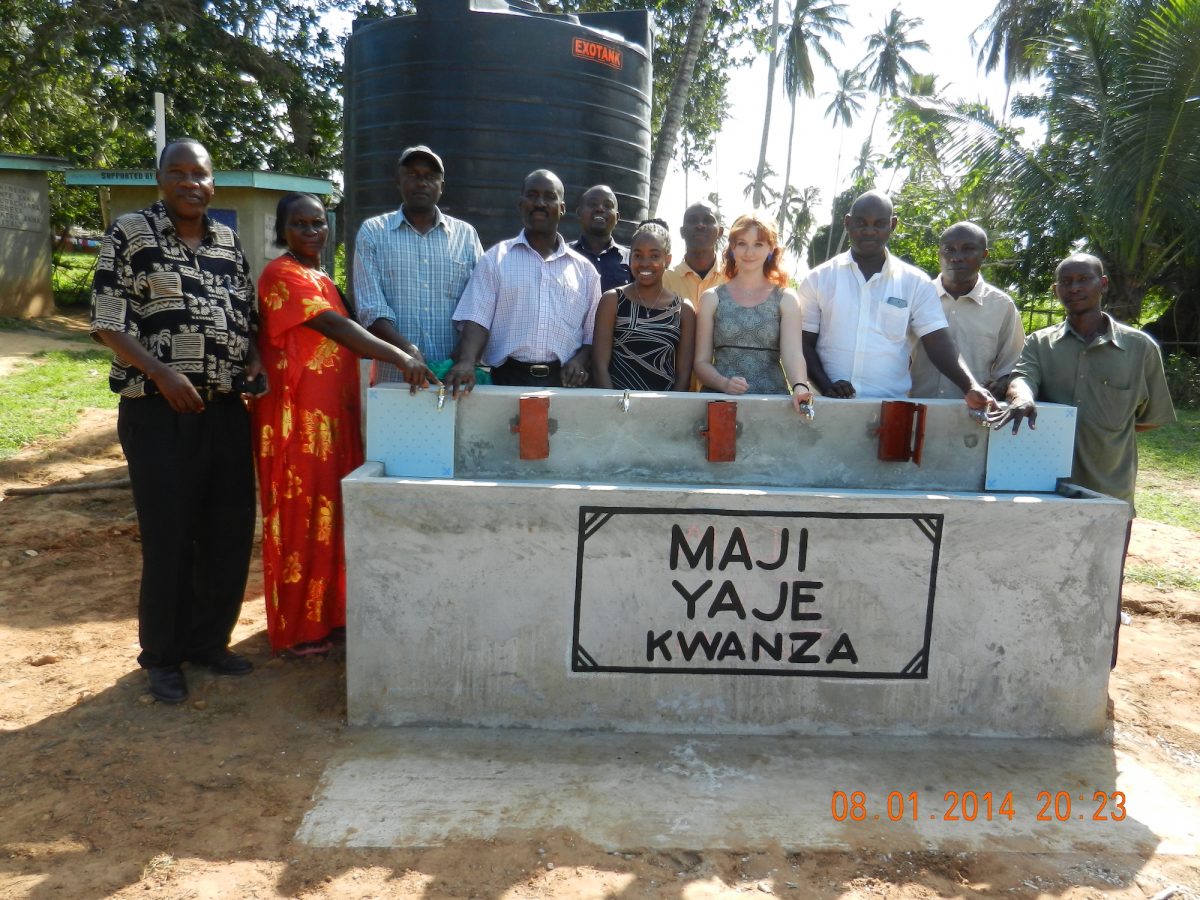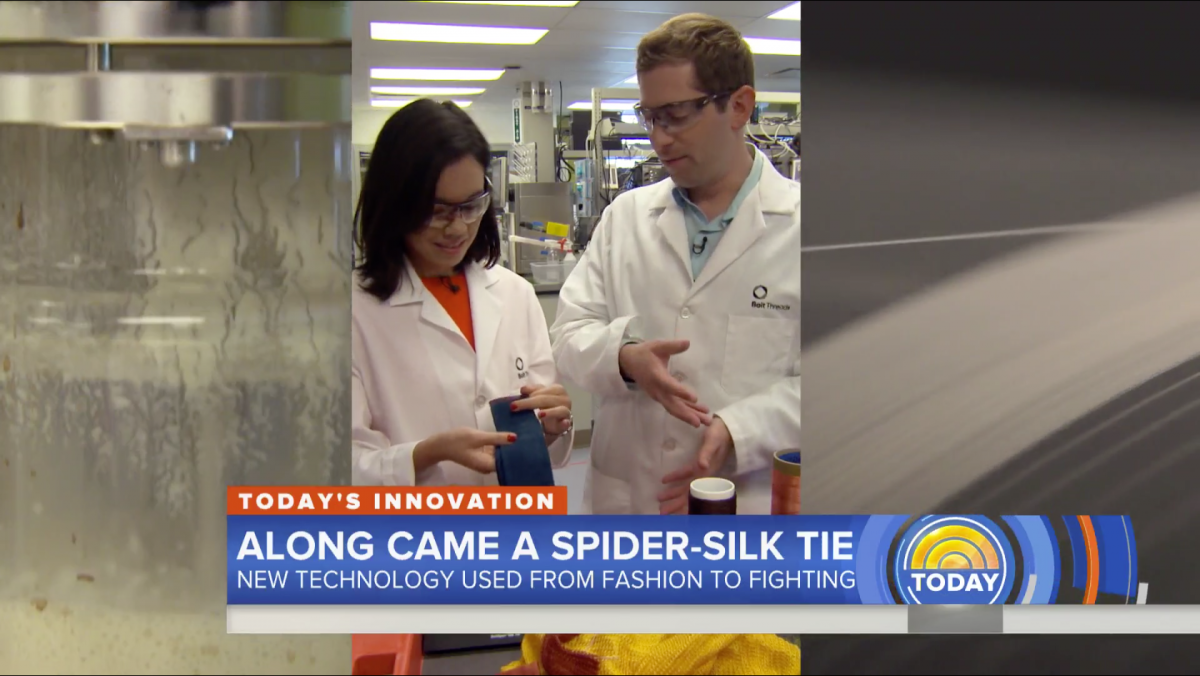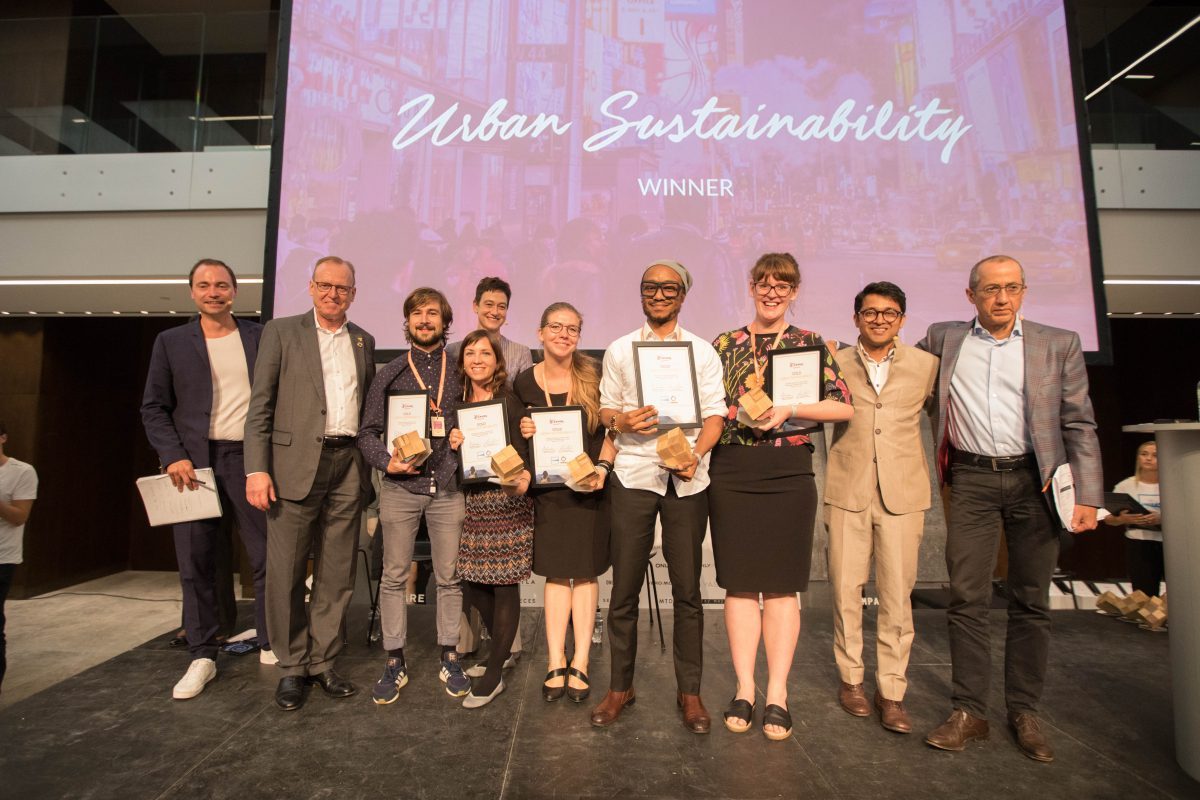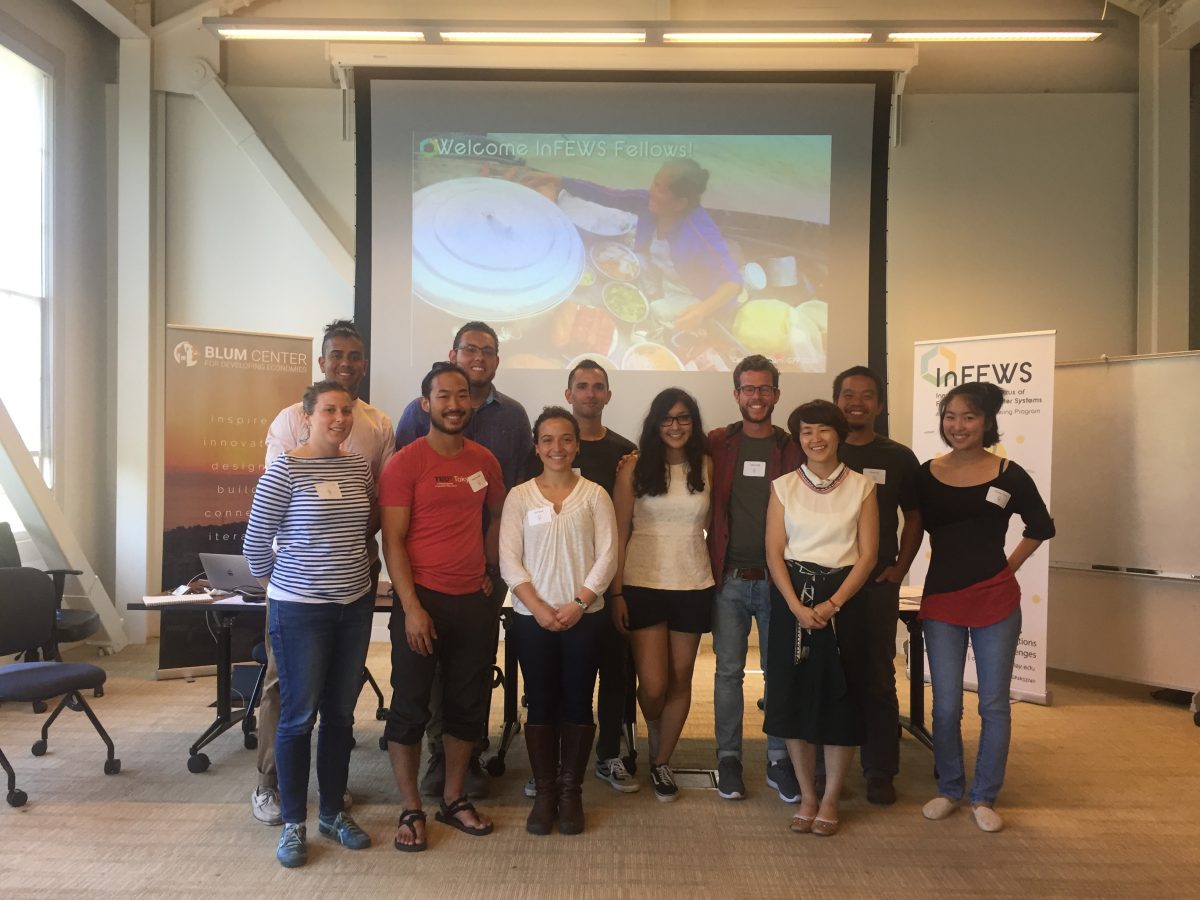In July 2014, a series of natural gas explosions ripped apart Kaohsiung, a Taiwanese city where Po Jui “Ray” Chiu, MEng ’14 (BIOE) had lived with relatives just a year before, while he was completing his compulsory military service.
Category: News
How Universities Can Support Women-Led Entrepreneurship
When Maria Artunduaga won a University of California award in 2017 for her team’s technology to manage pulmonary disease, she noted a critical factor in the victory: contest-organized mentorship from Jocelyn Brown with the Rice 360˚ Institute for Global Health.
Tread Carefully: Education Technology’s Role in Developing Countries
By Veena Narashiman ‘2020
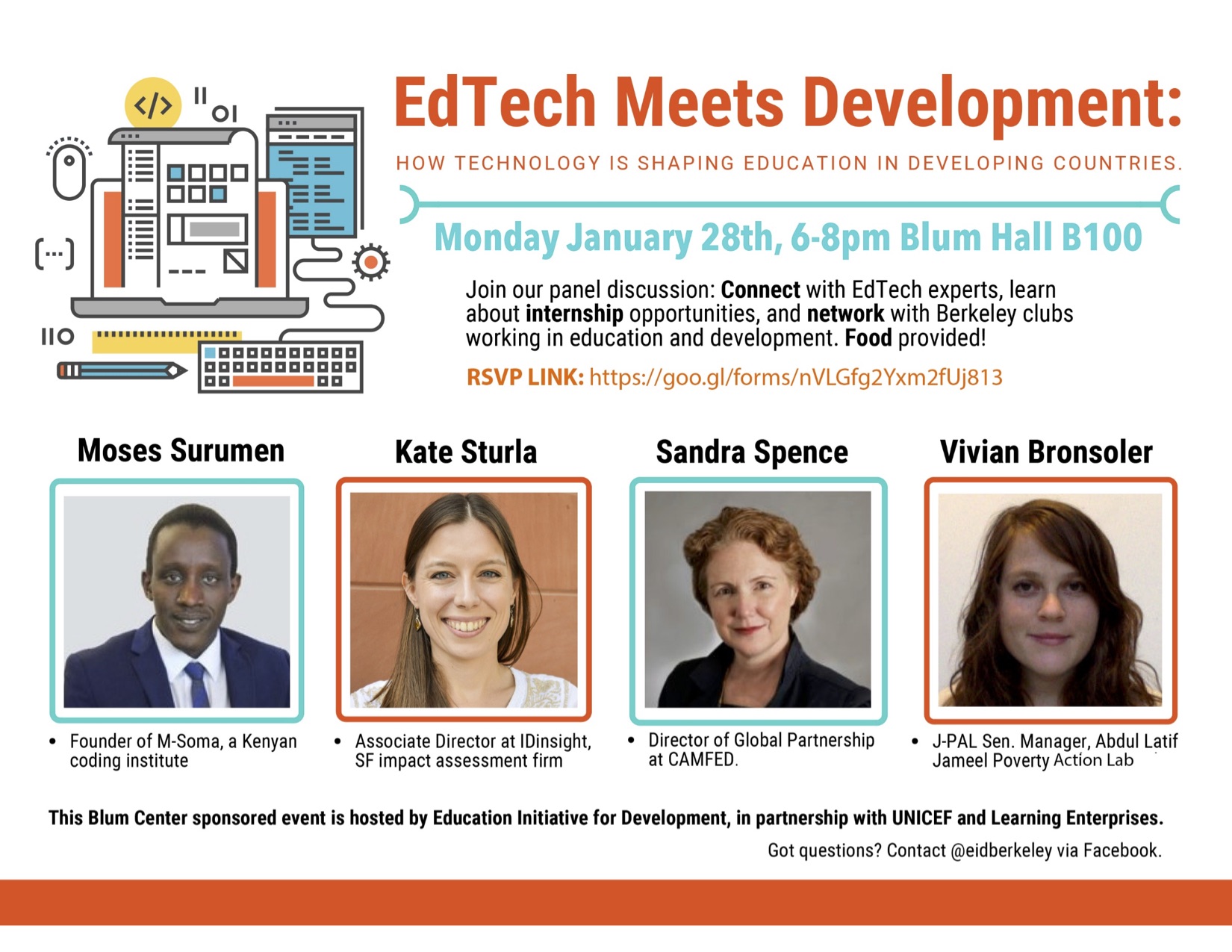 Education has long been considered a means to move out of poverty. Edtech—teaching and learning that makes use of technology—has in recent years become a multi-billion dollar sector for both developed and developing countries. And an emerging category in the sector are nonprofit organizations, backed by investors eager to spread tech literacy to improve livelihoods throughout the globe.
Education has long been considered a means to move out of poverty. Edtech—teaching and learning that makes use of technology—has in recent years become a multi-billion dollar sector for both developed and developing countries. And an emerging category in the sector are nonprofit organizations, backed by investors eager to spread tech literacy to improve livelihoods throughout the globe.
On January 28, Berkeley’s Education Initiative for Development (EID) IdeaLab, a group of interdisciplinary undergraduate and graduate students passionate about education and development, hosted four nonprofit education technology professionals to spark dialogue and provide updates on edtech’s evolution. Three of the panelists graduated from UC Berkeley and one is a current student.
The panelists included:
Kate Sturla (B.A. ‘09) associate director of IDinsight, a San Francisco-based impact assessment firm that uses data and evidence to help leaders combat poverty worldwide. Sturla manages projects in education, health, and agriculture.
Moses Surumen (B.S. ‘19), a fourth-year Cal engineering and computer science student, is founder of the Kenyan coding institute M-Soma, which teaches Kenyan high school students computer science. M-Soma currently instructs a cohort of 47 students.
Sandra Spence (MPH ‘09) is a UC Berkeley School of Public Health graduate and director of global partnerships for CAMFED, a nonprofit whose mission is to eradicate poverty in Africa through the education of girls and the empowerment of young women.
Vivian Bronsoler (MPP ‘14) is senior manager of J-Pal (Abdul Latif Jameel Poverty Action Lab), a nonprofit global research center based at MIT devoted to reducing poverty by ensuring that policy is informed by scientific evidence. With a network of 171 professors at universities around the world, J-PAL conducts randomized impact evaluations to answer questions in the fight against poverty.
The EID panel, moderated by student Paige Balcom, focused on common pitfalls of edtech to inform students about new directions in the field.
How is technology being used to support education in developing countries? How is it different urban or rural areas?
Kate Sturla: Edtech often operates in resource-poor environments—schools may not even have chairs or tables, let alone electricity. So we must be cognizant not only of physical limitations, but also that there is a thoughtful theory of change mapped out for any given edtech intervention.
Sandra Spence: When CAMFED started thinking about incorporating tech in schools, we knew it had to be very basic, especially in rural schools. In Malawi, we gave each school e-readers. The schools were able to negotiate the rights to get books for a discounted rate, which increased student exposure. In the beginning, the schools were scared the Kindles would be broken or stolen and it was hard for students to electrically charge the ebook. We encountered several hurdles to making the technology practical as we moved along.
Vivian Bronsoler: Technology can be used in innovative ways, but we have to be careful. Technology should not be a substitute for teaching or for cognitive practices while studying. For example, One Laptop Per Child [a nonprofit that creates and distributes educational devices for the developing world] had a broad goal to teach kids how to use computers. However, it hasn’t helped student learning or attainment of knowledge—it’s not a substitute. In other words, technology should be seen as a complement to teaching.
For example, technology can be helpful in less obvious ways that simplify the process of education. A website could could allow students to access homework assignments online, or a database could organize scholarships resources. A teacher could use an app to take attendance for large classes, and keep better track of grades—while parents could also access this information to be more involved in their child’s education.
What is a common misunderstanding people have about edtech in developing countries?
Sandra Spence: You can’t just drop technologies into an environment. You need to ask: What is the human platform that will support it?
Kate Sturla: People often conflate computer literacy skills with edtech. For example, access to computers can help students become more literate in how to actually use the device (i.e., typing) versus helping a student actually learn a subject, like math. We should also make sure we teach at the correct level and give teachers the tools to target students at different learning levels.
Vivian Bronsoler: Edtech is attractive to people who want quick solutions—it can seem like a solution, but money can often be better spent better somewhere else. It’s wrong to copy and paste an intervention from one context to another or say you have an innovative idea without actually testing it.
How do you think Berkeley students can make a difference in edtech?
Moses Surumen: Take an education class. We can’t develop apps without understanding of how people learn.
Vivian Bronsoler: During your college career, you learn the tools and theories to get trained on various poverty interventions. But then, once you are in the professional world, various realities exists and challenges arise. Volunteer anywhere you can to get some real-world experience—really be engaged. Learn as much as you can— you can use it in practice.
Sandra Spence: Don’t get swept away by technology. Be part of the wave that is thoughtful about the application of technology. Ask: How does technology fit into the environment? Is it empowering? Are you listening to the people closest to the problem?
Kate Sturla: IDinsight began as a graduate project. Being a student is the best time to build bridges across disciplines and majors and take classes to get different perspectives. Push yourself to take a class outside of your major to get a different angle.
Interested in joining the Education Initiative for Development IdeaLab? Contact IdeaLab Co-Directors Samuel Cabrera (samuel_cabrera@berkeley.edu) and Bei Zhang (bzhang_1900@berkeley.edu).
A Watershed Moment in Global Poverty Reduction
Shankar Sastry
Two thousand and eighteen has been called a watershed moment in global poverty reduction. It was the year—according to two major analyses—that more than half of the world’s population moved into the “middle class.” And it was marked by a billion people moving out of “extreme poverty” in the time period 2000-2018.
In terms of the global middle class, Homi Kharas and his colleagues at the Geneva-based World Data Lab have written in a Brookings Institute report that this demographic is defined as households that spend $11 to $100 per day per person in 2011 purchasing power parity. Kharas acknowledges that middle class does not have a precise international definition, but is a way to understand the ability for 3.8 billion people to buy consumer goods like motorcycles, refrigerators, or washing machines, go to the movies or take a vacation—and, most important, be able to weather economic shocks like short-term illness or unemployment without falling into extreme poverty.
The global middle class is predominantly Asian and spread out in China, India, and South and South East Asia, where urban populations have mostly doubled in the past generation. The World Data Lab forecasts the global middle class markets in China and India will grow to 5.3 billion people by 2030 and will account for $14.1 trillion and $12.3 trillion, respectively, comparable in size to a U.S. middle-class market at that time of $15.9 trillion.
That is a remarkable turn of events of great interest to policy makers, corporate leaders, and of course academic researchers at the Blum Center. Questions include: What are the products and services that this global middle class needs and wants? What are the implications for food, energy, and water production, and laterally, for climate change due to this socioeconomic growth? What skills and education are required for this rising population to sustain its progress? How will societal digital transformations, such as AI and automation, thwart or abet the billions climbing the economic ladder? And to what degree is this new global middle class sustainable?
Rohini Pande of Harvard’s Evidence for Policy Design Initiative, pointed out in a recent New York Times article that the decline in poverty in Indian and China “has fed an erroneous belief in the West that economies rising into middle-income status are on track to end extreme poverty and no longer need assistance.” She warns that a “redirection of global aid risks neglecting the hundreds of millions who may never escape poverty despite living in countries that are becoming relatively rich.”
Some of Pande’s analysis is in reaction to the other big global demographic story of 2018, published in the Bill and Melinda Gates Foundation’s “Goalkeepers” report, which tracks progress on 18 key United Nations Sustainable Development Goals. According to “Goalkeepers,” extreme poverty (US $1.90/day) is on the decline, with 50 million people’s lives being saved due to advances in medicine since 2000. One aim of the Gates report is to warn that extreme poverty is becoming heavily concentrated in Sub-Saharan African countries. By 2050, that region is where 86 percent of the world’s extremely poor are projected to live, with the majority (more than 40 percent) living in just two countries, the Democratic Republic of the Congo and Nigeria.
The Gates Foundation advises: “the world’s priority for the next three decades should be the third wave of poverty reduction in Africa.” It also warns that if large numbers of poor people in the poorest countries are denied opportunities, the result will be “insecurity, instability, and mass migration …. Investing in young people’s health and education is the best way for a country to unlock productivity and innovation, cut poverty, create opportunities.”
As we at the Blum Center mull all this, we are asking: What can be done to sustain global middle class progress in Asia and enable economic and technological development in Sub-Saharan Africa? What can we as stewards of the world’s leading public research university do to improve livelihoods worldwide? How best can we train the next generation of leaders in equality, innovation, and global problem solving? And what are the research areas on which we should make our big bets?
On January 8, 2019, Blum Center faculty and staff met with our counterparts from CITRIS and the Banatao Institute, Sutardja Center for Entrepreneurship & Technology, Haas Institute for Business and Social Impact, and Jacobs Institute for Design Innovation to think through our response to these and other questions. Most of these centers came out of the revolutionary changes that technology, globalization, and engineering advances have brought to high education and society over the past decade plus.
Since 2001, CITRIS has focused on creating interdisciplinary information technology solutions for California and beyond. Since 2005, the Sutardja Center has taught thousands of engineers and scientists to innovate, lead, and commercialize technology within a global economy. Founded in 2013, the Haas Institute for Business and Social Impact has addressed critical challenges facing the world through creative business solutions. Opened in 2015, the Jacobs Institute is as an interdisciplinary hub for learning and making at the intersection of design and technology. And founded in 2006, the Blum Center serves as the campus’ interdisciplinary hub for understanding and acting on devising solutions for global poverty and inequality.
These five UC centers have much in common because of the way they intersect on issues of technology and engineering, business and entrepreneurship, equality and social impact, and design innovation. Because of these commonalities, leadership from the five centers have decided to explore educational and research collaborations. We will be reporting on joint initiatives in future reports.
So please stay tuned, and let us know your ideas and projects that address this pivotal moment in global poverty reduction.
Shankar Sastry is Faculty Director of the Blum Center for Developing Economies. He is a Professor of Electrical Engineering and Computer Sciences, Bioengineering, and Mechanical Engineering.
“Imagining the Future Helps Us Engineer Toward that Future”: A Q&A with Will Tarpeh
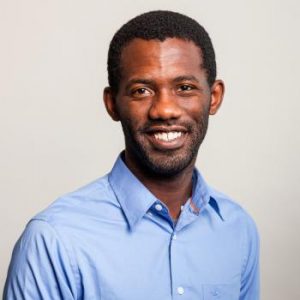
When Will Tarpeh was an undergraduate at Stanford University, he didn’t know if it was possible to be a research engineer who works in the developing world. His global interests started in high school, when he learned that more than 2 billion people lack access to adequate sanitation. And they expanded throughout college, as he studied chemical engineering and African studies and interned at Sarar Transformación, a Mexican nonprofit focused on sanitation. “That’s when I got interested in ecological sanitation,” he said, “which is just the idea of using waste as fertilizer.”
Tarpeh, now an assistant professor in chemical engineering at Stanford, says his professional turning point happened at UC Berkeley in 2013, the year the Development Engineering program started. The Blum Center sat down with Tarpeh to learn more about his views of Development Engineering and how his research combines electrochemical engineering, global sanitation, and resource recovery.
How did Development Engineering shape your academic work in global sanitation?
It was extreme serendipity. Development Engineering started the year I got to Berkeley and made a lot of things possible. It gave me a formal structure—having a chapter in my dissertation that was explicitly about Development Engineering and about my sanitation work in Kenya. If it weren’t there and if I hadn’t gone to Berkeley, I might not have explored this part of my academic identity in as much detail. Now it’s such a crucial part, I can’t imagine being an academic without it.
What else drew you to Cal?
I wanted to work with Professor Kara Nelson, because she has a process engineering focus for achieving sanitation goals. She had a Gates Foundation grant that was part of their Grand Challenges exploration, and she and a post-doc were working on the idea of using ammonia from urine to disinfect feces. I tagged along and went to the Gates Foundation’s Reinvent the Toilet Expo, which was my dream at that time. I got to see all these cool toilets, and realized there was a large community of academic researchers who shared my interests.
How did your own research develop?
My first year in graduate school I reviewed journal papers and focused on unanswered questions. That’s when we landed on urine and recovering nitrogen. We chose urine because there were lots of motivations for separating out urine and feces. And from a chemical engineering perspective, we thought nitrogen from urine could be useful because nitrogen fertilizers are central to modern society—they’ve helped feed a growing population. We focused on what we could borrow from other subfields, such as the extraction of nitrogen from wastewater in the U.S., and also on what we could dream up on our own to address sanitation access.
How do you see your academic contributions?
My first paper as a PhD student compared materials that adsorb or concentrate nitrogen in urine. We compared four different adsorbents. Then we took the work to the field and published it in the Development Engineering journal—which meant characterizing the technology in lab, bringing it to the field, and in between looking at the operating and design parameters to show the trajectory as a contribution. Another contribution is in electrochemical nitrogen recovery. Electrochemistry and wastewater treatment have met in earnest over the past decade or so. I’ve been part of the first group of people to apply electrochemistry to urine and to extract nitrogen in a new way we call electrochemical stripping. It’s set some records in terms of nitrogen recovery efficiency and resulting energy efficiency.
You said in a previous interview that “a lot of the solutions to the world’s most pressing problems are in the minds of children who are simply preoccupied with survival.” Why are children a place to understand the world’s grand challenges?
Grand Challenges are really interesting because they are descriptive in nature. Through them, academics, UN representatives, and others try to describe a reality that millions of people experience. But I think the expertise really lies in the communities who experience the problems. We as scientists can try to lend our technical expertise in other communities—but the people who live in those communities are the real experts. That’s how I approach my work. This comes in part from growing up in a low-income household in the U.S., and knowing that resource-constrained communities have valuable skills and life experiences to solve their own problems.
How new is the field of Development Engineering?
It’s not new in some ways. People have been doing this kind of engineering for as long as there’s been inequality. What’s new is that we’re studying how we do it and thinking about better ways to do it. Ten years ago, it was news to people that you need to engage the community when you design for it. It really was. We would learn about implementation failures all the time—and be surprised that engineers didn’t remember to ask people about their sanitation needs and, as a result, the new toilets got turned into closets because they had roofs. Now, I see the frequency with which that kind of thing is reported going down, which tells me there’s value in the Development Engineering enterprise. It formalizes things in a way that engineers who don’t focus on development can appreciate.
How important is field work to Development Engineering?
It’s a crucial site of learning. Going back and forth into the field has been extremely valuable to my research. Maybe the traditional model of humanitarian engineering was: you develop something in the lab about a problem in a developing community; you say, I have an answer for that; you characterize it in the lab; and you go out and say, here it is. But then you realize you were designing for constraints that didn’t reflect reality in the community. Development Engineering is about iterating. Over the course of my PhD, I went to Kenya and worked with Sanergy. That’s when I realized they were collecting urine but not yet creating value from it. Then I tinkered in the lab on the urine research, and spent the next four years going back and forth to see what worked and made adjustments, which allowed for the rigorous study we expect in academic communities.
Is being a Development Engineer a liability in academia?
I don’t think it is the liability it was five or ten years ago. It’s attractive now to do Development Engineering because of the huge impact you can have. Another part of this is students are demanding training to try to solve development problems. I have engineering students who say global sanitation really gets them moving and motivated. From a disciplinary perspective, Development Engineering is one of the ways we stay relevant to our students and to the Grand Challenges that people are facing around the world.
Are you seeing more academic engineers like yourself who do applied research in developing countries?
I do feel there’s a generation of professors tying loose ends together and thinking about ways to leverage skill sets that are no longer within one discipline. Alice Agogino always talked about the wicked problems that refuse to be classified in one silo and that demand multiple approaches. Many professors now have multiple skill sets and are oriented toward solving wicked problems. I feel I’m part of this, combining electrochemical engineering, global sanitation, and resource recovery.
Do you think it’s significant that most of your mentors have been women?
Yes, and that was a recent epiphany. After Berkeley, I did a post-doc at University of Michigan, where I also was advised by two women—Nancy Love and Krista Wigginton. Female professors have impacted me, particularly by seeing the extra obstacles they have to go through and the strategies they use to succeed. Being supportively mentored by advisors who are different than me has prepared me to support students from diverse backgrounds in my own career.
How do you advocate for STEM inclusion and equality now that you’re a professor?
I recommend students and colleagues for awards, formally by writing recommendation letters and informally by suggesting people for collaborations and so on. Also, being a black male, I try to serve as a role model for students. At Stanford, I give lunch talks with minority or under-represented students. It doesn’t take a lot of time and it could be a high impact intervention for one of them. I also work to design impactful programs. Kara [Nelson] and I were involved in the Graduate Pathways Symposium at Berkeley for underrepresented minorities to apply to grad school. I also make sure when I work in Kenya, I give author credit to the local researchers on my academic papers.
When will we achieve global sanitation?
There are some estimates that low and middle-income countries are not going to fully address the problem by 2050. One argument is that we won’t get there because of the barriers to creating centralized wastewater treatment facilities. But there are other options, namely resource efficiency. A paper I’m working on argues that if we take resource recovery one step further and bake sustainability into every process we do, we can minimize the inputs for everything we produce. The paper encapsulates the idea of the circular economy, of resource recovery. Of course, being a urine researcher, I believe separating urine has a role to play in that. I believe imagining the future helps us engineer toward that future.
—Tamara Straus
Siddharth Kara’s Garment Research Receives International Press Attention
Ann Mei Chang Advises a Lean Innovation Strategy to Maximize Social Impact
By Lisa Bauer
Ann Mei Chang, former chief innovation officer at USAID and former senior engineering director at Google, thinks that mission-driven organizations should act more like Silicon Valley startups. At a presentation at the Blum Center, she outlined her recent book, Lean Impact: How to Innovate for Radically Greater Social Good–which builds off Eric Reis’ best-selling Lean Startup, a veritable bible for iterative business development.
Chang is in a unique position to analyze how and why innovation works across sectors. In addition to working at USAID and Google, she has served as chief innovation officer at Mercy Corps, senior advisor for women and technology at the State Department, and director of product development at Intuit.
“Lean Impact is a strategy for maximizing social benefit in the face of complex societal challenges,” she said.
Chang presented three guiding principles for change-makers, nonprofits, and social enterprises to achieve social innovation: 1) Think Big–set an audacious goal to achieve exponential growth; 2) Start Small–run fast experiments to accelerate the pace of learning, save time and money, and minimize risk; and 3) Relentlessly Seek Impact–fall in love with the problem, not the solution, and accept failure as a natural part of the process.
For each principle, Chang provided examples from her book, which includes interviews with over 200 leaders of successful nonprofits worldwide.
Chang highlighted NexLeaf Analytics, a nonprofit that builds and deploys wireless sensors. NexLeaf’s goal was to increase the use of clean cookstoves to reduce harmful emissions in rural parts of India. To do so, the nonprofit installed sensors on the cookstoves to measure usage and found there was no correlation between self-reported usage and the actual usage; users had both underreported and overestimated their usage.
Through this example, Chang stressed that observing user behavior is far more accurate than asking hypothetical questions and talking to focus groups, as users will often say what they think you want to hear or inaccurately predict their own reactions.
Chang also highlighted a Kenyan company called Copia Global, which set out to make affordable consumer goods accessible to remote villages in Kenya. To get the company off the ground, the founder began testing what low-income villagers most wanted to buy. He asked: Would they be receptive to ordering from a catalog? What goods would they want? Which agents would be most effective? Though a series of iterations, the founder determined that people would order from catalogs, determined the most popular products, and identified the most effective selling agents. Copia Global now calls itself “the best of Amazon plus Fedex plus a healthy dose of emerging market expertise for underserved communities.”
Chang emphasized that scaling a social innovation is not easy. But she assured the audience that big goals and continual iteration are key.
“Be ambitious,” she told UC Berkeley students. “Don’t be afraid to set an audacious goal and relentlessly seek impact by falling in love with the problem.”
Big Ideas Innovation Ambassadors Nurturing Ideas into Enterprises
By Lisa Bauer
Founded in 2005 at UC Berkeley, Big Ideas has become one of the largest and most diverse student innovation competitions in the country. The contest supports the next generation of social entrepreneurs–providing mentorship, training, and the diverse resources required to support big ideas from their earliest stages. In 2017, to ensure the contest remains accessible to the widest number of students across UC’s ten campuses, the Big Ideas team designed an Innovation Ambassador program.
Pursuing a Career in Engineering Co-Design: A Q&A with Ryan Shelby
By Tamara Straus
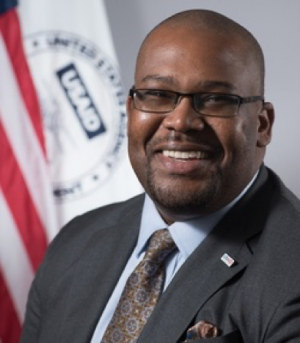 When Ryan Shelby left UC Berkeley with a PhD in Mechanical Engineering in 2013, he and his advisor considered his dissertation unusual. Shelby’s PhD research went beyond traditional engineering. It presented design theory and methodologies and was based on his involvement in building sustainable housing and renewable power systems with the Pinoleville Pomo Nation in Ukiah, California.
When Ryan Shelby left UC Berkeley with a PhD in Mechanical Engineering in 2013, he and his advisor considered his dissertation unusual. Shelby’s PhD research went beyond traditional engineering. It presented design theory and methodologies and was based on his involvement in building sustainable housing and renewable power systems with the Pinoleville Pomo Nation in Ukiah, California.
“Looking back, I was a bit of an odd duckling,” said Shelby, now a Diplomatic Attaché and Foreign Service Engineering Officer at the United States Agency for International Development in Haiti. “I wanted to do PhD work that was applied and more meaningful in a development context.”
Shelby failed his first qualifying exam. But the setback forced him to delve beyond engineering and become a technology for development polymath. He steeped himself in business, environmental science and policy, ethnographic studies, development theory, information technology, and the history of Native American tribes. When Ryan was handed his diploma, he continued along this interdisciplinary path. During the summer of 2013, he served as a Science, Technology & Innovation Fellow at the Millennium Challenge Corporation. He then worked in Sub-Saharan Africa and other emerging regions as a senior energy advisor for the U.S. Office of Energy and Infrastructure, landing in 2016 the position as a USAID foreign service engineering officer.
At USAID, Shelby has been developing and managing Haiti’s Build Back Safer II program, for which he recently won an award. Build Back Safer II provides local job training and material sourcing for hurricane-resistant building structures. To date, the program has resulted in 4,000 home roof repairs, the training of over 2,000 people (60 percent women) in roof rehabilitation techniques, and the completion of scores of handwashing and toilet facilities in areas damaged by Hurricane Matthew. Build Back Safer’s II next stage of repairs will focus on microgrid rehabilitation, water point upgrades, and sanitary block restoration in health clinics.
At UC Berkeley, Shelby remains a model for engineering Berkeley PhDs who want to do interdisciplinary research in low-income regions and use their technology skills. The graduate program in Development Engineering comes in part out of his quest to do applied engineering at the dissertation stage. To learn more about his trajectory as well as his views on engineering co-design, the Blum Center spoke with Ryan Shelby from his USAID office in Port-au-Prince, Haiti.
How did your upbringing influence your academic and career pursuits?
I grew up in really rural Alabama, in Letohatchee, where there were about 600 to 700 people. My Dad had a farm there. I always liked to tinker—mess around with my Dad’s tractor, take apart my Mom’s vacuum cleaner. Luckily, my parents indulged me and I had a natural affinity for math. They let me to go to Alabama Agricultural & Mechanical University, an historically black college that had a very good engineering program. I majored in mechanical engineering with a focus on propulsion systems. It was 2003/2004 when President Bush talked about going after more alternative, sustainable energy approaches. That was pretty exciting to me, but Alabama A & M didn’t have an energy program. That’s when the dean of my university, Dr. Arthur J. Bond, told me about UC Berkeley and Professor Alice Agogino. He made the connection for some mentoring with her, and she encouraged me to apply. She said I could pursue design, energy, and engineering work.
Would you advise engineering PhD students to do applied work while in university?
In academia, there’s a lot of amazing ideas and technologies. But transferring those ideas into a practical technology that can be built and implemented at scale and have impact within a short time horizon—that’s not something easily done. Still, I would encourage people do this in an academic setting, because it’s a lot easier to do theoretical and applied work and fail and learn from those mistakes, as opposed to when you’re out in the policy world or in industry. The more you ideate, the more you fail, the more information you gather. It allows your next version to reach a more optimal solution.
How does USAID view university-incubated innovations?
The applied work university researchers do makes it a lot easier for us on the government side to say, “It’s been peer-reviewed and tested. Now let’s learn from what the Ivory Tower has done and integrate the work into our projects.” That’s how USAID under the Obama administration and now under the Trump administration is approaching university innovators. We realize universities have great ideas; they may be too high risk for industry to fund. But the U.S. government is willing to make informed decisions to invest in these technologies, so we can grow them and integrate them into our work—and ideally leapfrog pitfalls some countries face in their self-reliance and overall growth.
Are you working with universities in your Build Back Safer II program in Haiti?
Yes, we are partnering with the American University of the Caribbean in Les Cayes, Haiti and the Swiss Development Corporation to develop training programs on rehabilitation techniques and housing upgrades for homes and other vertical structures that were damaged by Hurricane Matthew. We identify masons and carpenters and others in the community who have some technical skills and interest in learning new vocational skills, and train them in hurricane repair and making proper foundations. We’ve combined that with vendors in the area, to source the right materials, so they can go out and implement a lot of these repairs—on roofs, water distribution points, and on two solar microgrids in the southern part of Haiti.
What combination of skills did you deploy to develop this program?
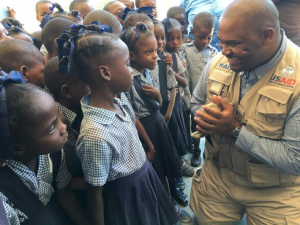 I designed this program because of my experience with the Pinoleville Pomo Nation. Coming in and putting in a solution that does not fit the cultural context is not the best way to ensure sustainability and self-reliance. Rather, you need to understand community needs, understand situated knowledge. In Haiti, we want to give community members access to the latest technology and building techniques. For me, this requires learning the Haitian way of building, and co-creating a shared knowledge base of how we can go out and do housing repair work that pulls from these knowledge bases. One the traditional building techniques here is called clissage, where you weave pieces of wood of varying tensions to create strong foundations and vertical structures. What we’re doing is showing Haitians how they can bolt onto clissage more modern and hurricane-resistant techniques for roof design and installations.
I designed this program because of my experience with the Pinoleville Pomo Nation. Coming in and putting in a solution that does not fit the cultural context is not the best way to ensure sustainability and self-reliance. Rather, you need to understand community needs, understand situated knowledge. In Haiti, we want to give community members access to the latest technology and building techniques. For me, this requires learning the Haitian way of building, and co-creating a shared knowledge base of how we can go out and do housing repair work that pulls from these knowledge bases. One the traditional building techniques here is called clissage, where you weave pieces of wood of varying tensions to create strong foundations and vertical structures. What we’re doing is showing Haitians how they can bolt onto clissage more modern and hurricane-resistant techniques for roof design and installations.
Is there a fairly straight line from your doctoral work to your current USAID work?
I told Alice [Agogino] it’s like déjà vu. My work in Haiti is almost a mirror image of the dissertation work I did at Berkeley. It’s still housing, design, and rehabilitation work, and it’s also energy systems to provide electricity to support economic growth. This is the exact thing I did with the Native American tribe. I’m using the same research techniques and codesign methodology with these Haitian communities. If I hadn’t done this dissertation work at Berkeley with Native American communities in California, I would find my job at USAID hard to do. I wouldn’t have the theoretical background or the tangible experience to prepare me for this work.
Which thinkers would you recommend to students in development engineering?
I highly recommend [UC Santa Cruz Professor] Donna Haraway’s work on situated knowledge as a core tenet of co-design and co-creation. Situated knowledge pulls from environmental science policy and feminist theory, and provides an intellectual framework for understanding and utilizing people’s knowledge bases. I also recommend [Harvard Professor] Sheila Jasanoff’s work on the co-production of knowledge and [Rutgers University] Frank Fischer’s work on citizens as experts of the environment. Dr. Fisher writes about how communities work with outsiders to understand environmental impacts and how to try to design and implement solutions.
How has the field of development changing, particularly for the U.S. government?
It really hasn’t changed that much between Administrations. Both the Obama and Trump Administrations have pushed to work with nontraditional actors, including universities. One big difference with development under the Trump Administration is we’ve increased the focus of self-reliance and co-creation. Our goal is to partner with a host country governments and co-design solutions with them, so that the host country itself can do the implementation work and not have to rely fully on the U.S. government. Under the Trump Administration, USAID is committed to streamlining our procurement approaches and increasing the usage of co-creation design approaches within new awards by 10 percentage points in Fiscal Year 2019. We want to continue to partner with universities, partner with private sector, partner with religious groups, partner with other nontraditional actors—so we can get the best technologies, solutions, and innovations to fit the needs of a host country government and get it out in the field as quickly as possible. The aim is to improve their resiliency and self-reliance and reduce their overall dependency on U.S. foreign aid as well as eventually open up new markets for American goods and services.
What would you recommend to Development Engineering students who want to work for USAID and other governmental organizations?
The transition from a more research background into development or the policy arena can be as perilous as crossing the sea with the sirens Scylla and Charybdis on either side. To navigate this path, I would recommend engaging in more applied research while at Berkeley with professors like Alice [Agogino], Alastair [Iles], Ashok [Gadgil], and Dan [Kammen] to get a better understanding of this space. Next, I highly recommend that students consider pursuing science and technology policy fellowship programs, such as the Christine Mirzayan Science & Technology Policy Graduate Fellowship Program at the National Academies, the California Council on Science and Technology, or the Institute for Defense Analyses Science and Technology Policy Institute (STPI) Fellowship. These programs are designed to help Bachelor, Master, and PhD candidates and recipients to understand how science is utilized in development and policy making. My experience as a Fall 2012 Mirzayan Fellow was instrumental in helping me land my job at the Millennium Challenge Corporation and USAID, as the National Academies taught me how to translate science and engineering speak into the language and format of a policy brief. Moreover, I was able to use my time at the National Academies to conduct informational interviews with development professionals within government as well as in for-profit and nonprofit organizations, to better learn which technology gaps and other seemly intractable problems that were encountering. These interviews and the knowledge that I gained were instrumental in helping me find and land a position at USAID.
Maria Artunduaga’s Mission to Manage Chronic Lung Disease
By Tamara Straus
On February 26, 2018, Maria Artunduaga had a eureka moment that medical entrepreneurs dream of. In the office of UCSF Professor Mehrdad Arjomandi, she was soliciting advice about a wearable prototype she had developed to monitor oxygen in patients with chronic obstructive pulmonary disease (COPD). Dr. Arjomandi—a clinical professor and foremost expert on COPD—was telling her about an air trapping investigation he had been doing for over a decade. He was bemoaning the enormous time and expense involved in testing patients with COPD, the third leading cause of U.S. deaths.
Graduate-Undergraduate Student Mentorships Grow
When Chancellor Carol Christ released UC Berkeley’s strategic plan for 2019-2029, two overarching goals were relevant to the Global Poverty & Practice minor and the Blum Center’s graduate program, Development Engineering.
The first goal was to “empower engaged thinkers and global citizens to change our world. Specifically, Christ wrote: “Acts of discovery—self-initiated projects that create new knowledge—will be a focal point of undergraduate study. Engagement with the world beyond campus, and reflection on the meaning of an education, will also be key to the Berkeley experience. Master’s students will see increased investment in their knowledge and skill-building, and doctoral students will receive added training, mentorship, and financial support.”
The second goal was “focusing on the good: innovative solutions for society’s great challenges.” Christ explained, “Faculty, staff, students, alumni, and our larger community will come together to address the great challenges of our time that Berkeley is particularly well suited to address, including technological change and artificial intelligence; environmental sustainability; the future of democracy; inequality; human health; and the future of public higher education.”
These two goals are already integrated into Global Poverty & Practice (GPP). They also are being exercised in several new mentoring arrangements between GPP and Development Engineering students focused on socioeconomic solutions with community groups and NGOs.
Take the Pinoleville Pomo Nation collaboration. Since 2017, several GPP and Development Engineering students have been working with a Native American tribe of 300 people based in Ukiah, California and an interdisciplinary UC Berkeley group called CARES—Community Assessment of Renewable Energy and Sustainability—to co-design STEM education activities for native students.
For George Moore, a UC Berkeley Mechanical and Development Engineering graduate student, the project has been a means to further educational equity and gain teaching skills. He recounted that both graduate students and undergraduate students, such as GPP student Arielle Dollinger, were able to co-design the 2018 STEM education workshop with community members.
“Among the decisions we collectively made were to teach engineering design through Pomo Pinoleville basket-making techniques and to engage students in 3D printing designs from local art and nature,” said Moore.
Dollinger said the CARES-Pinoville Pomo Nation project was appealing for her GPP Practice Experience because she wanted to work locally and in an interdisciplinary vein.
“It was really up my alley because I’ve taken Native American Study classes and I am committed to environmental justice and social equity,” said Dollinger, who added that the Development Engineering team was “very open to undergraduates contributing input and insights and opinions. We conducted weekly meetings throughout the spring semester, and I felt I was part of the development of the project. Also, just having the opportunity to work with a California indigenous community was a huge privilege and honor.”
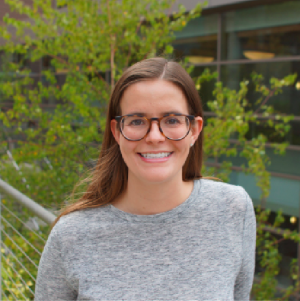
Another recent mentoring collaboration between Development Engineering and GPP students involves Visualize, founded by Mechanical Engineering PhD student Julia Kramer. Kramer started the project—a healthcare design and training program to teach midwives in Ghana to screen women for cervical cancer—as an undergraduate at University of Michigan and continued it during her summers at Cal, winning a Big Ideas award in 2015. In the fall of 2016, she decided to connect to a Cal group called Invention Corps, to find project assistants. There, she met Iris Huo, an undergraduate economics and GPP student, who has since worked with Kramer to iterate on Visualize and, during the summer of 2018, accompanied her to Ghana.
“I understood right away the tangible impact of Visualize to affordably and effectively reduce mortality rates in women,” said Huo. “The work has been the most life-changing experience I’ve had, especially what I learned in Ghana. And Julia, to this day, remains the paragon of mentorship that we have at Invention Corps.”
Kramer—who is mentored by Blum Center Education Director Alice Agogino, a nationally recognized expert on mentoring students in interdisciplinary engineering—has found the collaboration equally rewarding.
“I’ve had really positive interactions,” Kramer said of working with GPP and other undergraduate students on Visualize. “The other part was certainly logistical. I was studying for my quals the semester I started working with them—so the idea of them helping out and being the actual hands that were doing the design work, where I could just do the mentoring and oversight, was really appealing to me. I also felt I had time to meet with them weekly, field questions, and give them more feedback than a busy tenure track professor would have.”
Fletcher Lab CellScope Is Ready for Scaling
By Lisa Bauer
Nearly a decade ago, more than 80 global organizations came together to sign the London Declaration on Neglected Tropical Diseases, to control, eliminate, or eradicate at least ten of the diseases by 2020. Progress has been made on “NTDs” (neglected tropical diseases), but they still affect nearly one billion people, reinforcing poverty in low-resource regions.
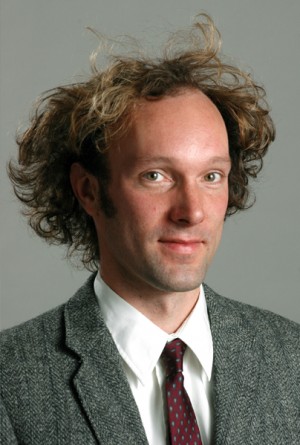 UC Berkeley Professor of Bioengineering Dan Fletcher has been working to accelerate NTD diagnosis and treatment with a device so ubiquitous it’s probably in your hand: a smartphone. Fletcher, with a group of interdisciplinary scientists from in and outside his lab, have steadily proved that smartphone cameras can be repurposed as microscopes to identify disease-causing pathogens, such as the bacteria that cause tuberculosis and the parasites that cause River Blindness.
UC Berkeley Professor of Bioengineering Dan Fletcher has been working to accelerate NTD diagnosis and treatment with a device so ubiquitous it’s probably in your hand: a smartphone. Fletcher, with a group of interdisciplinary scientists from in and outside his lab, have steadily proved that smartphone cameras can be repurposed as microscopes to identify disease-causing pathogens, such as the bacteria that cause tuberculosis and the parasites that cause River Blindness.
“Phones have enormous imaging and processing capabilities,” explained Fletcher at a recent faculty salon of the Blum Center, where he serves as chief technologist. “Our work has been to harness these consumer electronics to do the complex imaging and image interpretation tasks. We add lenses and automation to the mobile devices; then we capture, geotag and upload the image data we collect, giving us greater information about the spread of disease.”
By removing the need for a laboratory and highly trained technicians to perform image-based processing, the Fletcher Lab’s CellScope, as the family of devices is called, can dramatically expedite NTD treatment by enabling patients to receive rapid, low-cost, and highly accurate diagnoses, even in remote regions. Fletcher and others believe the device has enormous potential to contribute to NTD elimination efforts, because while the drugs to treat NTDs already exist–an efficient, systematic, and affordable diagnosis and treatment method does not.
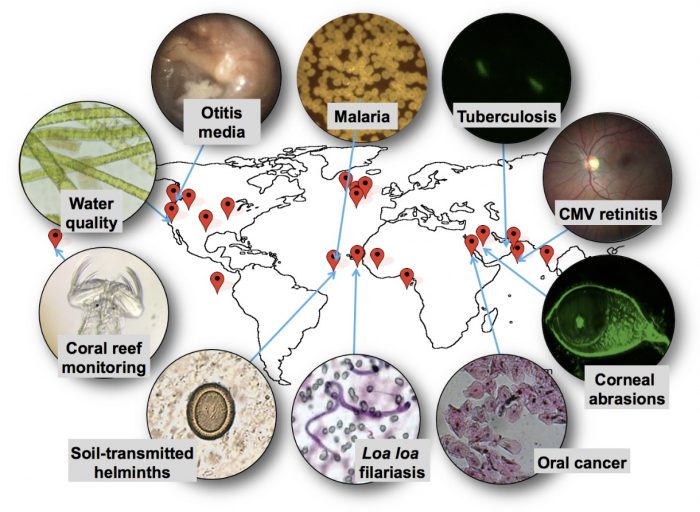
“Thanks to the London Declaration, major pharmaceutical companies have pledged to contribute the drugs needed to treat many NTDs,” said Fletcher. “CellScope will help us tackle the missing ingredient: the way to identify those in need. For effective treatment and monitoring, we must know who’s infected, where they are, and whether there is reemergence. That’s where technology comes in.”
The latest version of CellScope, called LoaScope, has proven effective in Cameroon, where it is being used to combat a NTD called River Blindness or Onchoceriasis. Endemic in Sub-Saharan Africa, Onchoceriasis is a severely debilitating disease that results in human blindness. Although the antiparasitic drug, Ivermectin, is readily available, treatment via mass drug administration has been halted in some regions due to serious adverse effects caused by co-infection with a worm call Loa loa. Treatment in Loa-endemic regions is complex because if Ivermectin is administered to someone who is simultaneously infected with Loa Loa, the drug can lead to fatal complications.
To safely relaunch mass drug administration of Ivermectin, Fletcher and a team of medical professionals from NIH in the U.S., IRD in France, and CRFilMT in Cameroon launched a pilot project in Okola District of Cameroon, with funding from the Bill and Melinda Gates Foundation. Local healthcare workers collected small blood samples from patients and inserted them into the LoaScope to measure the number of parasites; if the number was below a certain safety threshold, then the patient was treated with Ivermectin. Patients with parasite loads above a certain threshold did not receive Ivermectin to reduce the possibility of complications from treatment.
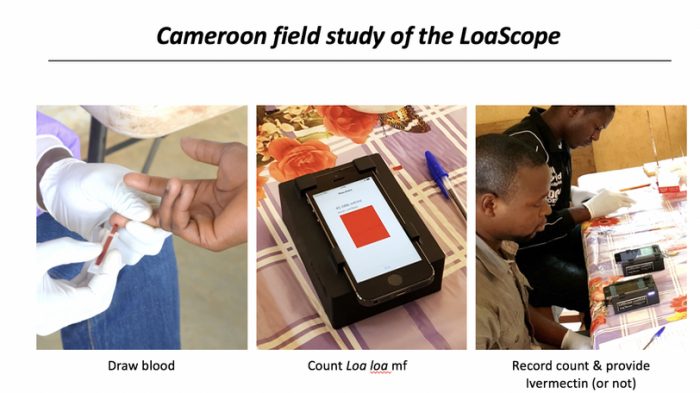
With this approach, 96 percent of the 16,000 people examined in the Okola District pilot study had Loa loa levels below the safety threshold and were treated for River Blindness, while only 2 percent had to be excluded because of Loa loa levels that put them at risk of complications from treatment (the remaining 2 percent could not receive Ivermectin for other reasons such as pregnancy or illness). Findings from the Cameroon pilot were published in 2017 in the New England Journal of Medicine.
The Cameroon Ministry of Health approved the study and backed the use of the LoaScope technology to restart mass administration of Ivermectin for control of River Blindness. Prior to the pilot study, a public health education campaign to encourage citizens to seek safe diagnosis with LoaScope was carried out–including public testing of the Minister of Health with the LoaScope.
Although the Cameroon pilot was a success, the next challenge is scaling the technology so that the millions of people living in Loa-endemic regions can benefit from safe treatment of River Blindness with ivermectin.
“The problem is no longer that we don’t have the tools. We now do,” said Fletcher. “The problem right now is the funding, manufacturing, and distribution gap–how do we best scale this device and get it to the people who need it?”
Funds are needed to mass produce the device, establish a support infrastructure, and develop an IT system. Yet the cost benefits could be significant. For example, currently the cost of a single capillary for the LoaScope is $2; if the process was automated, the cost would decrease to just 30 cents. A similar reduction in cost of the device is possible.
In addition to River Blindness, the Fletcher Lab has identified five other NTDs for which CellScope could be applied. Schistosomiasis is the next disease the lab hopes to test and treat. Like River Blindness, schistosomiasis is a worm-based disease, but the parasites that cause it are detected in urine or stool samples. Thus, instead of taking a blood sample, CellScope would be adapted to analyze filtered urine and stool that is loaded into the same capillary and imaged with the same device.
“The basic technology–a mobile microscope with image processing capabilities–is already there, and with a few modifications we can adapt it to new diseases,” said Fletcher. “Increasing access to high-quality disease diagnosis is beginning to be within reach for low-resource settings with technologies such as these. But the same challenge remains: scaling.”
ZestBio Continues Innovation with Waste-based Products
By Tamara Straus
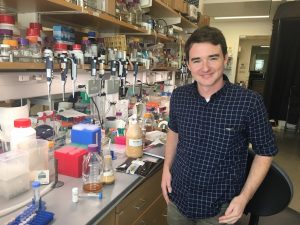 Early in 2017, Ryan Protzko, then a doctoral student in biochemistry at UC Berkeley, was working on research to turn orange peels into eco-friendly bottles and contacted a citrus juicer in California’s Central Valley. Would the company be able to spare some orange peels? Yes, responded the representative, the juicer could truck “a couple tons” of wet navel peel to Protzko’s lab free of charge.
Early in 2017, Ryan Protzko, then a doctoral student in biochemistry at UC Berkeley, was working on research to turn orange peels into eco-friendly bottles and contacted a citrus juicer in California’s Central Valley. Would the company be able to spare some orange peels? Yes, responded the representative, the juicer could truck “a couple tons” of wet navel peel to Protzko’s lab free of charge.
Protzko, co-founder of the green chemistry startup ZestBio, tells this story to widen people’s eyes to the gargantuan amount of agricultural waste produced on Earth. Up to 50 percent of citrus fruit, potato, sugar beet, and grape weight is made up of wasted matter: peels, pulps, and pomace—and that matter comprises only 10 percent of the crops’ value.
In numeracy, citrus pulp and peel alone generate 10 million metric tons of waste worldwide every year. Much of it is reused as feed to cattle, but this requires an energy-intensive process. Peels that are not dried can end up in piles of putrefying waste that cause environmental damage to local waterways and release greenhouse gases, particularly methane. It makes one guilty to drink a glass of orange juice.
Nonetheless, the free citrus pulp offer was confirmation for Protzko and his ZestBio partners—Luke Latimer, who received his PhD in chemistry from Cal in 2017, and UC Berkeley Bioengineering Associate Professor John Dueber—that the raw materials they needed were more than available. What they also soon discovered was that agricultural producers are keen to collaborate on green chemistry products which repurpose their waste, increase their crop value, and reduce emissions by repurposing peel, pulp, and pomace for viable and especially non-oil-based products.
“Just the idea of taking agricultural waste and turning it into something else was exciting to producers,” explained Protzko to the sound of a whirring fermentation shakers in his lab at Berkeley’s Energy Biosciences Building. “It took us some time to figure out what we should do and what might be economically viable—but that eventually came from talking to big chemical manufacturers and from the industry responses to our academic paper.”
That academic paper demonstrated the possibility of using engineered yeast to convert pectin-rich orange peel waste into plastic bottles. It is an advance enabled by the last 10 years of metabolic engineering, says Protzko. ZestBio’s goal is to use yeast to make chemical building blocks, which include the plastic polyethylene furanoate (PEF)—a bio-based plastic produced from agricultural waste. The team is one step closer to that goal, as demonstrated in a November 2018 Nature Communications paper, in which the researchers solved challenges associated with engineering a microbial strain to convert pectin-rich hydrolysates into commodity and specialty chemicals.
The Nature Communications paper lands a week after one of California’s most extreme environmental disasters—the Butte County fires, which have been attributed to fossil fuel-driven climate change and which covered the Energy Biosciences Institute in smoke the day of the ZestBio interview. Among the advantages of PEF, says Protzko, is reducing reliance on its chemical cousin, polyethylene terephthalate (PET), found in food packaging and plastic drink bottles. Indeed, when it comes to bottles, an environmentally sustainable solution is in demand. A Pacific Institute study found that approximately 17 million barrels of oil equivalent were needed to produce the plastic water bottles consumed by Americans in 2006—enough energy to fuel more than one million cars for a year.
“Waste causes environmental issues,” says Protzko. “If we can create sustainable products then we’re actually replacing oil and other unsustainable resources.”
ZestBio is part of an increasing number of bioscience startups in the Berkeley area—including Zymergen, Lygos, Amyris, Zymochem, Sugarlogix, Visolis, and Bolt Threads—that have received support from the Energy Biosciences Institute (a BP-funded partnership of UC Berkeley, Lawrence Berkeley National Lab, and University of Illinois Urbana-Champaign) and the U.S. Department of Energy’s Joint BioEnergy Institute, a research partnership led by Lawrence Berkeley National Laboratory. Since 2007, more than 1,000 researchers have been supported, creating what Protzko calls a “thriving community of Berkeley-based startups involved in bioscience for environmental solutions.”
The cell and molecular biologist from Baltimore did not always see himself as an entrepreneur. It was his co-founder and fellow doctoral student Luke Latimer who pushed him to see their PEF research as a business. Their first step, says Protzko, was to apply to the Big Ideas student innovation contest in the fall of 2016.
“Big Ideas was what jump-started everything for us,” says Protzko. “It forced us to think through step by step what everything would look like and develop a foundation for the company. It was our first time transitioning from being just graduate students to thinking about the bigger impacts we could have.”
Latimer and Protzko submitted their pre-proposal in November 2016 and were assigned an advisor, Tony Kingsbury, from the plastics industry, “who was really great about letting us know what challenges we’d be looking forward to. He forced us to think about different products.” The ZestBio team won first place in the Energy & Resource Alternatives category in May 2017.
Since that time, ZestBio has received pre-seed capital from the National Science Foundation’s SBIR/STTR program and is participating in Berkeley’s Skydeck accelerator program.
“NSF really pushes customer discovery and commercialization. They go after high risk, high reward for Phase 1. What we’re proposing—we definitely know it’s high risk, high reward, because it’s never been done before.”
The ZestBio team is in conversation with Method and other green products formulators to share research information on its bottle composition process and household cleaning ingredient possibilities. The team aims to have its bio-based bottle on the shelf in five years. In 10 years, says Protzko, the team wants to expand its production beyond eco-friendly bottles to include different vegetable processing and products for multiple producers.
“This is also a global issue,” says Protzko. “Over 60 percent of oranges that are juiced are in Brazil. That would be an incredible market to tap into when we have a refined process to do it.”
The Future of Collaboration in the Future of Work
By Rachel Dzombak
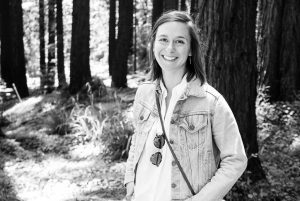 At the 2018 Autodesk University conference, a weeklong event bringing together representatives from the building, design, manufacturing, and construction industries, the skillsets required for the future workforce were a heavy focus. In her keynote speech, Beth Comstock, the former CEO of GE, discussed how multinational companies are reorganizing around digital information flows, asserting, “We can’t control change, we can’t predict the future, but we can be more adaptable.”
At the 2018 Autodesk University conference, a weeklong event bringing together representatives from the building, design, manufacturing, and construction industries, the skillsets required for the future workforce were a heavy focus. In her keynote speech, Beth Comstock, the former CEO of GE, discussed how multinational companies are reorganizing around digital information flows, asserting, “We can’t control change, we can’t predict the future, but we can be more adaptable.”
Throughout the conference, others asked: How do we build an adaptable workforce? How are educational needs shifting in response to emergent industry changes? What are the initial steps that we need to take to prepare for the transition?
These critical questions are being asked not just by industry leaders but by faculty and senior administrators at universities. The conversation at UC Berkeley is near constant, especially in engineering and business. Students and faculty alike want to know: How will companies operate? How will industries evolve? And how should socio-political systems best adapt to workforce changes?
There are pessimists and optimists. Among the optimists is UC Berkeley Robotics Professor Ken Goldberg, who argues that forecasts of mass unemployment are unfounded. He believes new jobs will replace old ones and even imagines, echoing Maynard Keynes, that automation will lead to elimination of mundane tasks, giving people time to be more creative.
A technology-infused world that abets humans must be a goal. We may even be on the brink of a golden age of intelligent collaboration—enabling new inventions and ways of thinking that come from the melding of disciplines, cultures, and fields. As Fei-Fei Li, a Stanford University computer science professor and former chief scientist at Google, points out, bringing technology to bear on societal issues will “require insights derived from fields beyond computer science, which means programmers will have to learn to collaborate more often with experts in other domains.” In other words, workers, especially those in the cutting-edge fields, will be compelled to integrate computation with linguistics, behavioral science with physics, economic development with history, and so on.
Historically, universities provided access to knowledge and skillsets that was hard to reach otherwise. Knowledge was held by faculty experts who achieved mastery in narrow subjects, and delivered material to students via lectures. With the rise of the Internet, content is now available at an unprecedented level. Students are learning to prove fluid dynamics proofs through YouTube, skipping economics class in favor of learning through Khan Academy, and asking Google or Wikipedia “How do I design a gray-water system?”
If students are then learning traditional material through other forums, what is the value of the university today? And what do students need to learn that cannot be taught online? The World Economic Forum cites the top six skills needed in 2020 as: 1) complex problem solving, 2) critical thinking, 3) creativity, 4) people management, 5) coordinating with others, and 6) emotional intelligence.
In this first article on the future of work, I want to underscore that three of the top six skills on this list—and many others—focus on collaboration. This is unsurprising, as work increasingly happens in teams regardless of industry. However, few (if any of us) have ever been explicitly taught how to work in teams. We learn through sports and project work, but team-based experiences often lead to frustration (“oh, I’m stuck doing all the work again”), confusion (“we’re all on different pages”), or conflict (“it’s really hard to work with people who are so different from me”).
Teaching students to collaborate across diverse teams will be a key priority of universities in the coming years. Speaking on cultivating the next generation of students, Ruth Simmons, former president of Brown University and current president of Prairie View A&M University, commented in a recent New York Times article about the role of teaching students to collaborate. She said, “If we’re doing what we should be doing, we are acclimating students to an environment in which they have to learn to work with others who are very different from themselves. And that seems to me to be the first requirement of leadership. To actually learn to work with people in a respectful and inclusive way is inordinately important.”
At Berkeley, Professor Sara Beckman and I developed a toolkit called “Teaming by Design” for teaching students how to collaborate in teams. We provide tools and research grounded in human-centered design, organizational behavior, and systems engineering to educate on building self-awareness, working collaboratively with others, and growing capacity to achieve innovative outcomes.
In the toolkit, we outline four phases: Team Formation, Team Launch, Team Check-in, and Team Celebration. Within each phase, we give exercises teams can conduct to improve their dynamics and research to ground the importance of the phase as well as raise consciousness of common issues. We additionally provide guidance on what work should be done in teams. Too often in school, team work is confused with group work. Students quickly divide the work among themselves and meet only to staple the elements together.
A team, by definition, is a collection of people who are committed to a common purpose, whose interdependence requires coordinated effort, and who hold themselves mutually accountable for results. While in some Berkeley classes, teams are comprised of a mix of different students from the same majors (e.g., a mechanical engineer and civil engineer working on the design of a sensor), other teams cross the spectrum—bringing together students from business, art, history, and dance to address, for example, homelessness. Both experiences represent deep learning opportunities for students to become exposed to different ways of thinking and doing.
Our work aims to create change on several levels. First, it is a resource for faculty who may be unfamiliar with how to coach teams. Despite the changes coming to education, faculty (particularly at research universities) are still largely hired for expertise in a narrow field. A fluid dynamics professor who wants students to work in teams within her class may be great at coaching on mathematical modeling issues yet far less equipped at structuring projects that require interdependence or coaching on the socio-emotional challenges that come up within project teams—such as issues of mutual accountability, trust, and conflicts stemming from varied personalities. We work with faculty in business, engineering, art practice, and biology to teach them how to collect feedback and how to debrief the feedback with students, so that it becomes a learning mechanism and not only a tool for grading.
During the Autodesk University conference, advanced machines, XR headsets, and 3D digital models were prominently on display. But even more prominent were the opportunities that technology could enable. For example, advanced lighting systems that provide Internet, mood, music, and safety features—in addition to light—could lead cities to rethink public services. The role of the lighting designer will shift from thinking about delivering light to imagining ways people might navigate their environment. This new frame increases the importance of knowing how to draw out insights from residents and collaborating with relevant stakeholders. Advancing technology forces individuals and organizations to rethink the systems in which they are working, and who they are working with. The more diverse the collaboration, the higher chance for creative problem solving.
We need to start ensuring that students are equipped with the ability to collaborate across untraditional boundaries, because collaboration will be critical for their success in the rapidly evolving workplace.
Rachel Dzombak is a Research Fellow at the Blum Center for Developing Economies. She researches and teaches design, innovation, and system thinking.
SACEPI: Bridging College Food Insecurity and Waste
By Sara Tsai
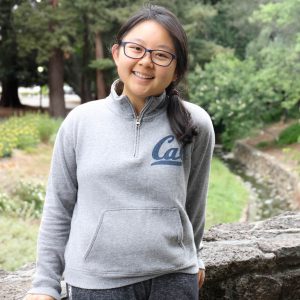 The UC system is often lauded for its ability to cultivate socioeconomic mobility. A 2015 New York Times study placed UC campuses in six of the seven top spots in its index of economic diversity, and the UC system performed the strongest in this year’s U.S. News & Report Ranking on social mobility.
The UC system is often lauded for its ability to cultivate socioeconomic mobility. A 2015 New York Times study placed UC campuses in six of the seven top spots in its index of economic diversity, and the UC system performed the strongest in this year’s U.S. News & Report Ranking on social mobility.
However, the UCs are struggling to support their low-income, working class, and now middle-income students once they arrive on campus. The UC Office of the President’s Global Food Initiative found that, as of 2017, 44 percent of undergraduate and 26 percent of graduate UC students lack consistent access to nutritious food and 5 percent of UC students report experiencing homelessness. These rates are even higher among marginalized communities, such as people who are first-generation, LGBTQ+, or former foster youth.
What does this mean on the ground level? At UC Berkeley, which was ranked the most expensive college town in the country, the campus food pantry has seen usage increase tenfold over the past two years. It means that 40 percent of undergraduates are struggling to put food on the table. It means that students are having to choose between paying rent or eating full meals, and more often than not, skipping class to work part-time jobs that enable them to pay for class.
At the Student Action Committee for the Eradication of Poverty and Inequality (SACEPI), the student arm of the Blum Center Network, student representatives from each of the UC campuses are brainstorming how to activate solutions for these poverty-related issues. As the UC Berkeley undergraduate representative, I have been working with campus partners to address this crisis.
First, it is important to recognize that increases in the cost of living have outpaced the cost of tuition, and non-tuition expenses can account for over 60 percent of the total cost of attendance. While efforts have been made to provide financial assistance to support students in need, over half of the students who reported experiencing food insecurity also had paying jobs or received financial aid. Therefore, to address the landscape of basic needs insecurity, we need to look not only at the cost of tuition (which has has tripled and over the past four decades) but also at the cost of living.
Second, while there is support through programs such as CalFRESH, the Food Assistance Program, and the Food Pantry, these programs are not funded to serve all students in need. There are efforts underway to increase funding and expand policies, but a core issue is simply the lack of affordable food around campus. It is not practical to expect students to transition from free food offered by the pantry to, say, $10 meals at Chipotle. At the same time, despite initiating comprehensive efforts to curb food waste and being consistently named one of the most sustainable dining halls in the country, Cal Dining still sees hundreds of pounds of food wasted daily. After recognizing this gap in food waste and insecurity, we decided to step in.
Currently, financial aid is given based on need. However, there is little flexibility to accommodate for unique and changing circumstances. Why not reshape this model, and apply it to food? The pay-what-you-want was piloted at the Berkeley Student Food Collective, a student-run nonprofit grocery store, where student members repurpose older or damaged produce into meals, sold on a sliding scale of $2 to $5. Customers who can afford to pay $5 subsidize the cost for those who can pay only $2.
Now, we’re launching this into a larger platform—channeling all the dining hall food waste into a centralized kitchen right at the heart of campus, where students volunteers will repurpose leftover grains, meat, and vegetables into affordable, healthy meals for other students. For me, this is what the Berkeley spirit looks like: community members coming together and taking action to serve neighbors in need. While the long-term future is uncertain, we are excited to shift towards this more accessible model—one meal at a time.
Sara Tsai is majoring in Business Administration and Interdisciplinary Studies and serves as UC Berkeley’s undergraduate representative of the Student Action Committee for the Eradication of Poverty and Inequality and chair of the Basic Needs Security Coalition.
“Governments Don’t Want the Academic Paper, They Want Tailored Advice”: Daniel Kammen on Communicating Scientific Research
By Tamara Straus
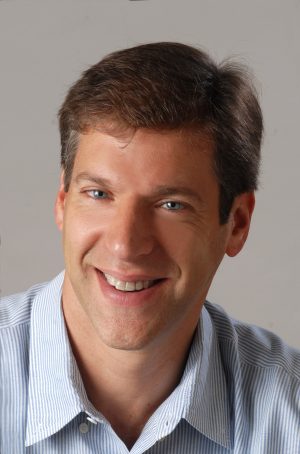 Daniel Kammen asserts that everything he has learned about communicating scientific research to a lay audience has been “by accident.” Yet Kammen, chair of the Energy and Resources Group at UC Berkeley who also holds parallel appointments in the Goldman School of Public Policy and the Department of Nuclear Engineering—is for all intents and purposes a master communicator to the press, government, and non-scientists in general.
Daniel Kammen asserts that everything he has learned about communicating scientific research to a lay audience has been “by accident.” Yet Kammen, chair of the Energy and Resources Group at UC Berkeley who also holds parallel appointments in the Goldman School of Public Policy and the Department of Nuclear Engineering—is for all intents and purposes a master communicator to the press, government, and non-scientists in general.
First, Kammen is not afraid of the mainstream media. He is a frequent contributor on the subjects of climate science and clean energy to The New York Times, The Guardian, and other news outlets and has appeared on 60 Minutes (twice), NOVA Frontline, and hosted the six-part Discovery Channel series “Ecopolis.”
Second, he is a prolific academic and government contributor, having authored or co-authored 12 books, written more than 380 peer-reviewed journal publications, testified more than 40 times to U.S. state and federal congressional briefings, provided governments with more than 50 technical reports, and served the State of California and U.S. federal government in expert and advisory capacities. In terms of academic appointments, Kammen is also is founding director of the Renewable and Appropriate Energy Laboratory (RAEL).
Third, Kammen has worked (and communicated) outside of university. He has served as the World Bank’s Chief Technical Specialist for Renewable Energy and Energy Efficiency and as the U.S. State Department’s Environment and Climate Partnership for the Americas Fellow and later as Science Envoy for President Obama and Secretary of State John Kerry. He also has founded or is on the board of over 10 companies.
At an InFEWS lecture at the Blum Center for Developing Economies on Nov. 14, Kammen argued that although many scientific researchers may loathe to translate their work for non-scientists, they need to learn how to do it—individually or preferably in teams, as working with the press and reaching government can be difficult.
“If you’re not intentional about how you’re communicating your science, what you’re saying is someone else should write your narrative,” said Kammen. “And generally, you don’t want someone else writing your narrative.”
Kammen gave the example of his research on corn-based ethanol. In the Jan. 27, 2006 issue of Science, he and his co-authors provided an analysis of six previous corn ethanol studies. By reverse-engineering a suite of models and studies, the team concluded that ethanol can be seen as renewable energy if the source of biomass is sustainable and that many important environmental effects of biofuel production are poorly understood. The first conclusion pleased the corn ethanol industry, especially when they read articles stating ethanol can replace gasoline with big energy savings. Other articles highlighted the problem of finding sustainable biofuel resources, such as organic urban waste. However, the main finding of the paper was that the transition from gasoline to ethanol would be worth it only if the ethanol could be produced not from corn but from woody, fibrous plants: cellulose.
For Kammen, the varied press reaction to his Science paper underscored the need to frame the discussion. In fact, he worked closely with Berkeley’s Public Affairs department on a press release to make the paper’s points clear.
“We then worked with the media as they came to us,” he said. “I went on 60 Minutes to clarify that cellulosal ethanol is the only one that is climate reducer. This effort paid off, as our paper was one useful element of a campus/LBL/University of Illinois effort that resulted in winning the $500 million grant for the bioscience industry.”
Kammen said another communications pitfall for scientific researchers is overemphasizing new results. As exciting as they are, he counseled, they can get taken as an end point. He referenced an Oct. 31 Nature paper that was rushed out to follow the publication of the “Global Warming of 1.5 °C” IPCC report. The researchers reported that ocean temperatures had warmed 60 percent more than outlined by the United Nations’ Intergovernmental Panel on Climate Change. However, this conclusion was proved incorrect by mathematician Nic Lewis, who is also a critic of the scientific consensus around human-induced warming. When Ralph Keeling, the coauthor of the Science paper, redid the calculations he was forced to admit the ocean warming calculation was vastly overstated.
Kammen may wring his hands over such science communications errors, but he is adamant there’s no such thing as science that’s too complicated to translate for a non-technical audience.
“You hear scientists say, I’m working on a really interesting, esoteric topic and hence I can’t communicate it in 90 seconds,” he griped. “I don’t believe that at all. If you can do some sort of the bumper sticker or elevator pitch of what you’re doing—you don’t know what you’re doing.”
Like many, Kammen feels overwhelmed by social media, and asserts he is not adept in the self-publishing platforms. Yet he has scored one major social media coup. On August 27, 2017, he resigned from his position at the State Department’s science envoy to protest President Trump’s comments on white supremacist violence, stating on twitter (@dan_kammen): “Your response to Charlottesville enables racism, sexism, & harms our country and planet.” Kammen’s letter had a not-so-subtle message: the first letter of each paragraph spelled out the word “IMPEACH.”
Kammen’s release of this acrostic-laden resignation was highly strategic. He posted it on Twitter at 6 am PT—so it would be read in multiple time zones that day—and he asked his friend with the largest Twitter following to retweet it. That friend was J.K Rowling, author of the Harry Potter series, who helped his message go viral, eventually logging 42,000 retweets and 120,000 likes.
Kammen is better positioned than many researchers to attract public attention because his field is what he calls “solutions science,” combining science and economics to solve problems of climate change. But no one can accuse him of not working around the clock to develop and communicate technological solutions to global warming. One of his favored tactics is easily understandable visuals. At Blum Hall, he presented a video rendering of ice cover reduction based on satellite images of the North Pole over almost 40 years.
“This kind of visualization gives you a theory-free picture of where we’ve gone,” said Kammen, adding: “For me, communicating with these visualizations are massively more useful than the scientific blocks.”
Words he finds trickier, though he is willing to appropriate others. He explained that he borrowed the term “green jobs dividend” from a U.S. Senate Committee meeting on clean energy chaired by Senators John Kerry and John McCain. And he admitted his word choice is not always the wisest, referencing the time he got behind the moniker “Berkeley First” for a national clean energy investment plan for property owners.
“This was poorly thought out. Nobody outside Berkeley wants to do what Berkeley does,” he said, explaining the program eventually was called PACE (Property Assessed Clean Energy), a term coined by a New York financier.
Among the questions from the audience at the Blum Center was one often asked: What to do about the clunker term “global warming”? Kammen admitted it’s been a communications disaster, as “global warming sounds like a good thing—rich people in poor countries make most of the world policy, and for most of the cities global warming sounds good.”
Still, Kammen believes climate change is the right term, even though “everyone in communications says it’s too nerdy. Change doesn’t have a direction, and climate is something that’s all around us. What we’re trying to say is that we are relatively well adapted to the world we live in today, but deviations from that are likely to be more costly than beneficial. That doesn’t work on a bumper sticker.”
Though Kammen has been disappointed by some of his press interactions, he is firm that the “press process” is the best way to interact with and influence government. He has come to that conclusion through his work enabling the approval of a $1.26 billion transmission project linking renewable energy resources in Kenya and Ethiopia and in communicating the need for a major transportation loan to China for the 10-fold expansion of electric vehicles.
“Governments don’t want the academic paper,” said Kammen. “In fact, if they say we like your vehicle policy for China, even if you wrote a paper with that exact title—they don’t want to read it and they’re not going to read it. They actually want you to write that press release and say, based on this paper, which was peer-reviewed, we recommend the following….”
The InFEWS program is supported by the National Science Foundation (infews.berkeley.edu ; DGE # 1633740).
DOST— Fostering Early Childhood Development in India
By Veena Narashiman ’2020
Early years of childhood form the basis of intelligence, personality, social behavior, and capacity to learn and nurture oneself. Increasingly, child development researchers are also finding that brain development during the first eight years is the most rapid, with children who receive attention in their early years achieving more success in school.
Sneha Sheth (Berkeley Haas MBA ’2016) knew these facts, having designed international programs for women’s empowerment and education for Dalberg, Education Pioneers, and Teach For India. She understood that early education in India was often neglected due to high rates of poverty and illiteracy–and that the nation holds many of the 200 million children in developing countries at risk of not reaching their full potential.
“I met hundreds of mothers, who had never gone to school,” said Sheth of her time working in a Mumbai slum. “They were willing to do whatever it took to get their kids a great education, but they weren’t really sure how. They would often ask me, ‘Well, I didn’t go to school, what can I really do about this?’”
While pursuing an MBA at Cal, Sheth began to think about an education technology project that could serve low-income Indian parents. During the summer of 2015, she and Sindhuja Jeyabal, who was completing a master’s degree at the UC Berkeley School of Information, piloted DOST, meaning friend in Hindi.
Sheth and Jeyabal then turned to the Big Ideas student innovation contest for development and feedback. Their Big Ideas mentor, Anthony Bloome, a senior education technology specialist at USAID, encouraged their ambition to come up with a solution for early childhood development in India. Big Ideas allowed Sheth and Jeyabal to iron out their implementation plan. In May 2016, DOST won in the Mobiles for Reading category.
Soon after, DOST was named one of the Top Three Edtech Startups in 2016 by the Unitus Seed Fund, followed by an invitation to join Y Combinator. In 2017, the team returned to Big Ideas, winning third place in the Scaling Up competition. The nonprofit’s supporters now include the Mulago Foundation, the David Weekley Family Foundation, and the Chintu Gudiya Foundation, among others.
The path to creating DOST was iterative, said Sheth. “At first, we talked to parents about how those who can’t read can still have a lot of weight in early childhood education. We had to show parents that playing, singing, and talking with their kids was a form of education.”
Sheth and Jeyabal recognized a major challenge was getting busy families to come to DOST early education classes. “You can’t change behavior in one session, and you can’t see changes penetrate in a community in just one session,” said Sheth. Even if one parent was able to attend sessions—and it was often the mothers—DOST wanted to involve fathers, grandparents, aunts, and other extended family members in lesson plans. When the team was brainstorming ideas for a practical approach to this problem, they finally asked, What if we just call them?
Due to the widespread use of Nokia cellphones, Sheth and Jeyabal began to consider a technological approach to parent learning. Sending podcasts to parents, they realized, would allow DOST to serve many families and grow rapidly. Parents also wouldn’t need to make the tough decision of deciding between attending a parenting class or cooking dinner.
DOST began to develop 1- to 2-minute daily lesson plans and verbal activities as podcasts deliverable to parents’ phones, allowing busy mothers and fathers to integrate their child’s early development into their daily lives. The audio programs instruct parents to teach basic literacy and numeracy. The first audio program is 24 weeks long, and is targeted at parents of children who are two- to six-years of age. As of October 2018, there are 20,000 Indian caregivers using DOST every day, a figure that has grown 100 times in the last two years.
One of the first lesson plans featured how parents could speak to their children without intimidation. By trying a collaborative approach rather than a violent one, parents reported their children were more receptive to instructions and guidance. One of DOST’s most popular mini podcasts encourages mothers to make rotis in different shapes for dinner—fostering pre-numeracy skills at a young age.
To build awareness for DOST, the nonprofit has hired mothers from the communities it targets. “DOST Champions see the untapped potential in their own community and know how to convince their neighbors to join DOST,” said Sheth. “It’s also a plus to create employment in the areas we work in.”
Ultimately DOST’s mission is to provide uneducated parents with the resources to enable their children to excel. “Whether it’s by categorizing rotis as big or small during cooking or naming the colors in a sari,” said Sheth, “these kids will be more prepared for their future.”
InFEWS Fellows Take on Sustainable Development Goals
By Tamara Straus
The goal of the PhD is to do original research in a specific discipline. That means in-depth and often narrow inquiries that build on academic knowledge. But for many STEM and social science graduate students, the great draw of the PhD is developing research that can have wide societal benefit—in clean water or pollution reduction, for example—and be implemented through government or business.
Since 2017, the Blum Center for Developing Economies has been enabling graduate students to develop societal benefit research through the InFEWS—Innovations at the Nexus of Food, Energy, and Water Systems—program funded by the National Science Foundation. InFEWS provides fellowships and travel stipends for students whose PhD research aims to provide lasting environmental solutions and alleviate poverty in the world’s poorest regions. The program’s mandate is to train a new generation of interdisciplinary STEM researchers and practitioners who can improve the living standards of Americans and meet the United Nation’s Sustainable Development Goals.
The requirements are broad. InFEWS Fellows must address challenges at the intersection of food, energy, and water systems. Their research must take into consideration climate variability, water, and pollution, along with changing demographics in a world where the poor and rural have insufficient access to basic resources. To meet these challenges, InFEWS Fellows are asked to engage in interdisciplinary research activities and course work, including human-centered design and lean start-up approaches, as well as pursue immersive lab and field training. Students are also expected to gain experience in needs assessment, analysis of qualitative and quantitative data, and concept testing.
This year’s cohort of InFEWS Fellows includes 37 students from 13 schools and departments at UC Berkeley, including the School of Information, College of Natural Resources, Haas School of Business, College of Engineering, and Goldman School of Public Policy. Sixty five percent of the fellows are women and 25 percent are under-represented minorities, which is typical of STEM programs that address global challenges. In addition, 25 of the 37 fellows are also in the Blum Center’s Development Engineering program, which has similar goals in terms of training engineers who want to use technological innovations to address poverty.
Below are Q&As with four current InFEWS Fellows.
Sara Glade
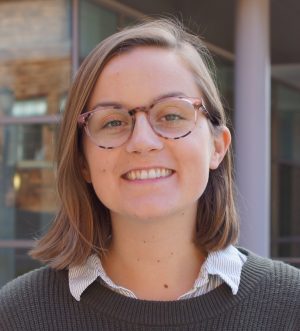 Sara Glade is a PhD student in Environmental Engineering whose InFEWS work focuses on drinking water treatment technology development and implementation.
Sara Glade is a PhD student in Environmental Engineering whose InFEWS work focuses on drinking water treatment technology development and implementation.
Why did you seek to become an INFEWS Fellow and Development Engineering student?
My exposure to Development Engineering began during my undergraduate career when I was introduced to the organization Engineers Without Borders. I became deeply invested in the chapter, working on a water supply project in Haiti and a bridge project in Nicaragua. My passion for water came to fruition in the field in Haiti, after seeing children walk miles to collect polluted water. Here I learned the potential of engineering and water to improve the quality of people’s lives, which inevitably drew me to be interested in researching water treatment technologies for disadvantaged regions.
At UC Berkeley, I have been part of many social impact driven engineering projects. In the course DE 200, I worked with Sanivation, a container-based sanitation company located in Kenya. In CE 209, I worked with Berkeley-based startup SimpleWater to survey rural communities in California with arsenic contaminated drinking water about their water and point of use treatment. I learned first-hand the challenges communities throughout the Central Valley and the U.S. face with drinking water contamination. This ignited a strong interest in using Development Engineering to work on U.S. water issues, which I carried into my research. All of these experiences, before and during Berkeley, ultimately led me to the Development Engineering program.
Throughout my time at Berkeley, I have also grown to better understand and appreciate the link between food, energy, and water systems, and this drew me to the InFEWS program. My current research has also pushed me to think critically about these connections as well.
Tell us about your current research.
My current research started in quite a unique way. A UC Davis professor visited a community in the California Central Valley, in Allensworth, and met several community members looking for appropriate arsenic treatment technology solutions. This professor then contacted my advisor, Ashok Gadgil, because the Gadgil Lab has over 10 years of experience working on a novel arsenic treatment technology called ElectroChemical Arsenic Remediation (ECAR).
On our first call with several community leaders, we were asked to help treat water on their farm for a livestock application. The development of ECAR at small scale on this farm site would be a unique opportunity for economic development in the community, for fresh food to be available nearby, and could also enable next steps of a demonstration plant and community treatment plant for drinking water. I knew this project would be perfect for my interests in U.S. water, treatment technology development, and implementation.
Thus far, I have conducted lab scale tests to understand parameters useful in designing the field trial, have developed design constraints unique to the U.S. context, have discussed the field trial design with our community partners, and have presented our work to a number of stakeholders, including local nonprofits. The next step of this work is to finish raising funds, and then implement and operate the field trial. Alongside the field trial, I plan to conduct interviews with community members to understand their perception of this new technology. Overall, I hope to increase knowledge around appropriate drinking water treatment technology development and implementation in small, low-income communities in the United States.
What are your long-term goals?
After my PhD, I would like to continue working on development and implementation of water treatment projects, either in the U.S. or internationally, and could see myself working in low-resource regions on projects that are in between basic science and commercialization. It seems amazing technologies and research that could serve the needs of disadvantaged populations sometimes get stuck in papers or at small scale. I hope to work on bridging this gap throughout my future career, with the hopes of bringing to fruition many technologies that otherwise would stay trapped in a text. I am also considering doing a policy fellowship after my PhD. From the work I have done on U.S. water thus far, I have become very interested in how policy can prohibit or enhance access to safe drinking water in affected regions.
Christopher Hyun
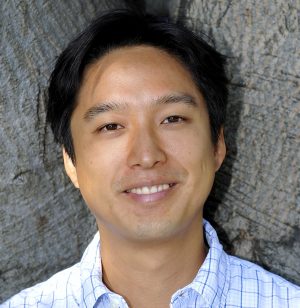 Christopher Hyun is pursuing a PhD from the Energy and Resources Group with a designated emphasis in Development Engineering; his InFEWS work focuses on water and sanitation planning.
Christopher Hyun is pursuing a PhD from the Energy and Resources Group with a designated emphasis in Development Engineering; his InFEWS work focuses on water and sanitation planning.
What drew you to the InFEWS Fellowship?
What drew me to InFEWS is its community of learning. I’ve been working in the development sector for over a decade, gaining experience in income generation, capacity building, and water- and sanitation-related research. I’ve had the privilege of working with environmental organizations and institutions on water and sanitation, such as the Centre for Science and Environment, Banaras Hindu University, IIT-Bombay, and CDD Society in India. Sanitation is not often considered an important sector at the nexus of food, energy, and water, although FEW systems thinking has the potential to help solve sanitation’s challenges; so this is an opportunity for me to learn from other scholars in the InFEWS community. Also, I am currently observing a sanitation revolution occurring in the development sector about which I am excited to share with the community as innovations unfold, integrating with an increasing number of FEW systems. Furthermore, I enjoy contributing to discussions about the relationship between technological innovation and social structures as well as general social and governance perspectives of FEWS.
What are your overall research interests?
I recently completed a research project, working with water valvemen to help improve intermittent water systems and partnering with NextDrop and the Bangalore Water Supply and Sewerage Board. As I continue with my PhD research, I hope to uncover pro-poor sanitation solutions that have long-term impacts on food, energy, and water systems in urban contexts of low- and middle-income countries. I focus on the governance of sanitation in urban India, following decision-making by international funders and government officials as well as by the engineers who design low-energy intensive technologies (such as biogas digesters) and the local farmers who reuse the wastewater and fecal sludge. I am particularly interested in capacity building for innovative sanitation solutions and how capacity building is conceptualized and implemented across scales of governance in sanitation.
Why is capacity building so important in your research?
Local officials and engineers often don’t have the capacity to make design decisions, and farmers may oppose new sanitation systems as they would rather obtain fecal sludge directly (but unsafely) from septic trucks. In my research, I aim to understand such local dynamics and to uncover ways to mitigate the gaps between scales of sanitation governance. Capacity building is often considered a solution to such challenges. I partner with the Consortium for DEWATS Dissemination (CDD) in India, internationally recognized for innovations in low-cost sanitation systems, reuse, and capacity building. I have worked closely with CDD, designing and implementing sanitation training focused on CDD’s “toilet to table” philosophy. In research, I utilize an ethnographic approach, conducting observations and interviews with stakeholders, civil society organizations, and government officials. My goal is not only to uncover how capacity building can be more effective, but more fundamentally how capacity building is being defined and implemented, including by whom and for whom. Uncovering capacity building not only informs development practice but it also helps us understand how and why technological transitions may (or may not) happen, which I believe is at the heart of both Development Engineering and InFEWS.
George Moore
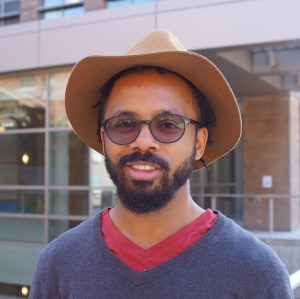 George Moore is a Mechanical Engineering and Development Engineering doctoral student whose InFEWS research focuses on food, energy, water systems with the Pinoleville Pomo Nation of Northern California.
George Moore is a Mechanical Engineering and Development Engineering doctoral student whose InFEWS research focuses on food, energy, water systems with the Pinoleville Pomo Nation of Northern California.
What drew you to research on sustainable energy and water resources?
My first opportunity to work on InFEWS-related research came during my summer research internship at the University of Michigan in 2015. There, I studied a sustainable manufacturing project for an underdeveloped community in Uganda. Reflecting on my own experience growing up as a minority in the rural South, this project made me feel personally connected and empathetic towards underserved communities globally. I read about several case studies where organizations or researchers engaged with communities in developing countries and the original plan of action had to be altered to accommodate for context and cultural values that could not have been foreseen. Although this seems obvious to me now, I was surprised and grew curious about the methods used to design for communities like these in ways that would precipitate not only tangible goods, but also sustainable practices related to the handling of primal needs like food, water, and energy resources.
How did you come to work with the Pinoleville Pomo Nation (PPN) of Northern California?
As a PhD student working with Professor Alice Agogino and two other graduate students, I helped plan field research conducted at the PPN’s annual Big Time festival in Summer 2017. There, we were able to observe and engage with the PPN community in their own sacred environment. In addition, we provided an exercise that encouraged PPN members, and others in attendance, to articulate their opinions of the current problems within the PPN community as well as potential solutions to those problems. We offered five suggestive themes to categorize these responses, in which most of them cater to the vision of the InFEWS initiative: Food, Water, Energy, Education, and Well Being.
Since then, we have continued to work with PPN community leaders to establish how to progress with a project that would align the needs of the PPN community with those of our research goals. The PPN community has expressed interest in STEAM (Science, Technology, Engineering, Art, and Math) Education, and over the past year has started an Academic Success Center, invested in a makerspace, and finished the second year of its annual STEAM summer camp. With this in mind, we have re-framed our research scope to emphasize InFEWS themes within the context of STEAM education and the design of culturally sensitive makerspaces.
What are your long-term goals?
I’m genuinely excited to be working on a project that aligns so much with my personal and academic goals. I think that success for the PPN project requires our roles as facilitators to become obsolete—creating lasting change that will continue long after our presence is removed. Also, we hope that whatever is produced from this collaboration upholds the values of the community. To achieve that goal, we have been careful to minimize the ideas and subtle influences that we might impose as researchers.
Lorenzo Rosa
Lorenzo Rosa 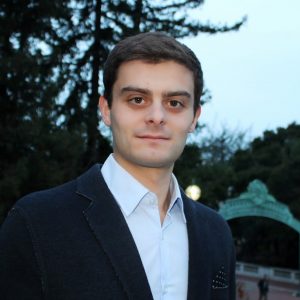 is a PhD candidate in the Department of Environmental Science, Policy, and Management whose InFEWS research investigates where water scarcity may limit energy and food systems.
is a PhD candidate in the Department of Environmental Science, Policy, and Management whose InFEWS research investigates where water scarcity may limit energy and food systems.
How have your academic interests informed your InFEWS work?
My training is in engineering, hydrology, and energetics. Before pursuing a PhD at UC Berkeley, I received master’s and bachelor’s degrees in Environmental Engineering from Polytechnic University of Milan, Italy and studied abroad at KTH Royal Institute of Technology and the University of Virginia. Since 2017, I have been awarded an Ermenegildo Zegna Founder’s Scholarship. Over the years, while studying the chemical processes of engineering as they relate to the environment, I noticed that the biggest environmental polluters are the food and energy sectors. This got me thinking I should focus on energy and food systems and hydrology to develop a framework using water balance.
Why focus on water balance?
An often-overlooked aspect of water requirements for economic activities is that water is a limited resource and some of these activities could be constrained by water scarcity to the point of limiting the development of some assets. For instance, lack of water resources can impede the extraction of some minerals, the generation of electricity from coal fired and solar power plants, the production of biofuels, or the closure of the yield gap in agricultural land. In all of these cases, water scarcity might be a limit to these activities.
While substantial additional water will be required to support future food and energy production, it is not clear whether and where local freshwater availability is sufficient to sustainably meet future water consumption. The extent to which irrigation can be expanded within presently rain fed cultivated land without depleting environmental flows remains poorly understood. It also remains unclear where and to what extent new water demanding energy projects, such as post- combustion CCS and hydraulic fracturing, might be constrained by local water availability.
How does your research on water scarcity differ from other assessments?
Previous efforts have assessed the water footprint of energy and food systems from the life cycle assessment perspective, focusing on a comprehensive accounting of all water costs associated with production and processing, but without examining the availability or source of the required water. The novelty of my research consists in the assessment of the impacts of energy and agricultural systems on the local water balance using a hydrologic approach, identifying the regions in which new forms of potential water consumption from the energy sector could compete with agriculture and other human activities, and areas in which water demand from energy and/or food systems could not be sustainably met because of water scarcity.
I believe neglecting water availability as one of the possible factors constraining the development of economic activities may lead to unaccounted business, social, and environmental risks. By adopting a hydrologic perspective that considers water availability and demand together, my aim is that decision makers, investors, and local communities can better understand the water and food security implications of energy and agricultural production while avoiding unintended environmental consequences.
Tell us about your dissertation work.
My dissertation will provide a quantitative framework to make informed investment decisions involving natural assets that are susceptible to water risks. As such, I am currently investigating where water scarcity may limit hydraulic fracturing and food production–thus creating risks for local populations and investors. My goal is to identify global hotspots of where human activities compete for water allocations, potentially creating social, environmental, and economic risks. My belief is that the limited understanding of the potential impacts of human activities on water resources prevents the implementation of a sound management plan for a sustainable human development. For example, we are depleting ecosystems in rivers because we are taking too much water from them. The classic example is the Colorado River. It runs dry and the water does not reach the ocean. Another example is non-renewable ground water mining. Water that was stored millennia ago is being used unsustainably in India, Pakistan, and Central California, among other places.
They key is understanding where we can increase water production, because we know the population is going to reach 9.5 billion by 2050. We’ll need to add 50 percent of current water production to feed all these people. And so we’ll need to figure out where we can (and cannot) produce more food with water in a sustainable way. In other words, we’ll need to move production where the water is or swap crops or use less water-intensive crops or transport water—so that we can increase food production for 2.8 billion people.
The InFEWS program is supported by the National Science Foundation (infews.berkeley.edu ; DGE # 1633740).
Multiplicity Not Singularity: Ken Goldberg on the Future of Work
By Lisa Bauer
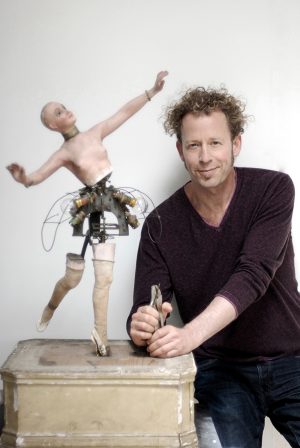
Robotics Professor Ken Goldberg is the first to acknowledge the public anxiety about what automation and AI might mean for future jobs. Singularity—the hypothesis that AI will become increasingly powerful, decimating professions and remaking civilization—is becoming a mainstream concept. All one has to do is read news headlines about robot-driven factories, watch movies like “Ex Machina,” and listen to public figures like Elon Musk stating that AI poses our greatest existential threat.
Yet at a recent Blum Center Faculty Salon on the Digital Transformation of Development, Goldberg, UC Berkeley’s Department Chair of Industrial Engineering and Operations Research and the William S. Floyd Jr. Distinguished Chair in Engineering, argued that such fears are exaggerated. He is among computer scientists and roboticists who believe there is inadequate evidence to support the mass unemployment theories, such as the often cited Oxford University study that estimated 47 percent of U.S. jobs are at risk of computerization.
Rather than replace human jobs, Goldberg believes artificial intelligence and robots will help to diversify human thinking. And rather than worry about a robot apocalypse, he urges a focus on what he calls Multiplicity, in which diverse combinations of people and machines work together to solve problems and innovate.
“Multiplicity is not science fiction. It’s a reality that is already a part of our daily lives,” said Goldberg.
To prove his thesis he references Google search, Amazon and Netflix’s personalized consumer recommendations, Waze navigation, and spam filtering—examples of machine learning that lead to rapid, wide-scale results. One of Goldberg’s points is that the public has long held a fascination with “creative overreach” and mechanized monsters (e.g., Pygmalion, Frankenstein, the Terminator). Yet our greatest AI successes so far have not involved walking, talking robots or even autonomous vehicles—they have involved machine learning for games, such Google DeepMind’s mastery of chess. This is because machines excel when operating in a controlled information system; whereas navigating space is dynamic and uncertain.
Goldberg said the race to develop fully autonomous vehicles exemplifies this misunderstanding. While the public has been led to believe that autonomous cars are just a few years away, engineers and computer scientists say there are many barriers to overcome because driving is not a game with set variables. It involves navigating double parked trucks, weaving bikers, kids playing, and shade and light obscuring vision. A computer program is currently not capable of responding to these myriad, unpredictable situations. Indeed, Goldberg argues we are just as likely to be headed for an “AI Winter” rather than a near future with driverless cars.
Goldberg believes that automation will both eliminate and create new jobs. Quality of work may be improved by decreasing the amount of time spent on mundane tasks. One example of this is the ATM machine, which was initially met with outcry from bank tellers who believed their jobs were doomed. Instead, the lower costs of running a branch allowed banks to open more branches and expand services, ultimately increasing the number of overall jobs while also creating new types of jobs in sales and customer services.
“People are claiming that AI will steal truck driving jobs,” said Goldberg. “but the fact is we have a shortage of truck drivers and there’s demand for more. Technology will make their jobs better.”
Proceeding further, Goldberg compared automation anxiety to anti-immigrant politics, quoting Oliver Morton’s observation that “robots are immigrants, from the future.” Historically, job losses have been blamed on immigrants; today said Goldberg, robots are the latest scapegoats.
“We need a shift in mindset, rather than ‘us against the machines,’” emphasized Goldberg. “let’s focus on ‘us with the machines,’ and explore the potential for machine collaboration—how the combined strengths of diverse humans and diverse machines can enhance the human experience.”
“Cognitive Diversity, AI & the Future of Work,” a study co-authored by Goldberg and Vinod Kumar, CEO of Tata Communications, reports that much of education today emphasizes conformity, obedience, and uniformity, while the skills of tomorrow demand creativity, diversity, and flexibility. Most of the 120 global business executives interviewed for the study believe AI will increase the number of roles in the workplace and have the potential to enhance human collaboration and cognitive diversity within groups. Among the report’s conclusions is that what we need is not new forms of welfare and unemployment, but a shift in education that will better facilitate job transitions.
Goldberg said advances in agricultural machinery at the beginning of the last century prompted a need to train people with non-farming skills, creating what would become the “High School Movement.” The impact was huge: in 1910, only 10 percent of Americans graduated from high school; by 1950, 80 percent held a high school degree.
Given this precedent, Goldberg proposes a “Multiplicity Movement” to foster uniquely human skills that AI and robots cannot replicate: creativity, curiosity, imagination, empathy, human communication, diversity, and innovation. He recommended the U.S. reinforce creative and social skills in high schools and universities, so that Americans are in position to leverage diverse machines alongside diverse groups of people to amplify intelligence and spark high impact problem solving.
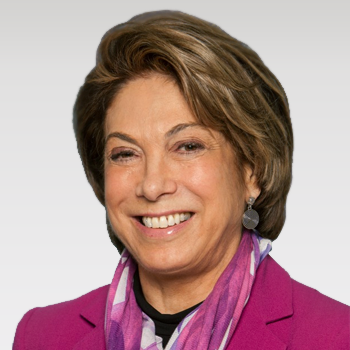
In response, Laura Tyson, Blum Center chair and interim dean of the Haas School of Business, expressed greater apprehension about the effects of artificial intelligence on the future of work. She emphasized that each country and region will experience the digital transformation differently, according to factors like local policies and politics, demographics, and educational attainment. Tyson, who has years of policy experience in the U.S. federal government and international organizations, pushed the group to think more broadly—not just in terms of the future of jobs but also in terms of what she called the “future of livelihoods.”
“Individual workers should not have to bear the costs of transitions from jobs that are eliminated by technology to jobs that are created by technology,” she said. “We need to ensure that livelihoods are not compromised in the transition, and that we are counteracting rather than reinforcing economic inequality.”
Tyson contrasted concerns about the effects of AI on the future of work in the U.S. and other developed countries with the enthusiasm for AI in China where “automation anxiety” hardly exists. As a result of the largest and fastest industrialization and urbanization in history, China has a growing and thriving middle class that is heavily reliant on new technologies. Based on the rapid growth in living standards over the past 30 years, Chinese citizens expect that they will continue to benefit from new AI-based technologies.
The substitution of intelligent machines for low-cost, low-productivity workers poses the greatest challenge to the future of livelihoods in Africa. Such machines threaten the strategy of rapid development through industrialization based on low-labor costs and labor arbitrage. By 2050, Africa’s youth population is estimated to increase by 50 percent to 945 million. The continent will have the largest number of young people in the world. What kinds of work will they do? What kinds of livelihoods will be possible? What will be the place of African countries in global trade and global supply chains when the availability of comparatively cheap labor is no longer a competitive advantage?
Juxtaposing the youth explosion in Africa, the aging demographic patterns in Japan and Germany, the U.S.’s skills and wealth gap, and the success of China in rapid industrialization and global trade, Tyson posed several questions to consider: How will we ensure that all countries and communities benefit from AI and automation? How do mid-career professionals adjust if their job becomes obsolete? How will mid-career professionals gain new skills? Who pays for it? How do we prepare diverse populations for smooth economic and labor transitions?
Tyson advocated that nations develop comprehensive educational and development strategies that support the livelihoods of their citizens—and that share the benefits of intelligent machines broadly.
Autodesk Foundation CEO Lynelle Cameron on Courage, Creativity, and Critical Thinking
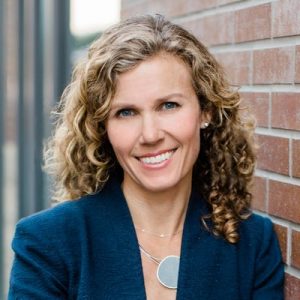
Lynelle Cameron (Haas MBA ’01) has over 20 years of experience helping companies capitalize on market opportunities related to sustainability and climate change. Cameron is currently Vice President of Sustainability at Autodesk and CEO of the Autodesk Foundation. She leads a team transforming the design, manufacturing, and construction industries to capitalize on the business opportunities of a low-carbon economy.
Under her leadership, Autodesk has won numerous awards for sustainability, climate leadership, and philanthropy. Through the Autodesk Foundation, Cameron has invested over $15 million in entrepreneurs and innovators who are designing a sustainable world for billions of people. Cameron is proving that companies can do well by doing good—in ways that strengthen brand reputation, recruit and retain the next generation of employees, and deliver financial results to shareholders.
She sat down with the Blum Center to talk about sustainability, global challenges, and 21st century skills.
How has your perspective on sustainability evolved during your tenure at Autodesk?
Surprisingly, my perspective on sustainability has remained remarkably consistent over the years. As I wrote in a California Management Review article back in 2001 (vol 43, no. 3 Spring 2001), “Sustainability has become a strategic imperative for all businesses in the 21st century. It has become a fundamental market force affecting long-term financial viability and success.” This is as true today as it was back then.
My understanding, however, of what it would take to get the private sector toshare this view and to embrace the business opportunity that sustainability provides, has definitely evolved. I thought by now sustainability would be regarded in the way quality is—table stakes for every business everywhere. And yet, with each passing year, the stakes become higher and the urgency greater.
When I started leading sustainability teams at HP and later at Autodesk, sustainability was barely viewed as a thought leadership opportunity, much less a business driver. Over the years, this has slowly started to change. Companies like Autodesk are reporting about sustainability and climate change in their 10-Ks, embracing the UN sustainable development goals and setting bold targets, setting up board committees on sustainability, and tying executive compensation to sustainability performance. Employees are voting with their feet—joining companies or leaving them based on sustainability performance. This is all progress worth celebrating. And yet, we are far from where we need to be as a global business community.
What are the skills needed for 21st-century changemakers? How can universities best enable those skills?
In a book called 21 Lessons for the 21st Century, Yuval Harare talks about the four Cs that will be needed to succeed in the age of automation: critical thinking, creativity, communication, and collaboration. As automation technology increasingly handles certain tasks, these distinctly human skills are vital. But there’s a fifth one that needs to be added: courage. Courage to look into the future and be honest about what we are up against. Courage to talk about climate change even when people don’t want to talk about it. Courage to be a leader willing to take risks and listen to crazy or unpopular ideas, wherever they may come from.
I am fortunate to have had mentors, advocates, and allies at every stage of my career propelling me forward and boosting my confidence despite the obstacles in my way. During my time at Haas, I benefited from an environment where ideas are explored and nurtured. As a student, I had a professor who agreed to oversee an independent study to develop a business plan for the Center for Responsible Business, which is celebrating its 15th anniversary this year. To pay it forward, I try to pay extra attention to other nascent ideas, and create conditions for them to take root—just as others did for me.
Universities have a vital role to play in nurturing both people and ideas and equipping the next generation with the adaptability, resilience, and stamina to make the world a better place for billions of people.
At the Blum Center, we have documented that when university-based engineering projects are geared to social impact, more women and underrepresented minorities get involved. Have you seen similar trends at the Autodesk Foundation or elsewhere?
Yes, your findings are consistent with my experience at Autodesk. As an example, the Autodesk Foundation has more than 40 organizations in our portfolio and close to 50 percent of them are led by women or have a woman on the founding team. These leaders bring deep sector knowledge across a broad spectrum of industries—from emerging technologies like AI and robotics, to the architecture, construction, and manufacturing fields.
Similarly, we offer an internship program that matches students who have design and engineering expertise with impact-driven organizations in our portfolio. In our most recent cohort of interns, more than 80 percent were women or minorities. Women seem to be drawn to deliver positive impact to the world and pursue careers that allow them to do so.
In contrast, only 9 percent of the construction workforce is female, and a recent study of the top 100 architecture firms showed that only three were led by women. As more companies recognize the opportunity to align their business with solving important global challenges, I believe women will be drawn to the field and recognize engineering and related industries as wildly impactful career paths.
What are some of the most impressive impact design projects you’ve seen in recent years?
This is always a tough question because these days there are many people using their talents and skills to create positive impact. The first that comes to mind is WeRobotics. They’re using robots and drones to deliver snake anti-venom to remote villages or to drop sterile mosquito nets in the rainforest to fight Zika. They also train students on robotics and are inspiring young leaders to solve important problems while giving them employable skills.
Build Change is another one. They are adopting the latest technologies to design and build disaster-resistant homes and schools. Not only are they rebuilding after disasters like the 2015 earthquake in Nepal, but they are also working quickly to prevent future disasters by working with local communities to improve building codes in disaster prone regions of the world. Their teams of designers and architects are using VR and automation to dramatically speed up their ability to retrofit homes and help communities prepare for when disaster strikes.
Every organization in our investment portfolio from Village Capital to Kenya Climate Innovation Center is creating positive impact; I invite you to learn more about them at www.autodesk.org.
For students interested in infrastructure, architectural, and engineering software and the built planet what are the bright spots of the future? What do they have to look forward to?
Despite the global challenges we face, and the increasing urgency of these challenges, I remain an optimist. I am confident that as humans we can and will solve today’s challenges, although it will take a radically different approach than what we’ve used to date. When we look out into the future, we see that in 2050 there will be 10 billion people on Earth, with most living in cities and more than half enjoying middle-class lifestyles. It will require twice as much energy to power these lifestyles. While this is daunting, it is also the most important design challenge of our time.
And the good news is that I believe we have the technology today—with ever-increasing levels of automation and machine intelligence, to provide humans with the knowledge to design and make more things for more people. With sophisticated automation technology, we can now handle complex systems to design and make everything better and with a lot less negative impact on the planet. With computers now as our design partners, we have collaborative intelligence that will be necessary to change the trajectory we are on.
But it will take a new mindset—one overflowing with courage, creativity, and critical thinking to leverage automation technology in a way that ensures we design a better future for billions of people.
-Tamara Straus
Computer Science Has the Power to Impact the Lives of the 99 Percent
By Divya Nekkanti
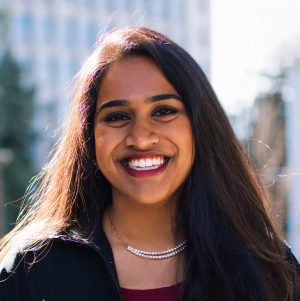 During high school, I looked unquestionably at technology leaders like Bill Gates and his wife Melinda, whose philanthropic foundation aimed to solve every apparent misfortune in the Global South. Even more, I found solace in the “giving back” days that Silicon Valley tech companies employed as a fulfillment of their corporate social responsibility.
During high school, I looked unquestionably at technology leaders like Bill Gates and his wife Melinda, whose philanthropic foundation aimed to solve every apparent misfortune in the Global South. Even more, I found solace in the “giving back” days that Silicon Valley tech companies employed as a fulfillment of their corporate social responsibility.
But increasingly, no matter where I look–in the world, in my community, within myself–tech and development are misaligned. There seem to be two mutually exclusive avenues of engaging with the world–innovating or giving–the only overlap for which involves donating money to admirable causes or engaging in occasional volunteer service. This dichotomy between the fast-paced, disruptive tech world that doesn’t afford engineers the time to fully understand the complexities of social challenges and the slower-moving development sphere, where the redundancy of approaches and lack of human, financial, and tech capital hinder growth, have become more and more apparent to me in my experiences at Cal.
Perhaps this dichotomy was once not so strong, but as an Electrical Engineering and Computer Science (EECS) major today there’s a very distinct path you follow. You take onerous math and programming classes, cease at nothing to get accepted into the engineering or business consulting organizations that flood Sproul Plaza in the semester’s first few weeks, and then embark on a toxic pursuit of software engineering internships at Facebook, Google, Microsoft, Salesforce, Amazon, etc. You attend every info session, stand in hour-long lines to talk to a single recruiter, and apply to hundreds of companies without distinction as to why–all because the sole purpose of your “technical” education is to work at the biggest, most profitable software company in the Valley.
Application of knowledge becomes fixated on the destination rather than the journey, and despite going to a school as economically and experientially diverse as Berkeley, you get so lost in the allure of free T-shirts and food, the glitz and glamour, that social problems–even at the campus level–go unnoticed. Despite having few requirements outside the EECS major, the exhaustion from technical courses prompts you to deliberately pursue humanities courses that offer the highest average grade and lowest workload, rather than taking classes that actually pique your interest.
Disillusioned by this herd mentality and eager to explore a multidisciplinary Berkeley education, I decided to pursue a minor in Global Poverty & Practice. Taking on this minor was the best decision I made at Cal, as it is affording me an evaluative lens not only to examine determinants of poverty, but for the first time to critically analyze the bubble I have been living in for my entire life in Silicon Valley. A productive hiatus from my homogenous computer science courses, GPP is allowing me to daily interact with students from a broad array of majors and backgrounds, whose perspectives challenge my own and elevate every classroom discussion.
Yet despite the minor’s longstanding diversity, I see few engineers, even fewer computer scientists, in my GPP classes. At the same time, across campus I see few engineering and computer science students willing to confront the economic misfortune and inequality of access that exist beyond Soda Hall. With my eyes more open than ever been, I can now critically assess a variety of complexities: the tax evasion benefits and occasional alternate agendas behind philanthropic donations; the dependencies that result from inconsistent foreign aid; and the millions of laptops donated by the tech community’s One Laptop Per Child program, which never reached children in need.
Unlike the abundance of engineering courses that posit innovation must be accelerated to be disruptive (thus often fabricating problems to “solve” and oversimplifying ones that already exist), GPP courses are making me careful about my language, as I “practice” how to effectively address people in poverty (rather than naively think I can “serve” them).
Never anticipating the ability to reconcile my passions for tech and development, last summer I intentionally took on two very different internships: one with an NGO that focuses on education, economic empowerment, and equality for women and girls in developing regions; and the other an analytics consulting company.
At the NGO, I actively tried to refrain from imposing my software skills, as I was wary of oversimplifying the problems the nonprofit inwardly faced and outwardly worked on with redundant tech solutions. Yet day after day, the need for tech internally to scale the organization and externally to enrich the organization’s education programs, felt glaringly critical.
My most surprising discovery was the NGO’s high turnover, which appeared to engender bottlenecks like lack of data standardization. As employees came and went on their own volition, they stored years of donor and program information on different online services, in independent accounts, and with inconsistent formats. The irregularities on this scale of data made communication with donors and tracking of scholarship students nearly impossible, with half the incoming mail consisting of emails undeliverable as addressed. Seeing as the NGO was primarily funded by donors, the gravity of mismanaged data heightened by the day.
Even more of a hurdle was the lack of technology for educational programming and outreach. While the organization received Chromebook donations from Google, low electricity in the areas where the NGO work prevented deployment of the laptops. And while the girls finishing high school requested technical curriculum in robotics and web development, there was no one with the bandwidth to structure the programs. Meanwhile, in my second internship at the analytics consulting company, the resources seemed endless. If I didn’t like the size of my Mac, with a few clicks I could instantly order a new one. Unlike at the NGO, where I knew the faces and names of the women my work was directly affecting, working on software projects at a large tech company felt like coding in a black box. I was assured there were huge companies on the other end, transforming their businesses with the firm’s services, but my role in delivering this value was largely ambiguous and concerns were cursorily dismissed.
It was only during my practice at the nonprofit that I began to view challenges of sustaining an NGO and achieving development goals as technical opportunities. Sourcing data from all accounts, I wrote scripts to parse CSVs and standardize entry formats, transitioning the entire organization onto Salesforce’s nonprofit success pack for centralized donor and program management. I researched solar chargers and the historical reception of robotics and web development curricula in the NGO’s target regions, wrote cost/benefit analyses, and developed technologies for later deployment in schools.
With every task I completed and every proposal I pursued, I realized how invaluable technology in the social sector has the potential to be, especially in streamlining internal processes and scaling external facing projects. Connecting the two disparate dots in my life, I have felt fulfilled and inspired. I have realized innovation isn’t solely synonymous with the next iOS update, computer science has the power to impact the lives of the 99 percent, and the “technical vs. nontechnical” mentality we unconsciously employ fails to represent the very multifaceted and interdisciplinary approaches requisite in development.
As an engineer, I have gleaned that it is possible to transcend the stereotypical boundaries of a traditional tech job, that it doesn’t take the philanthropic capital of a billionaire to change the world, and most importantly that I don’t need to compromise my technical background to alter paradigms in the development sector. Instead, I can actionably address the assemblage of social issues that keep me up at night with the skills I learn during the day.
Divya Nekkanti ’20 is a UC Berkeley Electrical Engineering & Computer Science major and a Global Poverty and Practice minor from San Jose, California.
Can There Be A National Security and Development Agenda for the U.S.? Michael Nacht at the Blum Center
By Tamara Straus
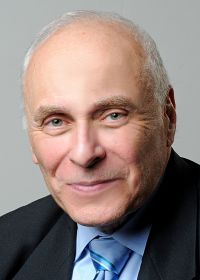 On October 10 at the first Blum Center Faculty Luncheon devoted to “Digital Transformation of Development,” Michael Nacht, the Thomas and Alison Schneider Chair in Public Policy, presented on “The Nexus of National Security, Diplomacy, and Development”—and gave a sober assessment of what that nexus might produce under the Trump administration.
On October 10 at the first Blum Center Faculty Luncheon devoted to “Digital Transformation of Development,” Michael Nacht, the Thomas and Alison Schneider Chair in Public Policy, presented on “The Nexus of National Security, Diplomacy, and Development”—and gave a sober assessment of what that nexus might produce under the Trump administration.
Nacht, who has served three tours of duty in government, most recently as Assistant Secretary of Defense for Global Strategic Affairs (2009-2010), provided an overview of government investments in the defense and development sectors. He reminded the group of Blum Center-affiliated faculty that the research which led to the atomic bomb was entirely government funded and led through national labs, including Lawrence Livermore National Lab.
“Thinking about it now years later,” said Nacht, “the community that makes up Lawrence Livermore National Lab understands things have really changed. There has been a proliferation of technologies and the vast majority of the innovative work is being done by the private sector. In fact, 85 percent of the research and development in this country is being funded by the private sector, not the government. It has spillover effects, not just in national security, but in development.”
Nacht was referencing a 2018 LLNL book on this shift he co-edited entitled Strategic Latency: Red, White, and Blue—Managing the National and International Security Consequences of Disruptive Technologies. The book looks at the implications of artificial intelligence, bioengineering, and other technological advances and underscores the consequences of disruptive paths are never straight. “We appreciate the seeming contradictions that can lead life-saving technologies in unintended negative directions, or prompt military technologies toward peace and prosperity through spinoffs or war-avoiding defenses,” Nacht and his co-editor Zachary Davis write in their introduction.
Yet Nacht has become a pessimist. He said that national security and international development interests don’t have much current geopolitical overlap. That is because national security interests are focused on Russia, China, Iran, North Korea, Islamic terrorism, cyber threats, and space-related work—and international development interests are focused on areas of high poverty, particularly Sub-Saharan Africa and Southeast Asia. “Really, the only two [developing] countries that transcend to the national security community are India and Iraq,” he said.
Also, Nacht is adamant that the current presidential administration is making defense, diplomacy, and development intersections unlikely because of what he called “the Trump team’s tremendous rejection of multilateral instruments.” He added: “There may be outright hostility in trying to apply national security interests to international development interests.”
Nacht did point out the Department of Defense under former Secretary of Defense Ash Carter (2015-2017) focused on strengthening ties between the DoD and the tech community. In August 2015, DoD established the DIUX, the Defense Intelligence Unit Experimental, with headquarters in Mountain View, to help the U.S. military make faster use of emerging commercial technologies, promote joint appointments, and imbue the defense department with a more entrepreneurial culture. Nacht said those efforts have not ceased, but it is unclear whether they are, or can be, a priority under Secretary of Defense James Mattis.
Still, Nacht pointed out that we will continue to see areas of confluence between defense, technology, and even development, especially in academia. He cited the example of UC Berkeley Bioengineering Professor Jay Keasling, whose research on the metabolic pathways inside cells led to a semi-synthetic version of the antimalarial drug artemisinin, which has driven down the cost of treatment and saved lives in Sub-Saharan Africa, creating greater equity and stability.
Yet Nacht expressed concern that new technologies, particularly AI and machine learning, could devastate the developing world. Citing a September 17, 2018 Bloomberg article on the subject, he said China has been able to leverage its large population and low costs to build a manufacturing sector that is producing better and more technology-intensive goods—while India, with its large English-speaking population and low costs, has become a hub for outsourcing low-end, white-collar jobs in fields like business-process outsourcing and software testing. Now, however, with AI’s accelerating automation of factories and customer service, corporations will bring many of these jobs back to where they are based, leading to a potentially explosive crisis.
“It’s a complicated pattern,” said Nacht. “Using technology to improve lives sometimes works and sometimes doesn’t.”
At the same time, Nacht noted that China’s investment in African and Latin American infrastructure in exchange for natural resources is a phenomenon that the U.S. cannot afford to ignore, especially as China does not proffer democracy building, human rights, or other political carrots as a condition for investment. This purely economic transaction, Nacht said, is one that the Trump administration might follow, ending decades of foreign policy initiatives.
Nacht concluded that the U.S. needs more strategic interaction between its economic and foreign policy positions in developing countries, but said reading the Trump administration’s tea leaves in this regard is next to impossible.
Among the discussants to respond to Nacht’s presentation was Joshua Blumenstock, assistant professor at the School of Information and director of the Data-Intensive Development Lab. His research lies at the intersection of machine learning and development economics, and focuses on using novel data and methods to better understand the causes and consequences of global poverty. Blumenstock noted that resource challenges arising from climate change should bring together the national security, technology, and development communities. But that the cultures of these communities are quite distinct and often at odds. He would like to see more efforts like DIUX to find commonalities between the communities.
Alice Agogino, professor of mechanical engineering and the Blum Center’s education director, said that one research effort combining climate change, development, technology, and national security is the center’s InFEWS (Innovations at the Nexus of Food, Energy, and Water Systems) program, supported by the National Science Foundation. InFEWS recognizes that food, energy, and water systems are under increasing stress, and it is thus becoming imperative to integrate social, ecological, physical, and built environments to meet growing demand for food, energy and water in the short term while also maintaining appropriate ecosystem services for the future. The Blum Center’s program is supporting graduate students working in these systems and helping them master interdisciplinary skills to create research that can be transferred out of the lab and into the field. “In essence,” said Agogino, “we are already supporting the very people who can serve at the nexus of national security and development. We call them Development Engineers.”
Brad DeLong, the Blum Center’s chief economist, ended the session with a long view of the history of war. Bringing the group to the present times, he said: “Now we find ourselves in a world with many security threats to us and to others, with a military that does not have a history to deal with the threats we face and the missions it is going to be asked to undertake. To amplify our problems, we have little idea about the form that the social practice of war will take in the 21st century. We do not expect to see the industrial total wars, the national liberation wars, the imperial little wars that we saw in the 20th century. But what will we see? What kind of U.S. military would best deal with what we are likely to see? And how can the U.S. government’s power—military, diplomatic, development—be deployed to eliminate as many 21st century war threats as possible?”
DeLong concluded: “A great deal of the potential causes of 21st-century war as a social practice, whatever form it turns out to take, are rooted or are aggravated by problems of development. And the U.S. military—with its tradition from the Black Hills-stealing army of the post-Civil War on up to the fast-moving powerful force of Desert Storm where we were tasked with being military police in a place where we did not speak the language—is not well-equipped to think about the force structure and the doctrine needed for the 21st century. Here I think we can really, genuinely help.”
Big Ideas Judge Ryan Shaening Pokrasso: A Commitment to Social Impact and the Law
Ryan Shaening Pokrasso (JD ’13), a San Francisco Bay Area attorney who specializes in assisting social entrepreneurs, has been a longtime judge and advisor for the Big Ideas student innovation competition.
Ryan entered the legal profession by way of nonprofit policy advocacy. He served as program director for New Energy Economy, a nonprofit organization in New Mexico, prior to attending law school at UC Berkeley School of Law. While with New Energy Economy, Ryan organized to support a cap on carbon emissions in New Mexico and he co-authored, lobbied for, and helped pass the New Mexico Green Jobs Act to provide funding for training programs in sustainable industries for disadvantaged individuals and families. He also led an effort that culminated in the establishment of the New Mexico Green Chamber of Commerce—an influential network of over 1,200 local businesses dedicated to strengthening local economies through sustainable business practices.
While at Boalt Hall, Ryan was a leader of Students for Economic and Environmental Justice and served as a board member for the Ecology Law Quarterly journal. Ryan worked with students, faculty, and legal practitioners to establish a student run Environmental Justice Clinic to provide pro bono legal services to communities disproportionately impacted by carbon intensive industries and to promote community-driven sustainable economic development in the Bay Area and California Central Valley.
Ryan’s diverse legal experience includes serving as: a law fellow for Accountability Counsel, where he supported indigenous communities impacted by large energy projects paid for by international financial institutions; a law clerk for Shute, Mihaly & Weinberger LLP, where he supported litigation on environmental issues on behalf of community groups, government agencies, and municipalities; and a law clerkship for U.S. Senator Dianne Feinstein’s Senate Judiciary Committee office where he provided extensive policy analysis of congressional proposals for the Senator.
Big Ideas sat down with Ryan to learn more about his career trajectory and commitment to supporting early stage social entrepreneurs.
Why did you found SPZ Legal?
My co-founder—Hash Zahed (UC Berkeley JD ’13)—and I had just completed legal fellowships when we decided to start SPZ. We were both in the process of thinking about next steps and “applying for a job” didn’t sound like it was the right fit for us. When we were in law school, we had talked about the possibility of starting some sort of business together, so that was on our radar. When our respective fellowships were ending, I texted Hash and asked him if he wanted to just start our own law firm. He wrote back, “Yes!”
We agreed that starting a firm would give us the opportunity to meet a lot of common goals. Specifically, we could structure our lives in a way that is often lacking from a career practicing law, we could have a great impact through using our legal knowledge and tools to assist social entrepreneurs in building business focused on social change and environmental stewardship, we could create a great place for others to work, and we could do all of this while making a good living for ourselves (which we did not do for the first couple of years!).
In law school, there is a common idea that you can either make a lot of money, work endless hours, and not be focused on having an impact on society, or you can not make money and have a societal impact. We thought this was a false dichotomy, so we started SPZ.
Can you talk about the dynamics between you and your co-founder? How do you complement each other? What advice do you have for students looking for a co-founder?
Hash and I were great friends prior to founding SPZ. You often hear that you should not mix friendship and business. And in working with our clients, we have definitely seen situations where friendships fell apart in the context of business relationships. But the reason that these friendships fall apart is a lack of communication—when friends were hesitant to have “hard conversations” with each other. Oftentimes, friends just assumed that they are on the same page about plans, roles, and responsibilities for the business, when they were not. However, when friends turned business partners are intentional about communication and focus on discussing things as they arise and as they are envisioned, then it can be the best type of business relationship. The reason for this is that friends have each others’ back in a way that business partners may not. When my son was born, Hash took on everything for a long time and never asked for anything in return. A business partner would not have done this. I am happy to say that Hash and I are still friends! And in fact, we recently added another partner to the firm—David De La Flor—who is also a great friend of ours.
So what I recommend to students looking for a co-founder is to focus on communication and personality fit. Skills, competency, and experience are obviously important, but if you do not enjoy working with your co-founder and spending A LOT of time with them, then it is not going to work.
What is it about working with startups that you’ve found most interesting?
Learning about our clients’ amazing work is by far the most interesting aspect of working with startups. We are learning about deep technology and innovative models for impact on a daily basis. It is really inspiring! And it is also so fun to be able to re-experience the excitement that comes with starting a company over and over again, as we work with first-time entrepreneurs.
Do you think more startup founders are trying to embed social impact into their business model from the start these days?
Absolutely! I don’t have the exact answer for why this is the case, but I feel like my generation and (even more so) the younger generation after me was raised with the idea that community is important and that there is a calling for each of us to be there for our community. And as community becomes more and more of a global concept, I think that the desire for folks to be there for the broader community around the world is increasing.
If you could give one piece of general advice to an early-stage social entrepreneur, what would it be?
Focus on communication—with co-founders, with customers, with vendors, with colleagues, and with anyone else who touches your business. If you have a perfect company and product but you don’t know how to be clear and friendly in communications, opportunities for success will fall by the wayside.
What’s one legal question that is never too early to start thinking about?
I would say that you should be thoughtful about protecting confidential information and IP as early as possible!
This is the first in a series of Q&As with Big Ideas judges and mentors.
VIDI—Another Way to See Surgery
By Veena Narashiman ’20
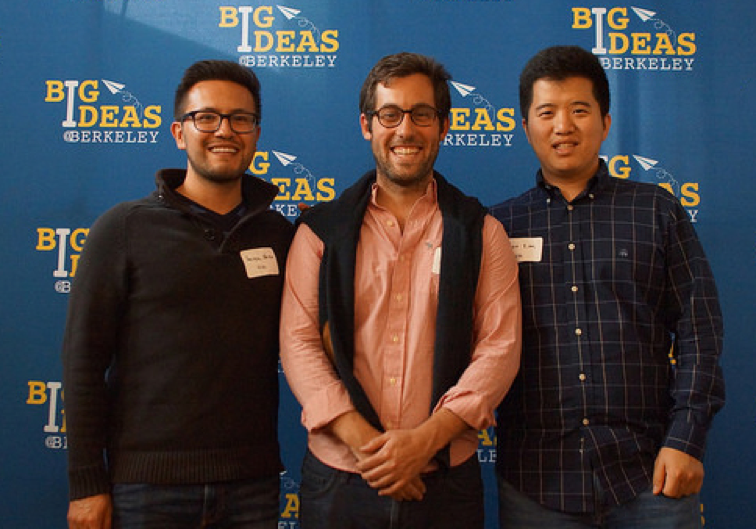 Basic surgeries are far from basic. They require approximately 50 tools, which take about 2 minutes each for an experienced technician to clean. Operations in a trauma unit require as many as 400 tools. And in both environments, surgical tools can be easily misplaced, thrown away, or misassembled. In fact in the U.S. alone, busy surgical teams inadvertently leave an instrument inside a patient about 1,500 times a year.
Basic surgeries are far from basic. They require approximately 50 tools, which take about 2 minutes each for an experienced technician to clean. Operations in a trauma unit require as many as 400 tools. And in both environments, surgical tools can be easily misplaced, thrown away, or misassembled. In fact in the U.S. alone, busy surgical teams inadvertently leave an instrument inside a patient about 1,500 times a year.
Solving the problem of surgical tool tracking is the focus of VIDI, a startup launched in November 2017 by Federico Alvarez del Blanco (’18 UC Berkeley MBA), John Kim (PhD ’18 UC Berkeley/UCSF Bioengineering), Hector Neira, (PhD ’18 UC Berkeley/UCSF Bioengineering), and Robert Kim (PhD candidate, UCSD MD/PhD, Neuroscience)—which received a Big Ideas 2nd place award in May in the Hardware for Good category.
The group of Cal students were inspired by a campus workshop on visual recognition sponsored by information technology company NEC. They began to realize that the same machine learning technologies being deployed for self-driving cars could be used to increase hospital efficiency by tracking the flow of sterilization tools used in operations and thus minimizing medical errors.
VIDI (which means “see” in Latin) is being developed to do the following: As technicians prepare instruments before a procedure, a camera facing the surgical tray tracks where each tool goes and ensures the number of tools present in the beginning remains constant throughout the process. When a tool goes missing, the technology alerts technicians of a possible error.
Neria, Kim, del Blanco, and Kim initially decided to target hospitals’ Central Processing Departments, where most tools are sterilized, since this area is more accessible than operating rooms. “We figured it was a good place to start. The less high stakes for a prototype, the better,” said John Kim. The team also realized sterilization operators are vastly underappreciated and underpaid, even though they are expected to enable fast turnover of surgical tools. “These technicians don’t stay in the same hospitals for a long time, because they burn out quickly. Also, every hospital has a different technique and different name for their procedures. It’s super easy to get confused and make a mistake as an operator,” added Kim.
Yet the focus on the Central Processing Departments did not yield enough information about tool loss. So the VIDI team members turned their attention to the surgical room. By placing a table top camera facing the surgical tray (filled with cleaned instruments), VIDI was able to automatically catalog the tools, a feature that cuts the operator’s time by half.
To further their idea, Hector Neria, John Kim, and Robert Kim participated in the National Science Foundation I-Corps, and conducted upwards of 100 interviews to understand the state of the medical field. From there, they entered the Haas NEC Innovative Solutions Fair, where they partnered with MBA student Federico Alvarez del Blanco, and subsequently won first place. Throughout the process, they explored new markets.
Said John Kim: “Our initial motivation was to tackle the issue of surgical tools being left in patients [a term called RSI], but that only accounts for 5 percent of all misuses… It’s not a huge market. We discovered that tracking the instruments was not well managed, and hospitals were having a hard time converting to new tools.”
At this stage, they were ready for Big Ideas ideation and mentorship. “Previous competitions were mainly focused on customer discovery,” said Kim. “We needed Big Ideas to receive feedback on our value proposition, and this feedback helped us understand more about our competitors and where they lie in the market.”
With the help of their Big Ideas mentor, product development specialist Bayan M. Qandil, they began to frame their business proposal. “One of our biggest hurdles was determining hospital workflow, and where VIDI fits in [it],” said Kim. “Big Ideas allowed us to experience the hospital atmosphere more intimately, so we could understand of how the day-to-day works. Their feedback was invaluable.”
One of their main takeaways and pivot points began with the realization that unlike other companies, VIDI users wouldn’t be the ones buying the product. In fact, the financial decision makers—hospital administrators—would never touch VIDI, yet they were still the people the team has to convince. “It’s a tricky situation to be in, but ultimately a good challenge,” said Kim. “Interviewing technicians from UCSF and the CEO of John Muir’s Medical Center helped us understand the balance of things. Hospitals realize the gravity of surgical mistakes and want to eliminate them. ”
VIDI now has the capability to detect 50 surgical instruments in a hospital setting. In September, they were chosen as finalists in the 2018 Collegiate Inventors Competition, which rewards innovation and research conducted by college students and their faculty advisers. They’ll be traveling to Virginia in November for the final round, in the hope to receive funding to advance their project.
The VIDI team, which chose its name from Julius Caesar’s saying veni vidi vici, is not shy about its excitement for the future. Said Kim, “The healthcare system desperately needs improvement— and our team wants to get our hands dirty as soon as possible to help hospitals with these unforced errors.”
Interdisciplinarity in the Age of Specialization? Some Thoughts on 21st-Century PhDs
By Sophi Martin
When you get a PhD, you are the world’s expert in some narrow but incredibly deep scientific realm. You have asked a question never before asked, developed a hypothesis informed by reviewing the previously collected knowledge in the space, spent significant time testing, defending, and retesting your ideas–and arrived at some new truth.
Perhaps you were part of a dynamic and interdisciplinary research group that met regularly and engaged in intellectual battles that strengthened your knowledge. Perhaps you spoke with your doctoral advisor infrequently and to other researchers even less so. Perhaps you’ve had access to a network of mentors and advisors and peers. Regardless, you emerge as an “expert,” expected to ask great questions and seek knowledge, and society generally regards you in an impressive light.
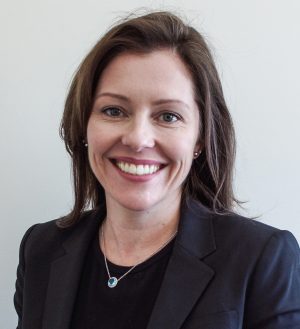
But what happens the day after you wear your tufted hat and are marked as “doctor”? The 2018 report “Graduate STEM Education for the 21st Century” from the National Academies of Sciences, Engineering, and Medicine finds that graduate programs don’t do a great job of training graduate students for non-academic careers, where complex challenges cannot be solved by one smart and dedicated individual, but rather require collaboration across many fields, with colleagues who may have other kinds of training, or perhaps no training at all. Will you be able to communicate with your peers, with your boss, with people who work for you, and with society at large in a productive way? How will you oversee other researchers when you’ve never had any exposure, let alone real training, for managing projects?
A recent National Science Foundation meeting of multidisciplinary programs highlighted various approaches to transform this graduate student experience from that of developing a lone genius toiling away in a lab to one that prepares graduate students to tackle complex new fields of knowledge–like data-enabled science or the food-water-energy nexus–while also building critical skills in communication, collaboration across multiple disciplines, and leadership.
The two-day symposium brought together over 60 NSF Research Traineeship (NRT) programs to share ideas on how to build these skills, how to assess whether the approaches work, and how programs like these might fundamentally change how graduate students are trained. The programs seek to build bridges across departments–e.g., blending civil engineering, energy sciences, environmental sciences, agricultural economics, business, and public policy, as the InFEWS program from UC Berkeley’s Blum Center does. The NRT programs also support graduate students conducting research at the intersections of these fields, aiming to build lasting bonds between the participating departments after the grant period concludes.
NRT Graduate Student Anaya Hall, said the NSF meeting provided an “opportunity to get to know students and faculty in other programs across the country and to learn from each other on how to foster interdisciplinary research, while preparing for a variety of career paths.” She added, “It was inspiring to know the program at UCB is serving as a model for its commitment to diversity and inclusion as well as encouraging science for a broader impact.”
Dawn Culpepper and Colin Phillips of University of Maryland, College Park remarked in a joint presentation that the “NSF Research Traineeship allows students to develop competencies in framing the importance and potential impact of their work.” In addition to building academic depth, they argued that the NRTs serve to shift the values and highlight the context surrounding the academic research by exposing students to different perspectives–showing how other disciplines might view the same challenge or asking how communities might be affected by research questions. The NRT’s emphasis on communication skills trains students to clarify their role in research and explain what they are doing and why to diverse stakeholders, thus building more well-rounded researchers and job candidates.
With over 100 NRT programs nationally, there are emerging benefits–communications, ability to work in teams, seeding new areas of research–as well as consistent challenges. Repeatedly, the NRT program representatives at the meeting cited that fostering true collaboration among faculty across campuses was difficult, due to time pressures, insufficient funding for dedicated research projects, and insufficient recognition among the academic community for interdisciplinary work. Many programs discussed the bureaucratic barriers of establishing lasting cross-disciplinary programs, like certificate or degree programs, individual classes or series of classes. Almost every NRT at the meeting cited challenges in securing enduring institutional and financial support for team teaching, program staffing, and program elements such as communication skills workshops.
Finally, there is a clear mandate from NSF that programs like this must influence their own institutions, and ultimately influence other institutions nationally. With academic innovation typically taking multiple years, if not decades, it will be some time before programs that offer deep technical training plus interdisciplinary learning are the norm for STEM and other doctoral students. The harsh truth is that not all great programs are scalable or should aim to be a priori. And indeed, it is the deep personal connections between students and mentors, and student peer groups, that was cited by NRT students at the NRT principal investigator meeting as the most special, and personally transformative, part of their program. Although some coursework might move online, a whole interdisciplinary training program inherently cannot live online, in a MOOC, or some massively distributed medium. Fostering people skills takes people–in real life–and while expensive to support students, faculty time, staff time, and program cost, it is 100 percent worth it.
Since interdisciplinary learning at the PhD level has become of core national interest–undisputed in necessity by business leaders, university heads, and innovators of all walks–there needs to be federal funding available for it. For decades, educating well-rounded, articulate, technically proficient students has kept the U.S. competitive in science and technology and influential in global politics. Now, with the continuing effects of globalization, climate change, and the information and computational revolutions, we need students who can work at the intersections of fields with the greatest chances for ensuring both our survival and our most ambitious dreams for progress.
Sophi Martin is the Innovation Director at UC Berkeley’s Blum Center for Developing Economies, where she serves as the Program Coordinator for the NSF-funded InFEWS program (infews.berkeley.edu ; DGE # 1633740)
MarHub: A Technology to Help Refugees Navigate Asylum
In 2016, as Sarrah Nomanbhoy was starting her MBA at the Haas School of Business, the refugee crisis in Europe was in its second peak year and over a million applicants applied for asylum to the EU.
Nomanbhoy, a native Californian, had been watching the refugee crisis unfold since her undergraduate days at Stanford, where she studied international relations. She understood that the forces behind the crisis were bound to exacerbate the situation and the number of displaced people would only increase. She also began to understand that only 2 percent of refugees have access to voluntary repatriation, resettlement, or local housing solutions; the rest face long-term encampment, urban destitution, or perilous journeys.
At UC Berkeley, Nomanbhoy learned from Law Professor Katerina Linos that many asylum seekers arriving in Europe lack adequate information about how to apply for asylum, particularly how to prepare for the arduous asylum interviews. This motivated her and fellow graduate students Jerry Philip (Haas MBA ’18) and Peter Wasserman (Haas MBA 18) to apply for a Hult Prize focused on the refugee crisis.
The Lemelson Foundation and the Blum Center Partner to Equip Students to Deliver on Big Ideas with a Small Environmental Footprint
The Lemelson Foundation, the world’s leading funder of invention in service of social and economic change, and the Blum Center for Developing Economies are embarking on a yearlong collaboration to enable students participating in the University of California Big Ideas Contest to increase their expertise in developing environmentally responsible inventions and innovations. The initiative exposes students to sustainable practices with the goal of increasing awareness around environmental impact throughout the invention and business model development process–from the materials used to the end of lifecycle implications.
The partnership between The Lemelson Foundation and the Blum Center will enhance the importance of environmental responsibility in the Big Ideas Contest, with special emphasis on the Hardware for Good category. Additionally, there will be an increased focus on engaging students from low-income and underserved backgrounds to participate in the contest.
Since 2006, the Blum Center has hosted the Big Ideas student innovation prize, to provide mentorship, training, and resources for budding social entrepreneurs across the University of California system. Hardware for Good encompasses everything from wearable and assistive technologies and devices to improve agricultural productivity to smart home systems that improve energy efficiency and safety. The 2017-2018 winner in the Hardware for Good category was Innovis Medical, a blood clotting prevention device for civilian and military trauma care that is being tested on cardiac patients at UC Davis Medical with the aim of FDA approval by 2021.
Said Phillip Denny, director of Big Ideas: “Since 2006, over 6,000 students from more than 100 majors have participated in the Big Ideas Contest, raising more than $2.4 million in seed funding that has been invested across 450 ventures. In this age of climate change and resource constraints, we need more students focused on planet-saving big ideas. We are thus immensely grateful to The Lemelson Foundation for making environmental responsibility an explicit element of the competition and for strengthening our outreach to low-income and first-generation college students. Diversity in innovators leads to diversity of innovations.”
With support from The Lemelson Foundation, Big Ideas 2018-2019 activities will include educational programs coupled with outreach to keep environmental responsibility top-of-mind as student inventors and innovators design new devices and ventures. Judging criteria will also be modified to reflect greater emphasis on environmental impact. Among the student education programs will be the “Inventing Green” workshop on October 22 to raise awareness and understanding of environmental responsibility in innovation and entrepreneurship among the University of California’s 240,000 undergraduate and graduate students and participating students from Makerere University in Uganda and Hebrew University in Jerusalem. The Lemelson Foundation funding will also support Blum Center practitioners-in-residence who will provide environmentally responsible design expertise to Big Ideas student teams and their projects.
“Students have the passion and drive to make the world better through inventions and entrepreneurship, and the Big Ideas program will better prepare them to ensure the solutions of today don’t become the problems of tomorrow,” said Cindy Cooper, program officer for The Lemelson Foundation. “Thinking holistically about environmental impact early on can also lead to more creative product ideas and put startups on a path to being more competitive and resilient as they grow to scale. We’re excited to see what students come up with.”
Thirty One UC Berkeley Students Headed to Clinton Global Initiative University
Clinton Global Initiative University (CGI U) is President Clinton’s initiative to engage the next generation of leaders on college campuses around the world. Each year, CGI U hosts a conference where students, youth organizations, and topic experts come together to discuss and develop innovative solutions to pressing global challenges with policy makers, topic experts, philanthropic, and leaders from the public, private, and NGO sectors. Participants attend plenary sessions, workshops, networking events, and a day-long service project. This year CGI U 2018 will take place at the University of Chicago from October 19 to 21.
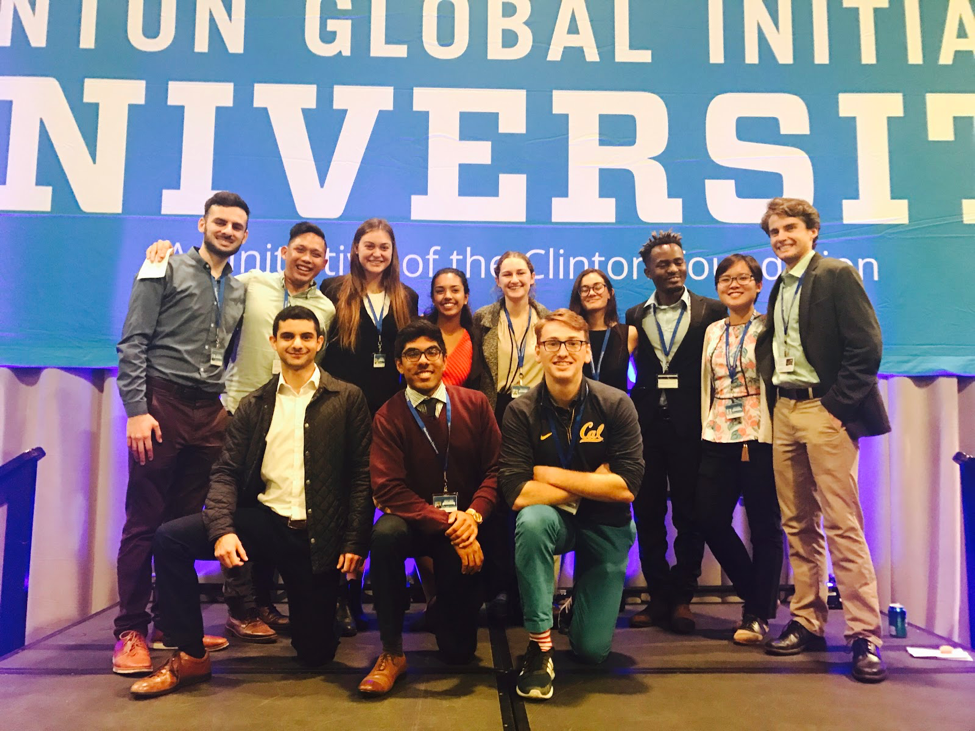
Each CGI U student must make a “commitment to action”: a specific plan of action that addresses a pressing challenge on campus, in the community, or in a different part of the world. Students can apply within five focus areas: education, environment and climate change, peace and human rights, poverty alleviation, and public health.
This year, 31 UC Berkeley students were accepted to attend CGI U. Their projects are described below.
Artists in Residents
Students: Monica Schreiber (Public Health), Kyle Gibson (Public Health)
Summary: Artists in Residents (AiR), is an initiative of the Suitcase Clinic, a weekly student-run organization that has been serving Berkeley’s homeless community for over 30 years. In response to the mental health needs of this population, AiR seeks to provide arts and music programming within clinic spaces while leveraging the Suitcase Clinic’s unique ability to elevate and advocate for unhoused Berkeley residents. The team will partner with local community partners to implement art and music workshops, galleries, and performances. AiR will provide creative outlets for self-expression, promote mental health, and foster self-efficacy and upward mobility. Over one year, AiR will work with 30-50 individuals to provide safe spaces to practice, develop, and showcase their artistic talents. AiR won 1st place in the Art & Social Change category of the 2018 Big Ideas Contest.
Our Campus Kitchen
Students: Lucinda Laurence (Architecture), Sara Tsai (Business), Ibrahim Ramoul (Public Health)
Summary: In the 2018-2019 year, Lucinda Laurence, Sara Tsai, and Ibrahim Ramoul are committed to enact a centralized waste recovery kitchen on UC Berkeley campus. They will establish a closed-loop ecosystem that streams food waste from the dining halls and transforms them into edible meals for students at an accessible sliding-scale price model. The team plans to improve the lives of marginalized students by offering affordable meals while educating more than 35,000 students in food recovery and security. Each semester, they will lead 125 volunteers to make 600 meals daily by transforming 200 pounds of dining hall waste. Their partners include the Berkeley Student Food Collective, Berkeley Food Institute, Copia, Food Pantry, Educational Opportunity Program, University Health Services, and Cal Dining. Our Campus Kitchen won second place in the Food Systems category of the 2018 Big Ideas Contest.
Project S.a.F.E.
Students: Briana Boaz (Biology), Carrie Trible (Biology) Emily Kearney (Graduate Student – Environmental Science)
Summary: In 2018, Emily Kearney, Briana Boaz, and Carrie Tribble committed to eradicating sexual harassment/assault from fieldwork in order to create safe spaces off-campus in which everyone could contribute to science effectively. This team will survey the campus community to understand this issue and will use this information to write a code of conduct and create resources to prevent field sexual harassment/assault in partnership with several UC Berkeley campus organizations. These efforts are expected to reach everyone involved in fieldwork and increase the use and awareness of field preparation resources by 50 percent.
Project Air Mask
Students: Anirudh (Rudy) Venguswamy (Economics)
Summary: Rudy Venguswamy has committed to creating an affordable respirator mask to help reduce the number of people who die due to pollution and biomass burning related diseases in India. The team will sustainably produce a waterproof, fashionable, and functional respirator that people can wear while outside or engaged in hazardous activity. Project Air Mask will partner with hospitals to distribute masks first to pregnant women, young children, and at risk populations. The team expects to reduce the cases of chronic obstructive pulmonary disease and other respiratory infections by 20 percent in 24 months in the states in which this solution is deployed.
Big Ideas Winner Ricult Advancing Machine Learning for Improved Smallholder Farming
Globally, 1.5 billion people depend on small farms, which produce roughly 80 percent of the developing world’s food. Yet smallholder farmers remain some of the world’s most impoverished and food insecure people.
Aukrit Unahalekhaka, a co-founder of Ricult, a 2017 Big Ideas winner, knew this implicitly. He had grown up in a family of farmers in rural Thailand, and had witnessed firsthand his community’s struggles with the land. As a graduate student at MIT, he decided to put his education toward a critical piece of the global hunger challenge: financial inclusion for smallholder farmers.
Together with fellow MIT graduate student Usman Javaid, a native of Pakistan, Unahalekhaka has spent the last three years building a digital platform for smallholder farmers to access credit. The founders have been motivated by the fact that farmers who own less than two hectares are economically stuck; they have no means to invest in their properties or agricultural improvements–and often rely on loan sharks who charge exorbitant interest rates, trapping generations of farmers in cycles of debt and poverty.
Unahalekhaka and Javaid also have understood that access to credit is not the only problem for smallholder farmers. Credit is intertwined with other challenges, such as transportation logistics and precise weather forecasting. They thus designed Ricult to offer an integrated digital platform across the entire value chain, tracking end-to-end data and leveraging learnings to boost agricultural productivity and efficiency for all stakeholders, from farmers to input suppliers and buyers. Ricult is an apt name for their innovation. It underscores the importance of the middle of the agricultural value chain (“ricult” are the middle six letters of the word “agriculture”).
Since March 2017, the agtech startup has been working in Thailand and Pakistan, with plans to expand to neighboring countries. It also recently raised $1.85 million in seed funding, with the Bill and Melinda Gates Foundation as the lead investor. Further, Ricult is collaborating with the Telenor Group’s telecommunications company, DTAC, to expand across Thailand, and has caught the attention of seed investors such as 500 Startups.
Ricult is now taking off, but in the early years developing ideas for an effective platform was a challenge. Another challenge was finding funders. The team spent several years applying to student innovation contests, receiving awards from MIT Ideas and the DOW Sustainability Challenge. The founders turned twice to UC Berkeley’s Big Ideas Contest, to take advantage of its eight months of product development, advising, and mentorship. In 2016, Ricult won third place in the Food Systems category. In 2017, the Ricult team earned second place in the 2017 Scaling Up category.
“The exercise of writing a thorough business plan for the Big Ideas competition proved invaluable,” said Unahalekhaka. “It ensured that everyone on our team was on the same page and helped us think through the key points of running a business. We Skyped with Big Ideas staff and mentors several times and received prompt, detailed feedback that helped us strengthen our business.”
One early idea for the Ricult platform was to harness machine learning and predictive analytics for farmers, input suppliers, food processing companies, and banks alike. To do so, the Ricult team developed local and national partners along the agricultural value chain in Pakistan and Thailand. Services to farmers include: access to agricultural inputs, such as improved seeds, fertilizers, and pesticides that are synchronized with crop cycles and priced at least 30 percent below the market rate; and advanced agronomic analytics and insights, such as soil testing, optimal crop rotation, and microclimate weather analytics. By cutting out unnecessary middlemen and decreasing crop spoilage, Ricult is aiming to transfer cost savings to farmers and increase their profitability.
As important, farmers that work with Ricult are gaining access to formal credit and affordable loans at interest rates at least five times below market rate. Ricult links farmers directly with buyers and guarantees payment within 48 hours, a significant departure from the traditional 60- to 90-day turnaround. Timely compensation allows farmers sufficient time and capital to prepare for the next planting season without being trapped in debt to middlemen.
The model, driven by data analytics technology, has increased farmer productivity by 50 percent, according to Ricult reporting. The company also is selling its land data to banks, said Unahalekhaka: “It functions as a form of collateral, so that farmers can finally access formal loans. Basically, we are solving two problems in one.”
Ricult is one of a growing number of social enterprises in developing countries reaping the benefits of technology. While computational advancements have numerous applications for sustainable development, leveraging machine learning to boost agricultural productivity is among the most promising. Investments in agriculture are widely viewed as the greatest weapon against global hunger and poverty; and growth in the agriculture sector has proven to be two to four times more effective in raising income among the poorest compared to other sectors.
“We are a double bottom line company,” said Unahalekhaka. “We want to prove that you can operate a sustainable business, while also contributing to the social good. This model is rare in Southeast Asia, but it’s proven an attractive idea to Thai investors who are keen to give back to the rural communities they grew up in.”
By Lisa Bauer
Leslie Lang Tsai on Effective Philanthropy and the Chandler Foundation
How do we create enduring prosperity rather than address just the symptoms of poverty?
This is a question that the Chandler Foundation (formerly known as the Cassia Foundation) has been grappling with over the years. On September 5, Leslie Lang Tsai, who serves as the assistant vice president and general counsel of the foundation, spoke at the Blum Center about the challenges of effective philanthropy and the road the Chandler Foundation has taken to achieve it.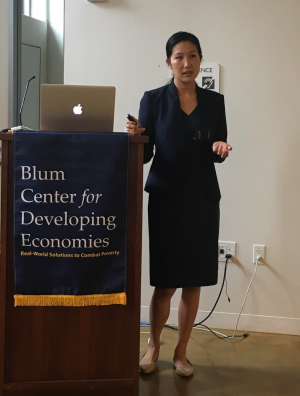
As she addressed the packed room, Tsai, who earned a B.A. in Rhetoric and a B.S. in Business Administration from UC Berkeley, noted there are now more opportunities for Cal students to focus on poverty alleviation and social impact. When she graduated in May 2006, the Blum Center was just about to launch its Global Poverty & Practice minor and the Big Ideas student innovation contest. The landscape of poverty alleviation, particularly on the UC Berkeley campus, was shifting toward ideas about how to understand, build, and maintain effective programs, using a mix of history, social science, and technological innovation.
Tsai started her talk with a thought experiment, asking the audience of largely undergraduate and graduate students: If you had one billion dollars, how would you use it to eliminate poverty and create inclusive prosperity?
Answers from the audience ranged from unconditional cash transfers to maternal health investments to comprehensive education programs, allowing Tsai to introduce the audience to the Chandler Foundation’s method for determining how to invest in effective organizations in the field. She recounted that Chandler Foundation Founder and Chairman Richard F. Chandler, who started his philanthropy in 1997, underwent “four seasons” of giving before deciding to apply a “Business House Investment Strategy” based on John D. Rockefeller’s idea that giving is investing.
Richard Chandler and his brother, Christopher Chandler, both successful investors, believed, per Andrew Carnegie’s maxim, “It is more difficult to give money away intelligently than to earn it in the first place.” Their first philanthropic venture, Geneva Global, became the first “philanthropic investment bank,” advising the donor community with the same level of advice they’d expect if they were making an investment.
In subsequent years, Richard Chandler focused on operating social enterprises as well as supporting social justice leaders before he ultimately created the Chandler Foundation. Tsai said its grant-making program is based on three lessons learned from Richard Chandler’s prior social impact ventures: 1) address the root causes of poverty, not the symptoms; 2) “stay in our lane” as investors; and 3) have measurable impact and return on investment.
Tsai shared that the foundation’s model is to work collaboratively through partnerships. The Chandler Foundation is a founding donor of the Co-Impact collaborative, along with the Bill & Melinda Gates and Rockefeller Foundations, which aims to address global poverty through systems change solutions. The foundation’s approach also places a significant emphasis on encouraging all those involved to hew to the “values at the heart of property: humility, accountability, and integrity.”
Near the end of the program, a student from the Global Poverty & Practice minor asked Tsai how best to pursue a career in poverty alleviation. Tsai, who has worked in corporate law at Sullivan & Cromwell and in development at Microclinic International and the World Bank after internships at the United Nations, the African Development Bank, the Supreme Court of Rwanda, and the Special Court for Sierra Leone, shared that a typical career path in the social sector is not a straight line. She advised students to gain expertise and marketable skills in technical areas such as law, engineering, and business, or specific sector expertise in health or urban planning–and to not necessarily focus on how the nonprofit industry works.
Ultimately, she advised, “Develop marketable skills while following your passion and purpose.”
The video of Leslie Lang Tsai’s presentation about the Chandler Foundation can be viewed here.
Why Interdisciplinary Project-Based Learning? Assessing the Benefits and Challenges at U.S. Institutions of Higher Education
By Nicole Rangel
College graduates with interdisciplinary and hands-on skills are in demand in today’s job market. Because they have exposure to more than one discipline and curiosity about the interplay of fields, these graduates are being positioned as necessary to solve societal challenges–from natural disasters and climate change to automation-induced unemployment and epidemics. This shift in academic training is a response to a growing recognition that social, governmental, and business challenges require the collaboration of people with educational training in engineering, law, business, physical science, medicine, agriculture, economics, urban planning, humanities, and computer science–and, most important, the ability to work together interdisciplinarily.
Yet offering curricula that aims to develop students’ interdisciplinary and project-based learning acumen is a challenge for many institutions of higher education. While there is substantial evidence to suggest this educational approach ought to be prioritized, we know little about academic programs that do prioritize education which prepares students to understand and engage with complex real-world problems.
The Blum Center for Developing Economies at UC Berkeley has begun to address this research gap by examining curricula that converges these two pedagogical approaches. The Blum Center is one of a number of academic programs across the country [see chart below] that offers hands-on learning experiences, which aim to help students understand their future roles outside the university. The center also facilitates interdisciplinary collaborations among students, researchers, and faculty to solve grand challenges in water, energy, education, healthcare, and wireless communications, among other areas.
 The Blum Center is home to Development Engineering, an interdisciplinary field at UC Berkeley created in 2014 that integrates engineering, economics, business, natural resource development, and social sciences to create,implement, and evaluate technologies that address the needs of people living in poverty. Development Engineering’s core class, DevEng 200, is organized around three thematic modules: 1) understanding the problem, context, and needs of a community receiving the intervention; 2) creating effective prototype technologies to social problems; and 3) field testing and assessing the impact of these technologies on the receiving communities.
The Blum Center is home to Development Engineering, an interdisciplinary field at UC Berkeley created in 2014 that integrates engineering, economics, business, natural resource development, and social sciences to create,implement, and evaluate technologies that address the needs of people living in poverty. Development Engineering’s core class, DevEng 200, is organized around three thematic modules: 1) understanding the problem, context, and needs of a community receiving the intervention; 2) creating effective prototype technologies to social problems; and 3) field testing and assessing the impact of these technologies on the receiving communities.
While the prototypes developed in courses like this one foster interdisciplinary understanding, it is still unclear how they cultivate intellectual strengths from one student in, say, mechanical engineering to another student in, say, public health. In other words, how is the sociological understanding of an engineering student or the design/evaluation skill of a public health student cross-cultivated in this course? How do students push themselves to learn skills that lay outside their expertise under the pressure of academic deadlines? And how do faculty assess aptitude of students in these interdisciplinary skills? The Blum Center is working to understand these questions as well as others, as it strives to provide project-based education that is rigorous not just in process, but also in its interdisciplinary content.
Research about project-based learning has mostly concentrated on K-12 education, and little exists on interdisciplinary project-based learning.Thus in our initial stage of inquiry, the Blum Center has reached out to over a dozen U.S. colleges and universities with academic programs similar to the Development Engineering graduate emphasis, to better understand the broader landscape of interdisciplinary project-based learning in higher education. We administered a short survey, and from the responses received have identified several areas in interdisciplinary project-based learning curricula that merit further investigation. They include:
- The experience of co-teaching, specifically between engineering and social science faculty, to better understand how co-teachers encourage interdisciplinarity among students from different majors.
- The need to identify best practices among faculty who have taught in this space, with complementary input from the participating students about their perceptions of these approaches.
- An assessment of the opportunities and challenges involved in interdisciplinary project-based learning, according to faculty and students. Because interdisciplinary project-based learning is not the norm, it is crucial to understand what faculty and students see as the incentive for engaging in this type of learning and what are the challenges in offering it.
Specifically, project-based learning has been credited for appealing to students’ motivations, strengthening their ability to problem-solve, refining their conceptual knowledge, and fortifying their sense of agency. Interdisciplinarity is recognized as fundamental for preparing students for democratic participation and is a growing imperative for U.S. colleges and universities at both undergraduate and graduate levels.
In line with what the literature suggests, the Blum Center sees promise in project-based learning, particularly when taught with an interdisciplinary approach. In the coming months, we will share a report that aims to deepen our understanding and ability to provide meaningful and effective education that not only benefits students, but also enterprises and communities around the world in need of support.
For an example of the Blum Center’s previous work in this area, see the Development Engineering Toolkit: Lessons on Implementing a New Multidisciplinary Program Uniting Engineering and the Social Sciences
Nicole Rangel is an educator and Ph.D. candidate in the Social and Cultural Studies of Education program at UC Berkeley.
InFEWS Fellow Alana Siegner on Urban Agriculture and Food Security
Digital Transformation of Development
By S. Shankar Sastry
Today, access to water, energy, health care, and financial services remain the greatest challenges to alleviation of extreme poverty, which affects nearly half the world’s population, more than 3 billion people. United Nations officials designed the 2000 Millennial Development Goals and the successor Sustainable Development Goals of 2015 to mobilize resources against the massive challenges. As such, the UN blueprints identify targets for progress in the four crucial areas of water, energy, health care, and wireless, along with the intertwining challenges of hunger, education, global warming, gender equity, environment, and social justice.
In many ways, the Millennial/Sustainable Development Goals are the most pressing problems of development. They are the challenges that must be of actionable focus for years to come. They are the wicked problems, as UC Berkeley Professor Horst Rittel coined them in 1973, “whose social complexity means that it has no determinable stopping point.”
Yet there are new and emerging technologies in our midst that are changing the 40-year dialogue about development interventions and disrupting the very idea of how intertwining problems can be “fixed.” These technologies are responsible for the many digital transformations that are revolutionizing the global economy. From banking and transportation to agriculture and health care, a multi-trillion information technology industry is in motion that is changing how human beings move, work, live, and think. This Information Age, this Third Industrial Revolution is leading over the next decade to an economic system in which more than 70 billion Internet of Things (IoT) sensors will be installed across all sectors to provide unprecedented volumes of data.
Of course, data is not water, energy, health care, or wireless communications access. Yet data can be inexpensively stored and processed, enabling the utilization of computer-intensive machine-learning algorithms that—if correctly directed—can bring down the cost of access to necessary goods and services. In addition, although artificial intelligence is still in its infancy, it is poised to make advances that will affect the development sector as much as the hospitality sector. Indeed, the trifecta of IoT, AI, and cloud computing offers a vision of digital transformation that will alter business models, services, and how every single person on the planet lives.
How might these digital transformations affect the poorest of the poor? How might they improve quality of life and access to goods and services? We at the Blum Center are focusing on how the next 10 years of digital transformation can be harnessed to provide new and sustainable solutions for extreme poverty alleviation. Here are some examples of digital transformations that we have invested in and tested to scale at the Center:
In Energy Access:
REPP Efforts to electrify rural communities in developing countries have been plagued by energy theft, unaffordable connection costs, intermittent supply, and poor maintenance. Despite ambitions of governments and donors to invest in rural electrification, decisions about how to extend electricity access to almost 1 billion people worldwide are being made in the absence of rigorous evidence. The Rural Electric Power Project (REPP) originally sought to address this problem by incorporating new technology, such as village-scale clean energy microgrids, as well as sustainable financing and distribution mechanisms to better serve the rural poor. REPP has been utilizing novel data collection and analysis tools to inform the redesign and refinement of the technology and rigorously measure impacts in the field. Researchers from the Technology and Infrastructure for Emerging Regions (TIER) group, the Center for Effective Global Action (CEGA), and the Energy Institute at the UC Berkeley Haas School of Business have been working with local government and industry partners to generate real-time user data (using “smart” meters) and to collect comprehensive household survey data before and after electricity deployment. Currently, in a partnership with Kenya’s Rural Electrification Authority, the researchers are studying the demand for and impacts of electrification in a large-scale, randomized controlled trial. By offering subsidies of varying amounts to “under grid” households—those located in close proximity to the national grid—the team is measuring people’s willingness to pay for power, and tracking what happens after they connect.
In Health Care Access:
CellScope. In developing regions, where health care infrastructure is limited, there is an urgent need for greater access to reliable diagnostic testing, particularly for infectious diseases. The objective of CellScope, invented by Blum Center Chief Technologist and Bioengineering Professor Dan Fletcher and his lab members, is to establish mobile digital microscopy as a platform for disease diagnosis that can be used by non-expert health workers to in remote settings. The mobile phone-based, easy-to-use platform can rapidly capture images blood, sputum, or other patient samples and wirelessly transmit the data to clinical centers, allowing the patient to be evaluated and treated at the point of care thanks to algorithms running on the phones, with data uploaded wirelessly (when connectivity is available) for epidemiological purposes and quality control monitoring. By using existing communication technology and infrastructure, CellScope moves a major step forward in affordably and innovatively taking clinical microscopy out of specialized laboratories and into field settings for disease screening, diagnoses, and treatment.
In Wireless Access:
Community Cellular Network. Today over one billion people worldwide live beyond the reach of cellular networks. Many live in sparsely populated rural regions, with weak power infrastructure—making it prohibitively expensive for most telecommunication companies to invest. Living outside the network means lack of access to important services like emergency communications, market price information, and job opportunities. To address this challenge, Computer Science Professor Eric Brewer and his lab members, developed the Community Cellular Network (CCN). The CCN is a complete “network in a box,” enabling remote communities to both own and operate their own cellular systems. Designed to be deployed by people with limited technical skills, CNN, which became Endaga under the leadership of Kurt Heimerl, costs less than one tenth the price of traditional cellular equipment, runs solely on solar or micro-hydro power, uses less than 50W average power draw, and can provide kilometers of coverage to rural communities. In 2015, Endaga joined forces with Facebook to scale Internet access to rural communities.
Many who follow these transformations in development are concerned about digital ethics, privacy, and fairness. We need to understand how AI (primarily machine learning and cloud computing) is being used to understand poverty and economic development in urbanization, population density, traffic demand, housing, crop yields, and food security, among other topics.
Questions of particular relevance to development include: Is it fair to be denied a program because the people you talk to on your cell phone make you look less creditworthy or less in need of a service? What rights do people have to privacy in an environment where satellites are photographing their homes, phones are tracking their locations and communications, and their moods are being analyzed on social media? And how much access to this type of data should development researchers have?
The fact is (per the economic concept of competitive equilibrium) if you give up more of your data, you may get lower prices. At the same time (per the Nash theory in economics) decisions about giving up data for individuals can sometimes be terrible for groups, causing users who have high privacy settings to “free-ride” at the expense of those with low privacy settings. Thus, if we want to optimize the utility of the common good around data sharing and AI in development, we may well need to institute societal side payments—means to induce recipients to take part in the transaction that are legitimate and corruption-free, and redress underinvestment in the common good.
This will take as much analysis, debate, and social justice action in development as in every other aspect of digital transformations. It is one of the Blum Center’s stakes in the ground for the 2018-2018 academic year and the years ahead at UC Berkeley.
Shankar Sastry is the Faculty Director of the Blum Center for Developing Economies. He is a Professor of Electrical Engineering and Computer Sciences, Bioengineering, and Mechanical Engineering.
Sustainable Employment at the Bread Project
By Tamara Straus
What does it take to help hard-to-employ people in the Bay Area find steady, decently paying jobs? According to Veronica Barron Villegas ’18, a Global Poverty & Practice graduate who works at The Bread Project, it requires receptive employers, well trained employees, and lots of follow up.
Founded in 2000 by Lucie Buchbinder, a homeless advocate and Holocaust survivor, and Susan Phillips, a social worker involved in affordable housing, The Bread Project is known within employment development circles for its model of targeted persistence, which includes a rigorous bakery training program, extensive workplace readiness coaching, on-the-job experience, employer outreach for job placement, and long-term follow-up support. Eighteen years ago, Buchbinder and Phillips acted on a hunch. They knew that the baking industry paid above minimum wage and offered a career ladder. With this in mind, they approached Michael Suas of the San Francisco Baking Institute, who agreed to train their low-income clients and provided space and equipment for classes at cost.
Since that time, the Berkeley nonprofit has trained 1,800 individuals for the baking sector through dozens of partnerships with Bay Area chefs like Mark Chacon, agencies like the City of Berkeley Office of Economic Development, and employers such as Whole Foods and Semifreddis. Trainings are long by comparative standards: three to four weeks. And follow-up services are beyond the standard: 15 months, which include six rounds of job search assistance and career counseling.
The results for a small nonprofit are extraordinary—averaging an employment rate of 83 percent, a graduation rate of 85 percent, and a job retention rate of 80 percent.
Trent Cooper, The Bread Project’s Program Manager, believes the high employment rates stem from the high-touch training and post-graduation services. “If you see our boot camps, you see how closely we interact with each student. Upon graduation, we provide 15 months of follow-up services, with outreach at one, three, six, nine, 12, and 15 months. This is time consuming and expensive, but we’re able to help participants longer.”
The Bread Project serves people who are the first to get turned down by employers—immigrants, refugees and asylum seekers, formerly incarcerated individuals, and people with disabilities as well as those with employment barriers due to language, addiction, unstable housing, and childcare. In 2017-2018, 79 percent of participants relied on public benefits, 21 percent had zero income coming into the program, 100 percent were low income, and the participant pool was 61 percent female and 32 percent male. Most trainees come from Oakland, Berkeley, and Richmond. And many lack independent housing and are dependent on public housing, friends, family, shelters, or transitional lodging.
Foundation grants, individual and corporate donations, and city funding keep The Bread Project afloat as well as a well-honed social enterprise model. Its University Avenue kitchen produces sweet potato buns for the high-end San Francisco restaurant International Smoke and mixes up about 3,000 pounds of cookie dough per week for DOUGHP. There’s also a food business incubator program; The Bread Project focuses on renting out its kitchen to minority-run businesses. All of this pays for the cost of the long boot camps, from which about 120 people graduate annually.
To support nine low-income Berkeley residents pass through the training program, UC Berkeley’s Chancellor’s Community Partnership Fund recently awarded The Bread Project a grant. The project, in collaboration with the Blum Center’s Global Poverty & Practice (GPP) minor, aims to strengthen the university’s ties to the City of Berkeley through employment development opportunities and engages GPP student interns in poverty alleviation work.
Jasmine Tsui, a UC Berkeley global health major and Global Poverty & Practice minor, said her summer internship at The Bread Project has given her a front seat row to the Bay Area’s widening income gap. “I’ve seen what it means to be looking for a job and have no computer to do job research and applications. Employment barriers like those are real, but The Bread Project is surmounting them through a range of supports.”
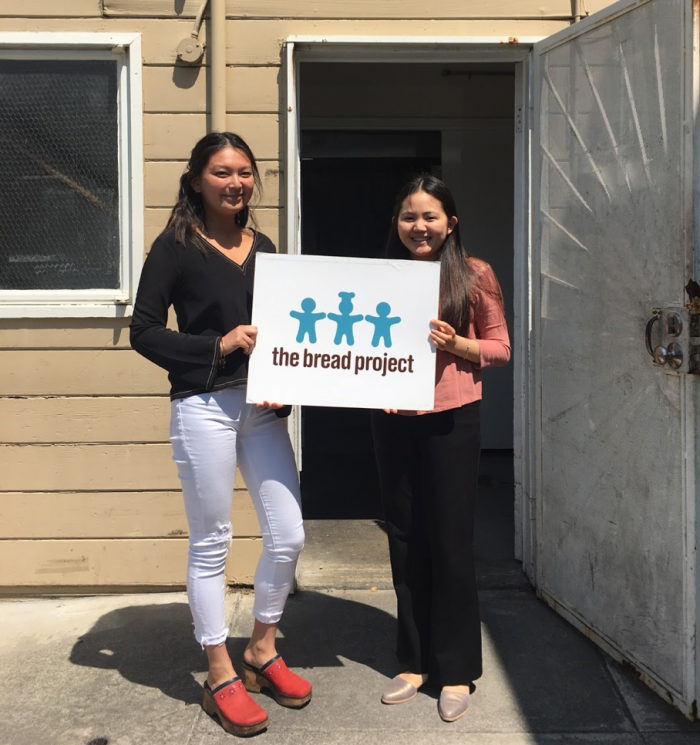
Tsui, who has been working closing with Barron Villegas, The Bread Project’s employment and graduate services manager, has been on the phone with graduates for much of her summer internship. “I’ll call graduates five, six times,” said Tsui. “I’ll leave messages, emails, and texts, and once I get them on the phone, I ask them how they are, if they need a job, and make an appointment to come in right there.”
Tsui’s summer internship colleague, Emily Lui, a UC Berkeley economics major and Global Poverty & Practice minor, also has been impressed by the personalized services. “There’s a lot of emphasis on trying to find people who graduate from the program a job—and a job they actually want. Earlier this month, there was a hiring event where different reps from different Whole Foods came in and did onsite interviews.”
Barron Villegas, who like Lui and Tsui got her start at The Bread Project as a GPP intern, said she is currently developing and strengthening employer partnerships with Noah’s Bagels and High Flying Foods.
“The reason The Bread Project has the outcomes it does is because we build relationships with both employers and job seekers,” said Barron. “Our clients walk away with a specific skill set and into a more specific job market. They learn interview skills, resume writing skills, and other job readiness skills. They also earn a ServeSafe certificate from the State of California. Employers want all of that.”
Aiming to be the “Uber” of Fecal Sludge
Hackathons for Good?
By Veena Narashiman ’2020
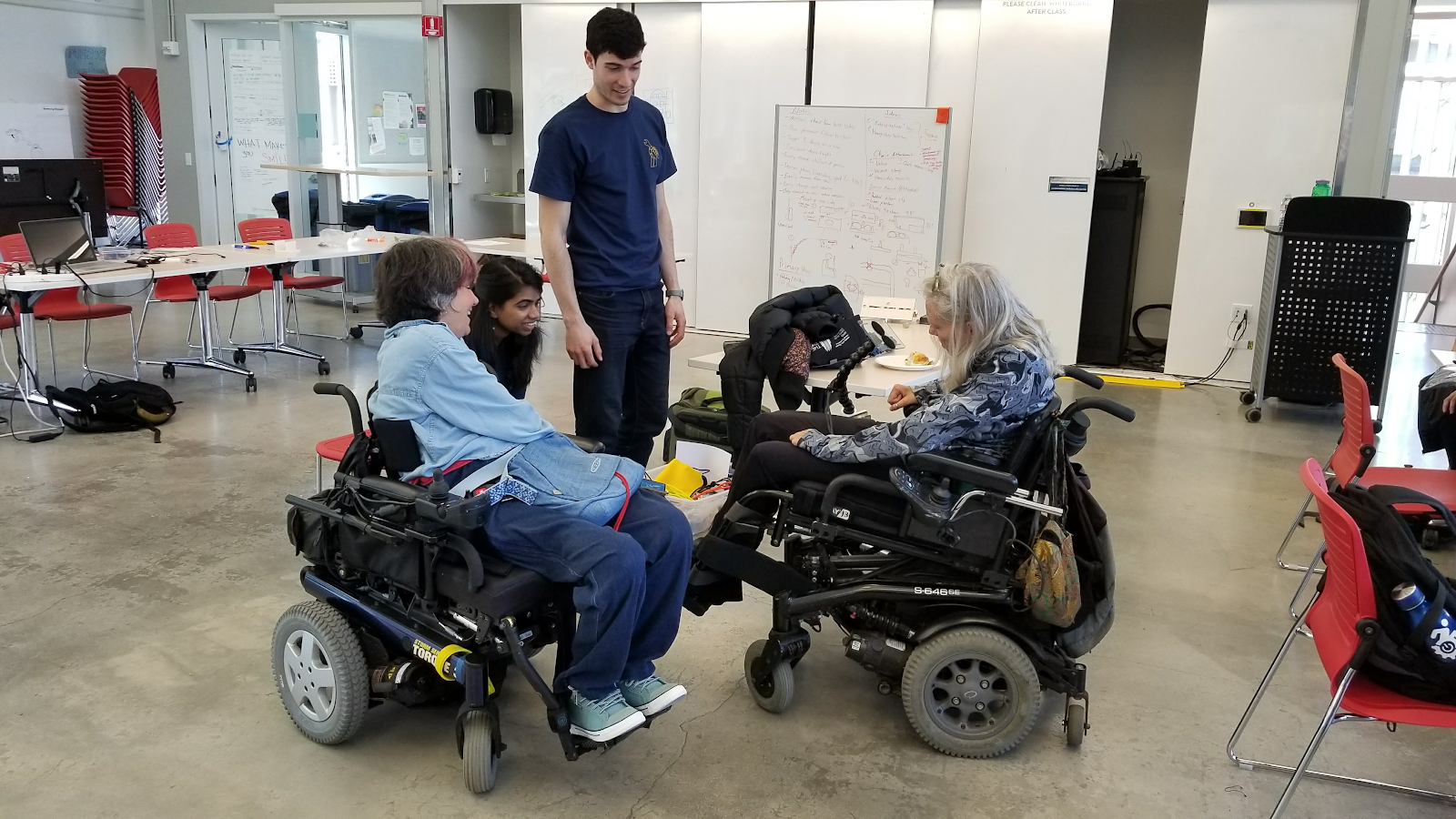
Originally a portmanteau of the words hack and marathon, a hackathon typically occurs over a day or two, bringing together computer programmers and others to solve a puzzle or invent a creative solution. During these 24- to 48-hour periods, participants are encouraged to form groups and collaborate, completing the hackathon with a rough prototype or ideas that can be presented to judges for prize money. Over the years, the adrenaline rush that often drives these competitions have created some famous “hacks”: the messaging app GroupMe and the Facebook “Like” button were both conceived during hackathons.
Although hackathons may feel new, they are nearing their twentieth anniversary. The concept was born in June 1999, when UC Berkeley alumni John Gage challenged attendees of a Sun Microsystems event to write a multi-user Internet program in Java for the Palm V. Almost two decades later, hackathons have been organized to advance all manner of technologies in practically every sector. And increasingly, hackathons have been launched to solve societal challenges, such as natural disaster preparedness and government transparency.
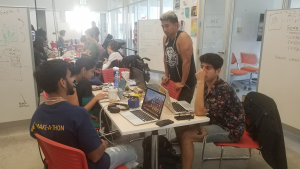
But are “hackathons for good” really effective, given that rapid prototyping is rarely a fix for entrenched societal problems? For technologists like Luca Ibota, a former Apple employee who has been active in many hackathons for good, the most important aspect is “identifying the problem you have and the ideal outcome you want.” In fact, said Ibota, the key to a successful hackathon for good is “precisely defining a problem or challenge.”
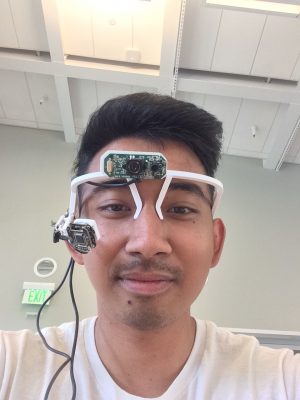
Still, some Cal students are skeptical about hackathons for good. The most cynical argue that incorporating buzz words such as “social impact” and “corporate social responsibility” at hackathons is a smart public relations move for technology companies looking to improve their public standing. Other Cal students insist that incorporating social good goals in hackathons is a testament to Silicon Valley’s aim to think more holistically and ethically about technology’s effects.
For many, UC Berkeley hackathons that take on a social impact lens are seen as a reflecting a student culture that prioritizes hands-on learning and that seeks to solve grand challenges like climate change and food insecurity. For Swetha Prabhakaran, a UC Berkeley sophomore and computer science student, the 21st century requires companies, nonprofits, and individuals to make solutions to intractable problems a priority.
Either way, the number of UC Berkeley hackathons focused on social impact is on the rise. Causes have ranged from building prosthetics for people with disabilities to developing apps that enable students to source fair trade goods. Student-run organizations have championed these hackathons as a way to ethically fill consumer gaps.
In April 2018, a partnership between the Sutardja Dai Center for Entrepreneurship and the UC Regents Chancellor’s Association hosted Cal Innovates, a hackathon aimed to bridge the engineering and business disciplines. Prabhakaran, who organized the event, said attendance was high because engineering and business students have started to “soul search” for meaningful impact. “Berkeley students have a strong entrepreneurial spirit—you can see it everyday,” said Prabhakaran. “But conversations about using business to help others are happening on small scale. The hackathon is a way to help students do this on a bigger scale.”
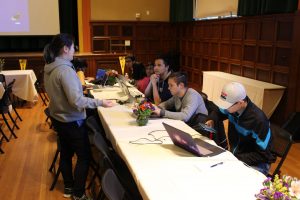
The Cal Innovates hackathon presented no strict problem to solve. It allowed participants—of which 40 to 50 percent were engineering majors and 30 to 40 percent were from the Haas School of Business—to build and plan deployment of prototypes. During the competition, participants listened to speakers or pursued their project with the help of guides. Professionals from SkyDeck, Cal’s startup accelerator, helped students with presentations and judged the finals, while employees of GoDaddy and students from BlockChain at Berkeley helped participants with technical aspects of their designs. Finalists included a project for civil engineers in developing countries to create sustainable bridges.
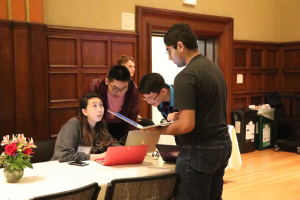
Another example of a UC Berkeley hackathon geared toward positive social impact was EnableTech’s “Make-A-Thon.” Held in April 2018, it aimed to connect those building prosthetics with those who use them, per the club’s motto: “Build with them, not for them.” Spanning 48 hours, the event allowed participants, formed into groups of six people from different majors, to rank which of EnableTech’s active projects should be improved. Kyelo Torres, a rising senior in mechanical engineering and the event project leader, spoke of the hackathon’s purpose: “As students, we are taught only theories. The second we are asked to do something, we get lost. The idea of hackathons is to practice the real world aspect of things.”
Amy Dinh, programs manager of the Jacobs Institute for Design Management, said she believes the reason for the uptick in hackathons with a social good emphasis is simple: “People seek a challenge, and there’s nothing more challenging than the wicked problems of the world.” Yet she dissuades students from expecting implementable solutions post-hackathon, highlighting instead the importance of the iterative process. “The point of a hackathon is to get creative juices to flow,” she said. “It’s not realistic for the ideas to be polished; rather the point is to kickstart a new team or idea.”
A Decade of Development Engineering with the Pinoleville Pomo Nation
By Tamara Straus
For the Pinoleville Pomo Nation of Ukiah, California, collaboration has not historically been a word used to describe interactions with white Americans. As late as 1950, native people were not permitted to walk on both sides of the street and signs in Ukiah’s storefront windows read, “No dogs or Indians allowed.”
Angela James, vice chair of the Tribal Council for the Pinoleville Pomo Nation, remembered this history was she was approached by David Edmunds, her tribe’s environmental director, about a possible collaboration with UC Berkeley. The goal was to co-design a sustainable housing project for the low-income families of her 300-person nation.
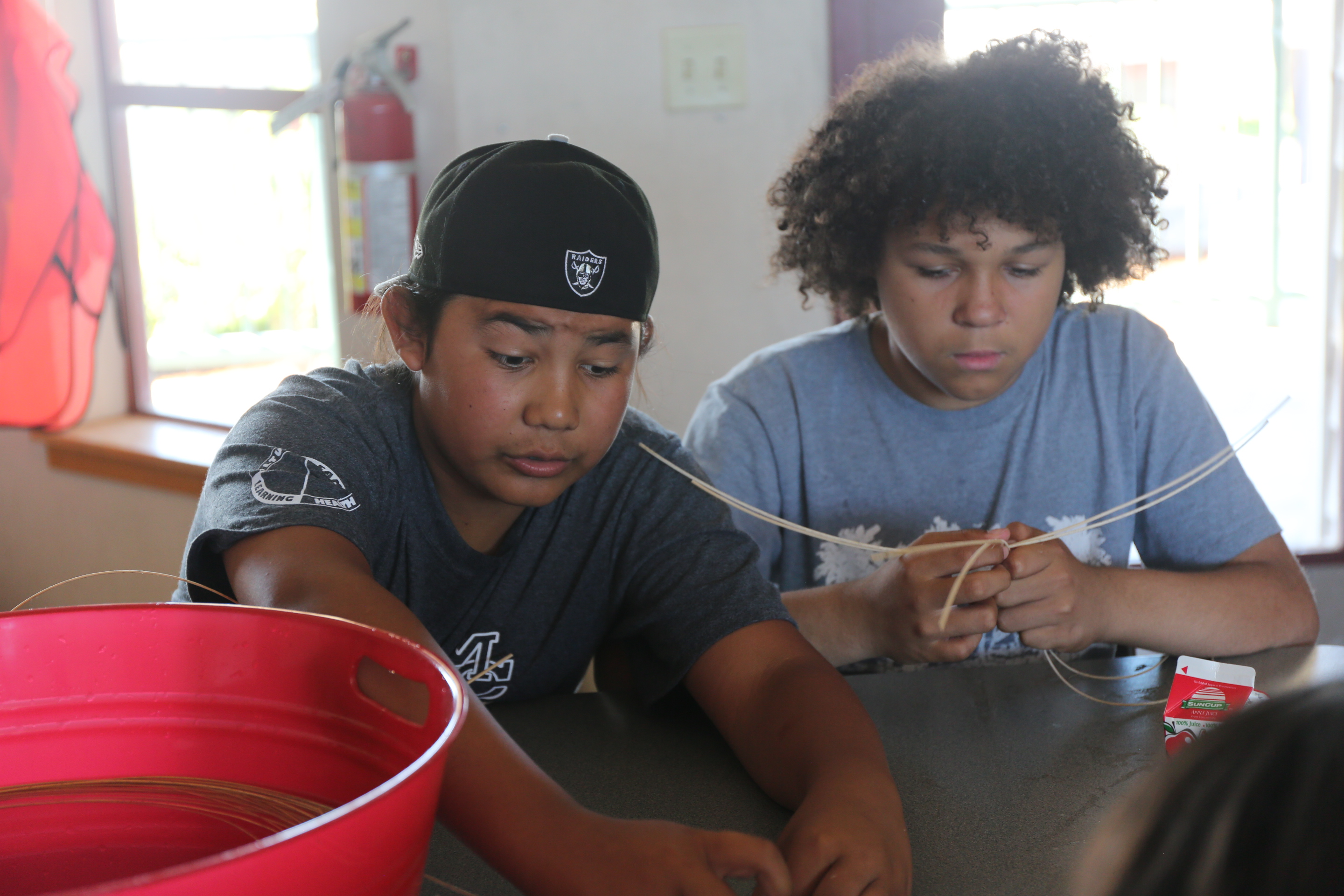 On the one hand, James, a mother of four, was eager to advance the education of young tribe members and teach them to live in two cultures. Yet her mind jangled with stories from her grandfather Smith Williams. He had told her about Ba-lay Ba-lin—the Bloody Run—an 1871 atrocity in which white settlers violently forced Native Americans off their land, turning the Eel River red with their blood. In 2007, when James first stepped onto the UC Berkeley campus to talk with Mechanical Engineering Professor Alice Agogino, now education director of the Blum Center and chair of the graduate group in Development Engineering, and graduate students Ryan Shelby and Yael Perez, she was aware that this was the place where Ishi, the so-called “last wild Indian,” became the research subject of anthropologist Alfred Kroeber. She also knew there was an ongoing dispute about the Hearst Museum’s return of 12,000 Native American remains to California tribes.
On the one hand, James, a mother of four, was eager to advance the education of young tribe members and teach them to live in two cultures. Yet her mind jangled with stories from her grandfather Smith Williams. He had told her about Ba-lay Ba-lin—the Bloody Run—an 1871 atrocity in which white settlers violently forced Native Americans off their land, turning the Eel River red with their blood. In 2007, when James first stepped onto the UC Berkeley campus to talk with Mechanical Engineering Professor Alice Agogino, now education director of the Blum Center and chair of the graduate group in Development Engineering, and graduate students Ryan Shelby and Yael Perez, she was aware that this was the place where Ishi, the so-called “last wild Indian,” became the research subject of anthropologist Alfred Kroeber. She also knew there was an ongoing dispute about the Hearst Museum’s return of 12,000 Native American remains to California tribes.
James’ warm-up to the UC Berkeley engineers was slow. She recounted that because Shelby is African American and Perez is foreign (Israeli), she felt they might be worthy of her community’s trust. She also wanted to believe that “science can cross cultural barriers,” and she observed from Agogino’s classroom that engineering was no longer “just a field for white males.”
At the same time, the interdisciplinary UC Berkeley group called CARES—Community Assessment of Renewable Energy and Sustainability—was seeking to tread new water in the field of development. “As we worked with the nation on the sustainable housing project, our understanding of development changed,” said Perez. “We realized technology, and technological ‘fixes,’ are not enough. We needed to start with what sustainability meant to the tribe. And they had a lot to say about sustainability, because of the way they view their connection to the Earth—resulting in unexpected design decisions around heating, water use, solar power, and the shape and functionality of their homes.”
This insight about collaboration led the CARES group to a development methodology called “co-design.” The term, which builds on human-centered design, user-centered design, design thinking, and participatory design, goes further in empowering stakeholders in the decision making and design process to recognize that users (or locals or recipients of development assistance) are key participants in their own economic, environmental, and sociopolitical advancement, with significant contributions to offer. In essence, CARES, a forerunner of UC Berkeley’s development engineering graduate program, embraced co-design to address the disconnect between the creation of technological innovations by engineers and the needs, preferences, and cultural views of the people who will use them.
Explains Agogino, “The 10-year collaboration with the Pinoleville Pomo Nation shows a number of things: It shows that development projects can and should be local, not just international. And it shows that development solutions can range from how we design to how we publish academic research. The journal articles that have come out of the PPN collaboration have notably been co-authored by PPN members.”
Since 2008, CARES has collaborated with the Pinoleville Pomo Nation on engineering, architecture, and educational projects that have tested the boundaries of development. Co-designed results have included sustainable housing, renewable energy power systems, water restoration and management projects, and most recently science, technology, engineering, art, and math (STEAM) workshops for middle and high school students and a K-12 maker space.
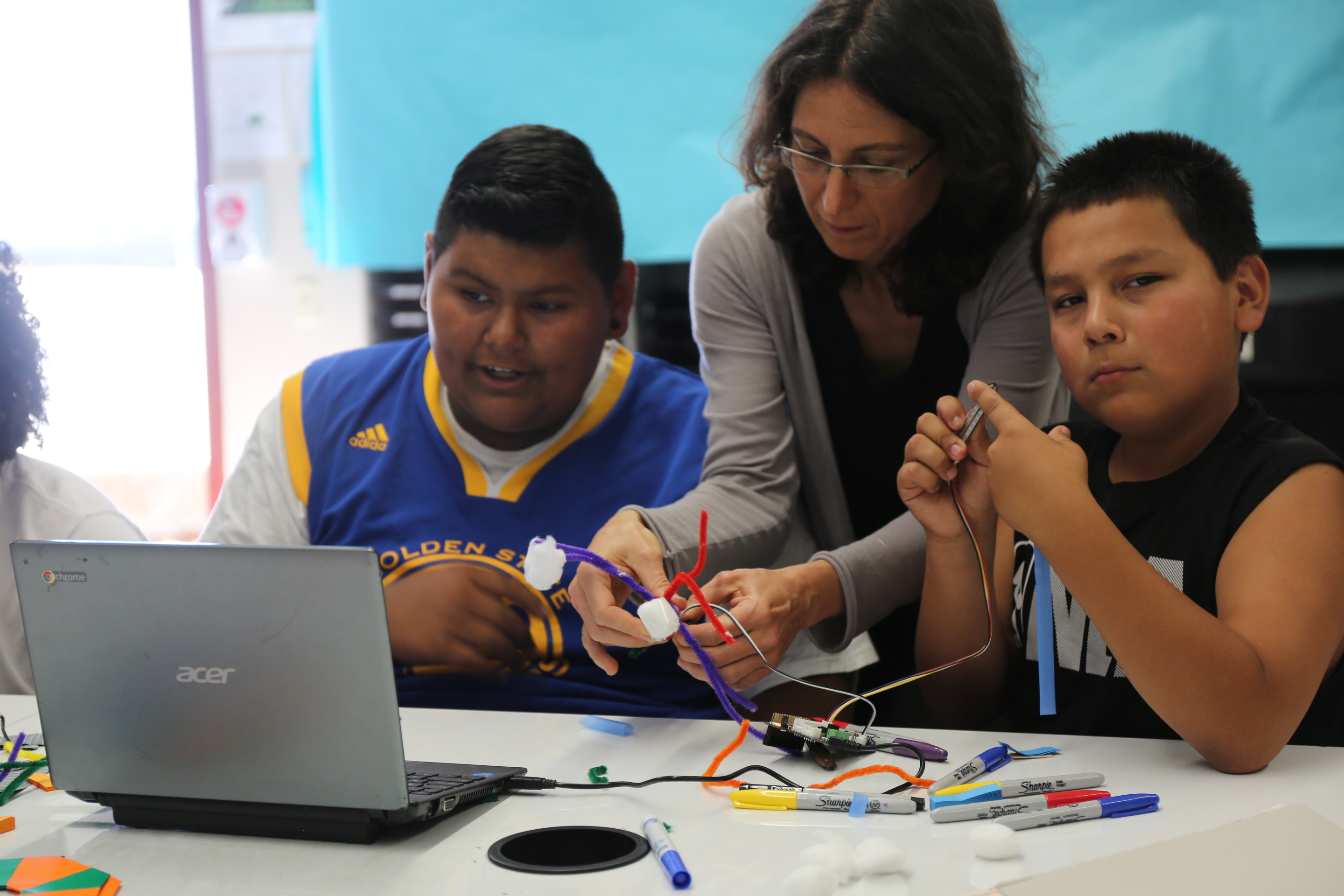 Like past collaborations, the recent educational one was the result of shared interests and available funding. Zhao Qui, project director of the Pomo Youth College and Career Success Project, explains that in October 2016 her organization received a Department of Education grant to fund new cultural and academic enrichment activities for native students; one area of concern was low access and achievement in math and science. At around the same time, the Blum Center received funding from the National Science Foundation to support development engineering students working on InFEWS (Innovations at the Nexus of Food, Energy, and Water Systems) for low-income communities facing extreme challenges. And the CARES team, energized by development engineering graduate students and Global Poverty & Practice (GPP) undergraduate students, was ready for a new collaboration.
Like past collaborations, the recent educational one was the result of shared interests and available funding. Zhao Qui, project director of the Pomo Youth College and Career Success Project, explains that in October 2016 her organization received a Department of Education grant to fund new cultural and academic enrichment activities for native students; one area of concern was low access and achievement in math and science. At around the same time, the Blum Center received funding from the National Science Foundation to support development engineering students working on InFEWS (Innovations at the Nexus of Food, Energy, and Water Systems) for low-income communities facing extreme challenges. And the CARES team, energized by development engineering graduate students and Global Poverty & Practice (GPP) undergraduate students, was ready for a new collaboration.
The task for the co-design was to integrate native activities and sensibilities into STEM education. Says George Moore, a UC Berkeley mechanical and development engineering graduate student, who taught at the summer workshop, “It became clear in conversations with the PPN that it was hard to get the native students to apply themselves in the STEM disciplines. Institutionally, it just wasn’t structured for them. But these students got really engaged at the workshops and are really good at math and science.”
According to Moore—and other participating UC Berkeley students, including GPP students Dor Chavoinik, Grace Harrison, and Arielle Levin and Elena Duran, a PhD student in Graduate Group in Science and Mathematics Education—what works best is listening and not imposing views on what works in a STEM-based activities. Among the decisions were to teach engineering design through Pomo Pinoleville basket-making techniques and to engage students in 3D printing designs from local art and nature.
Qui says the workshops and maker space are generating excitement among the students to get into STEM fields. “We have a college career counselor coming to the classroom,” she notes. “The students have a sense these are high paying jobs. Yet for native people, we’re not just looking at the pay. We’re looking at how we can use the STEM program to serve our own community around solar power, rain catchment, and other sustainable and environmental solutions.”
For graduate student Pierce Gordon, the co-design approach is crucial for mechanical/development engineers like himself working in poor communities. Gordon says co-design is “de-colonizing,” as it simultaneously aware of the deep history of technological interventions and adamant that everyone be heard, understood, and acknowledged. Continues Gordon, “If we don’t do that, then we’re doing the very similar kind of harm that many people have done over the history of international development and interventionist work as a whole.”
Gordon, who is finishing his PhD dissertation, which includes case studies of co-design efforts in the United States and Botswana, says the first priority of development engineering work is not to get research publications, funding, or material for teaching classes, but to benefit marginalized communities. “It is to figure out what the community wants, because this research moves at the speed of trust. Once you build up that trust, you have the opportunity to build up to collaborations and research outcomes and beneficial activities that you didn’t even know could have existed.”
For Angela James, one very specific outcome of the 10-year collaboration is her children’s interest in STEM. “My daughter has been a participant in CARES since she was four. She’s 14 now. She’s very comfortable leaving Ukiah. She’s looking at a lot of different colleges. All her career interests are science-based. My son is right behind her and just the same.”
James, who was on the UC Berkeley campus on July 13, 2018 with a group of Native American high school students, says the days of cultural and educational isolation can end for her tribe and others in California. “My goal has been to open the minds of our youth and introduce them to college and science, and teach them how to build positive working relationships with people outside their immediate circle,” says James. “It is important that the university has the right individuals involved in a collaboration—people who are willing to advocate for the human approach, get to know the individuals, and ask about background and culture. An important part of this collaboration has been that our voice is finally being heard.”
Research about this collaboration was partially supported by the National Science Foundation’s Research Traineeship in Innovations at the Nexus in Food, Energy, and Water Systems (Award No. 1633740).
A Technology for Trauma Care
By Veena Narashiman
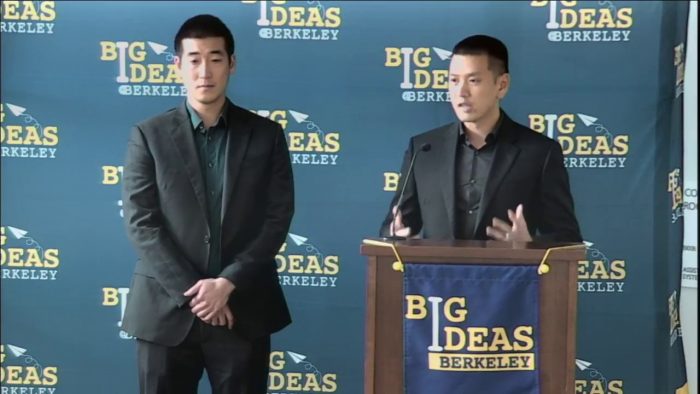 An injured soldier is rushed to a field hospital and is bleeding out. A surgeon needs to give the soldier meds to speed up her clotting. But too much or too little will kill her. The doctors rely on lab equipment to determine dosage; however, the large machine was never designed for field use. The surgeon is caught between an educated guess and blind dosing, putting the soldier’s life at risk.
An injured soldier is rushed to a field hospital and is bleeding out. A surgeon needs to give the soldier meds to speed up her clotting. But too much or too little will kill her. The doctors rely on lab equipment to determine dosage; however, the large machine was never designed for field use. The surgeon is caught between an educated guess and blind dosing, putting the soldier’s life at risk.
This was the story that Jeffrey Lu and Johnathon Li heard from a U.S. Air Force vascular trauma surgeon. The two old friends, UC Davis graduate students in biomedical engineering and animal science, realized they had possibly stumbled upon a market gap for a mobile blood clotting monitoring device.
After conversations with UC Davis doctors, their hunch was confirmed. Not only did they learn that traumatic injuries which disrupt blood clotting are the second leading cause of preventable death in developed countries, they discovered that mobile blood clotting solution could had worldwide application—from the frontlines of the war in Syria to rural areas in Sub-Saharan Africa.
Lu and Li also learned that with current technologies, an injured soldier may not receive treatment for up to 24 hours; and in civilian hospitals, patient treatment can be delayed three hours. The technicians and surgeons they interviewed said they wanted a device they could use in the operating room, circumventing the time involved in sending samples to the lab. Surgeons especially complained that when they got back lab results, the information was often obsolete because the patient’s condition had changed from further bleeding out.
“Current [blood-clot testing] devices are like using microwaves to cook,” said Lu. “It works if you don’t move it, and occasionally they come out great, but more often than not you’re just going to be disappointed.”
Or as Dr. Joseph M. Galante, the trauma medical director at UC Davis Medical Center, put it: “Undiagnosed coagulopathy [bleeding disorder] in trauma patients is associated with greater transfusion requirements, longer intensive care unit and hospital stays, and greater incidence of multi-organ failure or death. Patients with uncorrected coagulopathy are eight times more likely to die within the first 24 hours following trauma.”
Lu and Li spent part of their graduate school years working on the project they dubbed Innovis Medical. The partners began to understand their competition, their possible business model, and the people they needed to cultivate to make the best possible medical device.
In October 2017, Lu and Li turned to the Blum Center’s Big Ideas student innovation contest, to further shape and fund their idea. Big Ideas is open to undergraduate and graduate students at all 10 UC campuses and had a contest category that fit their invention: Hardware for Good, made possible through the generous support of the Autodesk Foundation. The contest put them through a nine-month project incubation, mentoring, and application process that Lu and Li saw was crucial to their company’s development.
“In entrepreneurship, you’re not selling your idea, you’re selling your network,” said Li. “Big Ideas participants enter Berkeley’s well-oiled machine, and their biggest advantage is their network.”
By meeting new people and potential advisors, the Innovis Medical founders realized they needed to pivot their strategy. Lu and Li decided to prioritize the civilian market instead of battlefield situations and use more layman language to describe their product.
At the 2018 Big Ideas Pitch Day before winning a first place prize, Lu went into the specificities of the device: “Our solution is a portable medical device that uses a solid state sensor to track an electrical property of blood known as bioimpedance as it clots. Our device produces graphs and data similar to the current state of the art device, but without the bulky sensor mechanical components. The sensor itself is a disposable cartridge with no mess to clean up, no chemicals to work with. With a solution designed specifically to mobility, blood clot tests are no longer restricted to laboratories but can be used in a battlefield, operating room and even the comfort of your own home.”
At the pitch, Lu further argued that tests during surgery, which take 30 minutes to receive back from the lab, could be performed in the operating room within four to 10 minutes. Post-surgery patients who previously needed to make a trip to the hospital every few weeks to have their blood thinner dosage checked, could run the tests themselves at home—much like diabetic patients who are able to track their own insulin levels.
In January 2018, Lu and Li joined UC Davis’ Inventopia, a makerspace for startups, where they were able to witness the production of their device’s sensor. The next month, they attended Meet the Experts Night at UC Berkeley, whey they were connected to Rhonda Shrader, director of the Berkeley-Haas Entrepreneurship Program, who referred them to contacts throughout the Bay Area.
Innovis Medical estimates significant reach and cost savings. Its market could include an annual 672,000 U.S. military trauma cases, 15 million U.S. civilian cardiac surgeries, and 7 million disaster-related surgeries in the developing world. As for costs savings, Innovis estimates the 15 million annual civilian patients of cardiac surgery could save up to $7,000 per operation. In developing countries, Innovis believes its device could be crucial in setting where reliable energy and technicians may not be available.
Lu and Li recently expanded their business plans through the UC Berkeley Innovation Corps course and were accepted to the national I-Corps incubator for scaling university-based innovations run by the National Science Foundation.
The founders also have launched a collaboration with UC Davis Medical, where civilian and military surgeons are using the Innovis device to directly test human blood from cardiac patients alongside status quo devices. Lu said sensors are being deployed for clinical tests with the aim to iterate the device to address as wide a range of patients and blood types as possible. He and Li hope to get FDA approval by 2021.
Alice Agogino Wins Highest U.S. Award for Mentoring
Blum Center Education Director Alice Agogino has been named winner of the Presidential Award for Excellence in Science, Mathematics and Engineering Mentoring, the government’s highest honor for mentors who have worked to expand talent in science, technology, engineering and mathematics (STEM).
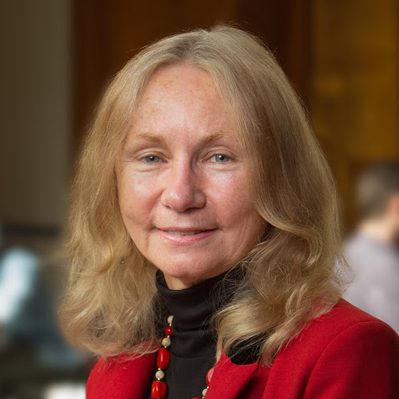 The award was announced June 25 by the White House Office of Science and Technology Policy and the National Science Foundation. Agogino, the Roscoe and Elizabeth Hughes Professor of Mechanical Engineering at UC Berkeley, was one of 41 honorees to receive the award at a ceremony last week in Washington, D.C.
The award was announced June 25 by the White House Office of Science and Technology Policy and the National Science Foundation. Agogino, the Roscoe and Elizabeth Hughes Professor of Mechanical Engineering at UC Berkeley, was one of 41 honorees to receive the award at a ceremony last week in Washington, D.C.
Professor Agogino has had a long and illustrious history of mentoring university students and junior faculty as well as engaging with local schools, museums and organizations to engage K-12 students in STEM topics. To support engineering students at UC Berkeley, she created a tiered mentoring network, in which senior doctoral students advise masters and undergraduate students. Over the years, she has been in high demand as a mentor by those who want to use their STEM educations for positive social impact. She also has built a reputation for designing courses that attract a high percentage of women and under-represented minorities.
At the Blum Center, Professor Agogino has been pivotal in creating the new field of Development Engineering, whose mission is to reframe development and the alleviation of poverty by educating engineering and social science students to create, test, apply and scale technologies for societal benefit. Development Engineering students, she has written, must learn “21st century skills”—interdisciplinary, team-based methods that are oriented to seeing problems from multiple viewpoints (quantitative, qualitative, ethnographic) and applying them through entrepreneurial pathways.
Professor Agogino is not new to awards. She is a member of the National Academy of Engineering and is the previous recipient of an ASME Ruth and Joel Spira Outstanding Design Educator Award “for tireless efforts in furthering engineering design education.” At UC Berkeley, she has received Chancellor Awards for Public Service, a Chancellor’s Award for Advancing Institutional Excellence and a Faculty Award for Excellence in Graduate Student Mentoring. She was elected a Fellow of the American Society of Mechanical Engineers, has won many best paper awards and has been honored with a National Science Foundation Distinguished Teaching Award and a AAAS Lifetime Mentor Award, the latter for increasing the number of women and African- and Hispanic-American doctorates in mechanical engineering.
Her work in decision-analytic approaches to engineering design led to a whole new field of research, and her research in mass customization became a patent-buster for licenses in database-driven Internet commerce. If that were not enough, Squishy Robotics, Inc., Professor Agogino’s startup company, recently was awarded a National Science Foundation Small Business Innovation Research grant to conduct research and development work on “Shape-Shifting Robots for Disaster Rescue, Monitoring and Education.”
Professor Agogino has explained that she was inspired to become a mentor due to her own experience at the University of New Mexico, where she was the only female mechanical engineering undergraduate student, and at UC Berkeley, where she became the first woman to receive tenure in her field. Professor Agogino uses a mentoring approach that she calls “designing for diversity.” By emphasizing the social impact of solving research problems, this strategy helps students feel connected to their work and motivated to persist in engineering.
Development Impact Lab Conference Speaks to Future of Engineering for Poverty Solutions
By Veena Narashiman and Blum Center News
In 2013, the Blum Center and the Center for Effective Global Action founded the Development Impact Lab, to launch the new field of Development Engineering and create a model for university-based poverty action labs. Since that time, the Development Impact Lab, with support from USAID, has tested over 135 innovations and engaged more than 500 students, 400 experts and 375 organizations, involving 16 universities in the United States, India and Uganda.
On June 4, key representatives from the network met at the Blum Center to discuss their five years of findings and outcomes. Temina Madon, executive director of the Center for Effective Global Action, summarized Development Engineering as enabling doctoral students from multiple disciplines to research and test poverty solutions as part of their dissertations. A panel entitled “Institutionalizing the Field of Development Engineering” included UC Berkeley Mechanical Engineering Professor Alice Agogino and Economics Professor Paul Gertler, who attested to the long need for such a PhD minor. Rachel Dzombak and Sophi Martin, who earned their PhDs at Cal and are serving as the Blum Center’s doctoral fellow and innovation director, respectively, also offered anecdotes about rising interest in Development Engineering.
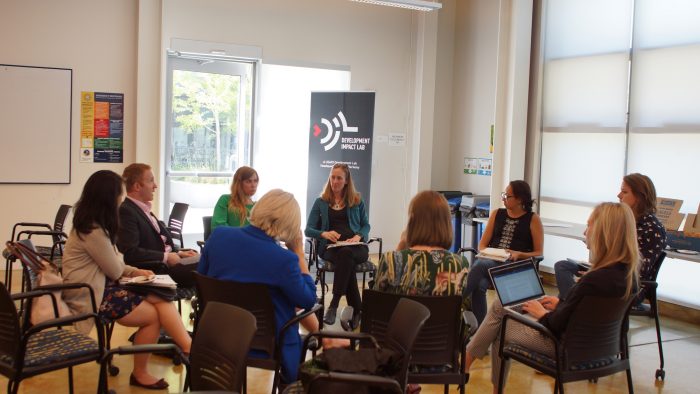
“Thanks to this new field, doctoral students considering international development now have a way to harness this aspect of their academic interests,” said Professor Agogino, who is chair of the Graduate Group in Development Engineering and Education Director of the Blum Center.
Professor Gertler gave an overview of the Development Engineering journal, an open access, interdisciplinary publication that applies engineering and economic research to the problems of poverty. The two-year old journal, he explained, is giving scholars academic credit for novel research that previously had not been widely acknowledged or disseminated.
Katherine Dow, program manager of the Global Development Lab, said that the Development Impact Lab has helped USAID better understand emerging trends in science and technology for development and the role that university professors, researchers and students can play. She also said the UC Berkeley collaboration has helped bring quality data and data methodologies to government decision makers, allowing for a redefinition of problems.
Data gathering around energy reliability in Ghana was a focus of one session. Hana Freymiller and Jeffrey Garnett from the U.S. Government’s Millennium Development Corporation, gave an overview of its $535 million, five-year project in Ghana, which aims to decrease the country’s energy outages by 20 percent by 2021. The Millennium Development Corporation is collaborating with the Development Impact Lab and UC Berkeley’s Lab11 to better understand where and when outages are happening in Ghana—using a mobile app called Gridwatch. GridWatch enables utility customers to automatically report outages through sensor technology on their cell phones. The data collected is more accurate in many cases than what the utility company can gather, and can show a variety of possible solutions for energy investment, energy savings, economic development, and improved quality of life.
“People are worried about the 1.1 billion people who don’t have access to electricity worldwide,” said UC Berkeley Business and Economics Professor Catherine Wolfram, a GridWatch project lead. “But what about those who don’t have reliable access? As urbanization trends move forward, it’s really important to understand reliability and measure how investment changes with reliability.”
The daylong conference also featured presentations by faculty and current and former PhD students associated with the Development Impact Lab.
UC Berkeley Bioengineering Professor Dan Fletcher summarized the progress of CellScope, an invention from his lab that adapts the camera of a mobile phone or tablet computer into a high-quality light microscope for disease detection in low-resource areas. Since 2008, Professor Fletcher has used CellScope to test more than 83,000 patients, analyzing the results in a dozen journal articles—and now is aiming to mass produce 10,000 CellScopes for use in rural areas in Africa. His insight was: “Don’t make technology for development as simple as possible; make it as automated as possible.”
Erin Kelly, a PhD candidate in Agricultural and Resource Economies at UC Berkeley presented a mobile phone application called SmartMatatu, designed to prevent the high incidence of traffic accidents among privately owned minibuses in Nairobi, Kenya. The application uses GPS and other mobile technologies along with affordable, off-the-shelf car sensor devices to collect and send location, ignition, route, distances, speed, acceleration and deceleration information, to show Matatu drivers when, where and how they are driving unsafely. According to a six-month survey of SmartMatatu users, the app has helped drivers raised their profits and reduce repair costs–demonstrating that visibility of data can influence driver behavior and productivity.
Danny Wilson, a Development Engineering alumnus, presented the outcome of his doctoral research: Geocene.com. With Development Impact Lab funding, Geocene has created hardware and apps for data logging and analysis. Wilson talked about findings from a survey of cookstoves users in Sudan in which people over-reported use of their indoor pollution-reducing stoves, making the survey findings unreliable. With Geocene, Wilson aims to create dashboards for monitoring cookstoves across many countries. The goal, he said, is to understand what are the best cookstoves for specific conditions, so people will actually use them. He noted that nearly two million deaths could be prevented annually by replacing cooking fires and inefficient, smoky stoves.
Susanna Berkouwer, a PhD candidate at the UC Berkeley Department of Agricultural and Resource Economics and the Haas School of Business’s Energy Institute, reported on the latest findings from the Development Impact Lab’s Rural Electric Power Project, which is utilizing novel data collection and analysis tools. She explained that Kenya is working on a last-mile connectivity project to power all households by 2020, and is collaborating with her group to better understand how energy access does (or doesn’t) lead to higher consumption, income, health and education. The results, she said, could empower both citizens and governments.
The other presentations included: Niall Keleher, a UC Berkeley School of Information PhD Candidate, presenting the results from Assistant Professor Joshua Blumenstock’s research applying machine learning to high-resolution satellite imagery to measure regional poverty in Africa; Chinmayee Subban presenting Berkeley Lab Water-Energy Resilience Research Institute’s progress on using charge-based salt water removal to clean brackish water; and Dana Hernandez, a Development Engineering student, summarizing UC Berkeley Civil and Environmental Engineering Professor Ashok Gadgil’s ongoing research on removing arsenic from groundwater.
“The Development Impact Lab has had a tremendous five years,” said Heather Lofthouse, the Blum Center’s director of special projects. “By partnering with USAID and other governmental and nongovernmental organizations, we have been able not only to generate new ideas—we have been able to implement real-world solutions.”
Big Ideas Abroad
In February 2018, Big Ideas Contest Director, Phillip Denny, traveled to Kampala, Uganda to explore opportunities for Big Ideas expansion in Africa, in partnership with Makerere University. Makerere—one of Africa’s leading institutions of higher education—has been a key partner of Big Ideas since 2013. Over the last five years Makerere’s involvement in Big Ideas has grown steadily, as has its reputation as a regional leader in fostering innovation and entrepreneurship among students. Big Ideas is working with Makerere to advance the mission of the competition, which challenges students to dream big about how they might change the world, and supports them to execute that vision.
“Like Big Ideas, Makerere provides a supportive ecosystem that helps students, particularly those who are in the early stages of innovation, realize their dream of making a positive impact on society,” said Denny.
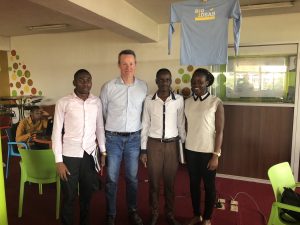
This year, over 50 student teams, representing over 150 students, from Makerere University submitted proposals to Big Ideas, and nine teams advanced to the final round—a record for Makerere. During his trip, Denny mentored teams as they worked to complete their final proposals. He was impressed by the creativity of their innovations, as well as the incredible energy and commitment shown by each team.
“What stands out to me in my work with Makerere students is that many of them are from communities that are directly impacted by the challenges the students are seeking to solve,” said Denny. “When you meet with them you immediately grasp their passion and dedication, which is undoubtedly fueled by their personal and first-hand experiences with the issues they’re trying to solve.”
Deborah Naatujuna, Engagement Manager for the Resilient Africa Network, which hosts the Big Ideas Contest at Makerere, noted the many ways Big Ideas has fostered student collaboration and innovation on campus.
“One of the requirements of the contest is to have a strong team, so students who ordinarily work alone have been able to onboard students from other disciplines. For example, engineering students will work with business students. We did not have this interdisciplinary engagement before, but the contest has improved collaboration between students from different disciplines,” said Naatujna.
The contest has also had a significant impact on students’ relationships with faculty members, breaking down barriers and fostering an innovator-mentor relationship that did not exist before.
“Big Ideas has fostered an innovator-mentor relationship that is not intimidating. Students at Makerere are used to working with academic supervisors in an environment that can often be intimidating for the student, but mentorship through Big Ideas is focused on constructive feedback and collaboration. Participating in the contest has helped students work with their professors in a more collegial way and develop close relationships with their mentors.”
When Big Ideas first launched at Makerere five years ago, the majority of proposals submitted were from male teams. Since then, the involvement of female students from Makerere has also grown.“In the beginning, we had very few females taking part in Big Ideas, but now we have more. Some of the teams are led by women while other teams are completely female. When female students worked with their male counterparts [before], the male students would do the majority of the work. Now we are seeing all-female teams as well as mixed teams in which everyone takes part,” said Naatujuna.
Innovations that were developed on Makerere’s campus include Mama-OPE, a cell-phone based lung monitoring device that helps diagnose pneumonia, and PedalTap, which won 3rd place in the highly competitive Global Health category. Mama-Ope was recently featured on CNN/Africa, and in 2017, PedalTap won Johnson & Johnson’s first Africa Innovation Challenge.
To learn more about the Big Ideas Contest, visit http://bigideascontest.org
Trailblazers: The Global Impact of Blum Center Female Faculty, Staff and Students
Gamechangers. Engineers. Innovators. Researchers. Entrepreneurs. These are just a few of the words that describe the outstanding women of the Blum Center ecosystem. In honor of National Women’s History month, the Blum Center recognizes the outstanding work, achievements, and global impacts of these trailblazing women.
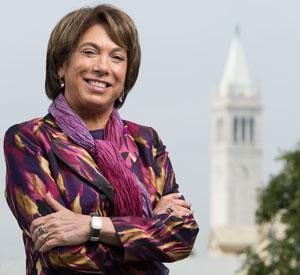
Laura Tyson, Board Chair, Blum Center for Developing Economies
Renowned economist, Laura Tyson, has spent a large portion of her career demonstrating how empowering women is morally right and economically smart, and that the economic and human-development costs associated with gender gaps are substantial. As co-author of Leave No One Behind, a “call-to-action” report of the UN Secretary-General’s High-Level Panel on Women’s Economic Empowerment, Tyson shows how gender equality and women’s economic empowerment are central to the vision of the Sustainable Development Goals, and cautions that progress has been too slow. In the UN report, Tyson identifies concrete actions the international community can take to expand women’s economic opportunities ranging from legal reform to changing business norms.
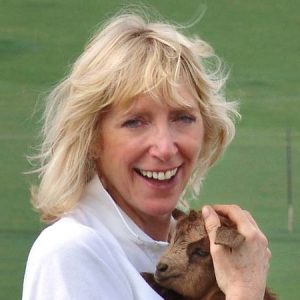 Erica Stone, Blum Center Founding Trustee, and President, American Himalayan Foundation
Erica Stone, Blum Center Founding Trustee, and President, American Himalayan Foundation
Over the course of her career, Erica Stone has worn many hats—fifth degree black belt, chef at Chez Panisse, and today, President of the American Himalayan Foundation. As the Foundation’s President, and particularly through the STOP Girl Trafficking initiative, Stone has had a profound impact on the lives of women and girls around the world. Each year, 20,000 girls from the poorest regions of Nepal are trafficked, which Stone attributes to three things: poverty, poverty, and poverty. By focusing on primary education, AHF lays a foundation that lifts girls out of poverty by giving them the skills, confidence, and respect they need to succeed. The STOP Girl Trafficking program started with 54 girls; today, 12,000 girls are safe in 500 schools across Nepal, on the path to a future full of hope. Learn more about STOP Girl Trafficking and the work of AHF here.
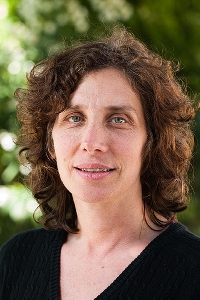
Dr. Laura Stachel, Big Ideas Winner and Founder, We Care Solar
In 2008, with funding from Big Ideas@Berkeley, Dr. Laura Stachel worked with an interdisciplinary team to design a low-maintenance solar electric system for a Nigerian hospital with a high maternal mortality rate. When surrounding health centers requested solar electricity in their labor rooms, the compact, rugged We Care Solar Suitcase was born. Ten years later, more than 3,000 We Care Solar Suitcases have served 1.4 million mothers and babies in 27 countries. These user-friendly, mobile and nearly maintenance-free suitcases, which take a couple of hours to install, have proved an important innovation in the fight against maternal mortality worldwide. Stachel’s goal is to “Light Every Birth,” working with Ministries of Health to ensure that every health center has reliable clean energy for childbirth. Learn more about Dr. Stachel and the global impact of her work here.
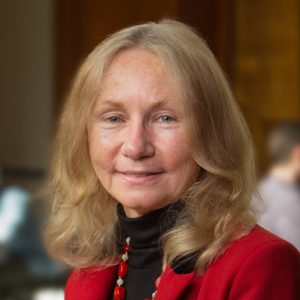 Alice Agogino, UC Professor of Mechanical Engineering and Blum Center Education Director
Alice Agogino, UC Professor of Mechanical Engineering and Blum Center Education Director
Professor Alice Agogino is a trailblazing mechanical engineer known for her work in bringing women and people of color into engineering, and her groundbreaking research into cutting-edge product design, intelligent learning and robotic systems, and sensor fusion, monitoring and diagnostic networks. As faculty Director at the Blum Center for Developing Economies, Alice has supported the growth of the development engineering program to include over 50% women, and helps build the interdisciplinary skills needed for students to create actionable and impactful research that is transferable from the lab to the field at scale. Watch Alice in action here on development engineering and here in sustainable products and services.
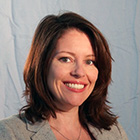
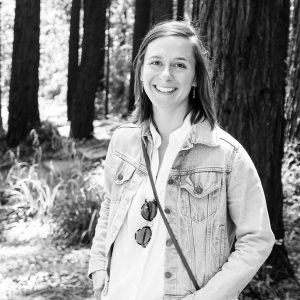 Dr. Sophi Martin, Blum Center Innovation Director, and
Dr. Sophi Martin, Blum Center Innovation Director, and
Dr. Rachel Dzombak, Blum Center Innovation Fellow
Many institutions recognize the need to transform their business practices to keep pace with a rapidly evolving technology landscape, but lack the tools needed to unlock the innovation potential of their organization. Dr. Sophi Martin and Dr. Rachel Dzombak are leaders within the Blum Center’s growing education portfolio that supports social enterprises, innovative individuals, and the larger entrepreneurship/innovation community on campus. Through their design- and lean startup-focused teaching and advising, Martin and Dzombak inspire students to take on the great challenge of transforming deep-seated societal problems. Learn more about Martin’s work here, and Dzombak’s work here.
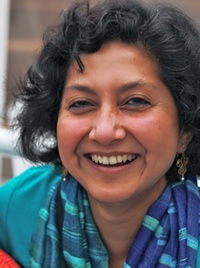
Isha Ray, UC Berkeley Professor and Blum Affiliated Faculty
There are few people in the world who know more about the intersection of gender equality and toilets than UC Professor Isha Ray. When UN Women asked Ray to determine whether or not there was greater gender equity in access to sanitation on account of the Millennium Development Goals, Ray didn’t know, but she made it her mission to find out. With her research partners and seed-funding from the USAID Development Impact Lab, Ray launched a new research project (TriSan) to understand the connections among sanitation, gender equality and human dignity. Throughout the course of her research, Ray found that sanitation programs are still being designed without fully acknowledging the social and biological needs of low-income women and girls. She has been advocating for the water and sanitation rights of women and girls globally ever since. In this moving Tedx Talk, Ray breaks down the relationship between dignity, gender, and toilets.
But First, Water
By Morgan Hillenbrand
On a typical day in the village of Mihingoni, Kenya, girls emerge at dawn, traveling down red clay paths against a backdrop of palm trees and corn stalk plants. The beauty of Mihingoni stands in contrast to the tough reality of their lives. These girls—some as young as six years old—are not in school. Today, like all days during the dry season, they will spend hours walking in search of that one element none of us can live without: water.
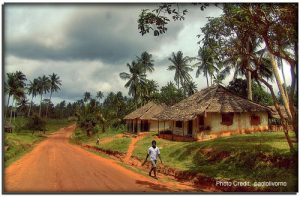 There is a saying in Swahili: “Maji Yaje Kwanza” which means “water is the first of many things”. The people of Mihingoni—most of whom are subsistence farmers—depend largely on rainwater for survival, but climate variability and long dry seasons continue to stunt crop yields. Low agricultural productivity decreases household income, and increases hunger. Lack of proper water, sanitation and hygiene leads to disease, and Kenya continues to have one of the worst under five mortality rates, globally. Families are forced to choose between sending their girls for water or sending them to school, and they choose water first. This limits the prospects for their future, and the cycle of poverty in Mihingoni continues. Until now.
There is a saying in Swahili: “Maji Yaje Kwanza” which means “water is the first of many things”. The people of Mihingoni—most of whom are subsistence farmers—depend largely on rainwater for survival, but climate variability and long dry seasons continue to stunt crop yields. Low agricultural productivity decreases household income, and increases hunger. Lack of proper water, sanitation and hygiene leads to disease, and Kenya continues to have one of the worst under five mortality rates, globally. Families are forced to choose between sending their girls for water or sending them to school, and they choose water first. This limits the prospects for their future, and the cycle of poverty in Mihingoni continues. Until now.
Ashley Miller—an alumnus of the Blum Center for Developing Economies at UC Berkeley—has spent the last five years working with the community of Mihingoni to design solutions that will increase their access to water. Miller first traveled to Mihingoni in 2013 when she and her classmate, Louisa Mwenda, took a seven hour drive from Nairobi to attend a family wedding.
“When I said ‘yes’ to that invitation I had no idea that the course of my life would change forever,” Ashley said. “Once I saw the impact lack of water was having on that community, I knew I had to get involved. I have been working with Louisa, her family, and the community on this issue ever since.”
Miller returned from Kenya, threw herself into fundraising, and one year and $21,000 later she was on a plane heading back to Kenya to implement the Maji Yaje Kwanza project. Determined to build a sustainable, community-led program, Miller and the team collaborated closely with Mihingoni Primary school, and asked local teachers to help her organize a community meeting where they could solicit and hear the thoughts, needs, and ideas of the community first-hand.
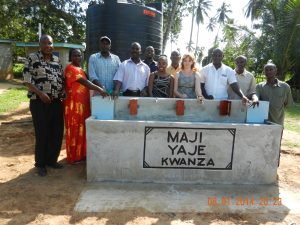 “I didn’t want to make any assumptions about what the community needed, or what the solution should be,” Miller said. “The meeting was entirely spoken in KiGiriama, which allowed those most affected by the project to fully express themselves and their needs. We wanted to put the people’s needs at the center of all of our work.”
“I didn’t want to make any assumptions about what the community needed, or what the solution should be,” Miller said. “The meeting was entirely spoken in KiGiriama, which allowed those most affected by the project to fully express themselves and their needs. We wanted to put the people’s needs at the center of all of our work.”
With just over $20,000, Miller and her team were able to hire 200 people to build and install drip irrigation pipes at the school for a school garden, hand-washing sinks outside of the boys, girls, and teachers’ latrines, two drinking water taps and a water kiosk that serves the entire community. Two 10,000-liter water tanks were provided, ensuring water access even during periods of low rainfall. The crew also created a basin for soapy sink water to be recycled for cleaning latrines. And that wasn’t all.
Maji Yaji Kwanza collaborated with the local municipality to enact a pipeline expansion across 2.5 kilometers, which would build on the work of several World Bank water projects being implemented in the area. But project delays and variable water pressure brought additional challenges, and the provision of water was inconsistent. The community needed to connect a well to existing infrastructure to ensure water provision year-round. By the summer of 2017 the team had hired a geologist, completed a hydrogeological survey, and secured the necessary permits from the Kenyan government to build the well.
“We’ve accomplished so much, learned an incredible amount, and we’re just getting started,” Miller said. “News of our success has spread throughout the region, and that has raised people’s hopes and expectations. We are personally accountable to these communities, and that is what drives us to get this done.”
Maji Yaje Kwanza is currently fundraising with the goal of raising $10,000 to complete construction of the underground well and water pump. Once the project is completed, it will serve roughly 3,000 people.
“I want people to imagine a life where you can’t turn on a tap. Can’t turn on the shower, flush the toilet. A life where you look at your daughter and say, ‘you can’t go to school; we need you to go for water today’. People shouldn’t have to make those types of choices. This is a solvable problem, and we all need to be part of the solution.”
To contribute to Maji Yaje Kwanza through the official UC Berkeley crowdfunding campaign, visit https://crowdfund.berkeley.edu/project/8853 .The current crowdfunding campaign cycle will be live until February 23 at 11:59 p.m. PST. To learn more about how The Blum Center is supporting students to change the world, visit https://blumcenter.berkeley.
ABC News Features Big Ideas Winner Tabla. Watch here!
The Today Show Features Big Ideas Winner Bolt Threads. Watch here!
Blum Center Alumni Take UNLEASH
By Francesca Munsayac
The Blum Center is pleased to announce that three Blum-nominated social innovators and their teams won recognition at UNLEASH, a nine-day-long global development event held in Denmark. Zoe Bezpalko won gold in Urban Sustainability, Jordan Freitas took silver in the Health, while Rachel Voss received bronze in Food. In addition, other outstanding attendees from the Blum Center ecosystem included m-Omulimisa founder Daniel Ninsiima and undergraduate bioengineering student Fanice Nyatigo.
By partnering with UNLEASH, a global non-profit initiative aiming to address the Sustainable Development Goals (SDGs), the Blum Center hopes to help its alumni reach greater heights, supporting their efforts to bring their social ventures to fruition.
Meet the cohort
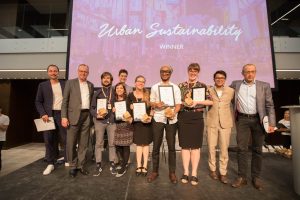
Ninsiima is a Michigan State graduate who partnered with colleague and fellow MSU alumni Linlin Liang to develop “m-Omulimisa”, a phone-based platform that increases access to extension services for rural Ugandan farmers by providing critical agricultural information via SMS messaging in a local language.
Since 2015, Bezpalko’s role as an Autodesk’s Design Lead remains crucial to The Blum Center’s partnership with the Autodesk Foundation. Bezpalko has helped infuse our programs with a greater focus on impact design and sustainability, specifically to solve social and environmental challenges.
Freitas is a completing a computer science PhD program at Berkeley while working with a research group called Technology and Infrastructure for Emerging Regions (TIER). Freitas’ research concentrates on improving methods of impact analysis and sharing data responsibly.
Nyatigo is an bioengineering student interning at Fletcher Labs, which aims to codify and control biological structures in order to develop ways for therapeutic intervention. Specifically, Nyatigo — under the tutelege of a PhD student — works to combine machine learning concepts and other imaging processing techniques to improve the quality of the image of the biological structures.
Before becoming a PhD student at UC Santa Cruz, Voss worked as a Program Coordinator at the UC Berkeley Blum Center. Now Voss is conducting research that focuses on participatory farmer trials in order to boost yields through improved soil and water management in Senegal.
An Experience of a Lifetime
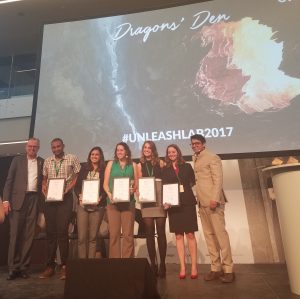
Bezpalko and her team created Demolition4Design, a database that disseminates information to link designers, developers, manufacturers and engineers. The database will spread knowledge on sustainable solutions while diverting landfill wastes to new markets; ultimately, creating lasting impacts for environmental, economic and social development.
Freitas was one of the makers if Afterain, a free toolkit designed to aid displaced individuals experiencing trauma and other mental health issues through art therapy. In addition, Afterain will sell high-quality notebooks locally and overseas to generate revenue to fund rehabilitation camps.
Through HarvestHub, Voss and her fellow innovators wanted to connect farmers in Tanzania to post-harvest services, such as storage, processing, transportation, and networking to markets. This mobile platform will allow farmers to contract services on demand, which will improve their livelihood and reduce food loss.
“I would probably never have applied to UNLEASH if the Blum Center hadn’t put it on my radar. I’ve made so many connections to inspiring, passionate people around the world who are now my friends but also potential partners in my future work. I’ve never done anything like UNLEASH before but I am so grateful I had the chance to attend.” said Voss.
GPP Alumni Reflect on Post-Grad Life
From the East Coast to the Bay Area, several esteemed Global Poverty and Practice Minor program alumni gathered in Blum Hall for a panel hosted by GPP to speak about their experiences after graduation. For the majority of the graduates, the minor was crucial in shaping their career paths and passions — and in some cases, far more impactful than their majors.
Staying true to the nature of GPP, each alumnus had different majors and, after graduation, entered different fields. Although they are all still trying to “figure it out”, these returning students had plenty of advice to give to current program students.
Where are they Now?
Farnaz Malik, a 2011 graduate who has a degree in Integrative Biology, said that the minor had a profound effect on what she did post-graduation. Through GPP coursework, Malik began to foster an interest in epidemiology, a branch of medicine that deals with the incidence, distribution, and possible control of diseases and other factors relating to health. Now, six years and two degrees later, Malik works at Vital Strategies, a global health nonprofit in New York that partners with governments to design public health initiatives and build better health systems — particularly in low and middle income countries. For Malik, the GPP minor has come full circle now that she can further her interests in epidemiology at Vital Strategies.
2015 graduate Shrey Goel is a case manager with Asian Health Services and volunteer at the Berkeley Free Clinic. In his undergraduate years, Goel majored in Environmental Sciences, but recalled how his GPP courses were the ones that interested him the most. He discussed how the clinic is furthering this education through a more hands on approach. After graduation, he landed a job as a research coordinator at UCSF where he learned plenty about clinical research, but where he was also exposed to the ethical dilemmas embedded in research.
“I think the years since I graduated really enriched me in challenging my own role and my own position in the institutions I participate in,” Goel said. “I hope to pursue a career in medicine in a way that is more authentic to what my actual interests are.”
Nikki Brand, a Master’s student in International Policy Studies at Stanford, graduated from Cal in 2013 with a degree in Peace and Conflict Studies and immediately moved to Guatemala to work as a field consultant with Community Empowerment Solutions, supporting women micro-entrepreneurs in marketing and selling products with health and environmental benefits. In 2014, Brand started at USAID as a program assistant, which “was not glamorous” at first, but after a year Brand was promoted to a team tasked with applying digital tools and approaches to support small farmers around the world.
Brand traveled to multiple countries — Ghana, Nepal, and Cambodia, to name a few — conducting workshops and research on ways that digital tools such as mobile money, digitally-enabled extension services, and geospatial analysis can support smallholder farmers. Brand left USAID in August to start a Master’s at Stanford and will be continuing to focus on the use of technology and data in international development.
2011 Graduate Lauren Herman said her story was far from linear. After she graduated with her B.A. in Peace and Conflict Studies, she received the Judith Lee Stronach Baccalaureate Prize and traveled to Nairobi, Kenya to do consumer outreach, which was inspired by her Practice Experience working with a microcredit program. When she didn’t get accepted to a public policy fellowship program she had applied for after she returned from Kenya, Herman said she took some time off to seriously reevaluate her goals and wants. After initially preparing to apply to graduate school, Herman secured a job as the Director of Communication and Training at a consulting and organizational management company where she’s worked for the past four years. But she credits her time off as fundamental to finding her own path.
“What I hope you take away from all this is no one has it set in stone,” said Herman. “ It’s all about taking it day by day and asking others for help.”
Lastly, Areidy Beltran, a Class of 2015 alumna who studied Environmental Earth Sciences, said her first job was an environmental/geotechnical engineer in Oakland. After a year, however, Beltran discovered that she wanted to work on issues of energy and climate change on a broader scale. This led her to return to Cal for a Master’s in Earth and Planetary Science and pursue additional short-term programs focused on computer science and business education. Now in order to meld her interests in business and environmental science, Beltran said she is considering a job in energy consulting.
The Road to Grad School
Many students in the audience wanted to know how these graduates weighed in on the value of graduate school and what were the best strategies to approaching the next step in academia, if they wished to do so.
Brand said she talked to at least 100 people before applying to grad school, which led her to some valuable advice. First, is to have at least two different jobs before entering graduate school in order to get a feel for what one should study. Similarly, Beltran said taking a year off led her to the realization that she did not want to pursue environmental engineering as a career. Second, Brand advised students to pay attention to job descriptions of positions they want to be in 5 years in the future, and noted many of them will require a graduate degree and at least two years of work experience.
“Wait until you at least have a more specific sense of what you want to do in life,” said Brand “Now I have a better sense of what direction I want to go in.”
Change is Okay
When confronted with sobering statistics and facts on global poverty, students of the GPP minor admitted that the work of global social development can often seem overwhelming. The speakers, in turn, recommended ways to deal with “burnout”.
Herman reminded students that the small ways in which the minor engages them to be critical thinkers matter, as well. Although progress is slow, Herman said it is crucial for students to not put too much on themselves and to “slow down and breathe.”
Beltran assured students that it is okay to change your mind, even after graduation. She said that she considers jobs right after graduation as experiences that should lead to self-reflection and change.
Goel believes the issue of scale underlies the struggle to find purpose after graduation for many students, meaning that students may feel pressured to have a large impact on a large scale. He found focusing on concrete skills development helped him find a sense of purpose.
“By really making sure I’m in spaces where I’m learning something very specific and I’m doing something very specific, I can gain an understanding of the connection between output and input,” said Goel. “So I understand what my effort and work is worth and can actually accomplish.”
Through their different experiences, these alumni imparted their knowledge upon the next generation of global development changemakers. The Blum Center is proud to see its graduates contributing to the GPP community and is looking forward to what they will accomplish next.
InFEWS Welcomes New Graduate Cohort
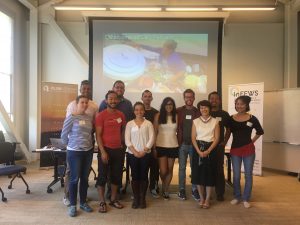 Last month, the Blum Center hosted a networking reception for its inaugural cohort of Innovation at the Nexus of Food, Energy and Water Systems (InFEWS) doctoral students. InFEWS is a prestigious National Science Foundation-funded graduate research program that uses the Development Engineering (DevEng) methodology to create solutions for challenges that span food, energy and water systems in low-resource settings domestically and abroad.
Last month, the Blum Center hosted a networking reception for its inaugural cohort of Innovation at the Nexus of Food, Energy and Water Systems (InFEWS) doctoral students. InFEWS is a prestigious National Science Foundation-funded graduate research program that uses the Development Engineering (DevEng) methodology to create solutions for challenges that span food, energy and water systems in low-resource settings domestically and abroad.
An exceptional and well traveled-group of 19 fellows, the InFEWS Fall 2017 cohort’s research focuses range from environmental science and policy, economics, engineering to social welfare, all of which will help enhance the program’s collaborative and interdisciplinary process. During the reception, Drs. Alice Agogino and Sophi Martin showcased the wide range of resources available to the Fellows, and students shared their research interests and networked with faculty. Students’ research interests include important topics such as resource recovery in rural settings, international development policy evaluation, and access to safe water.
The DevEng program and the Blum Center are excited to welcome these innovative and highly-motivated individuals to InFEWS. Check out infews.berkeley.edu to learn more about the program and to read about the cohort’s progress.
